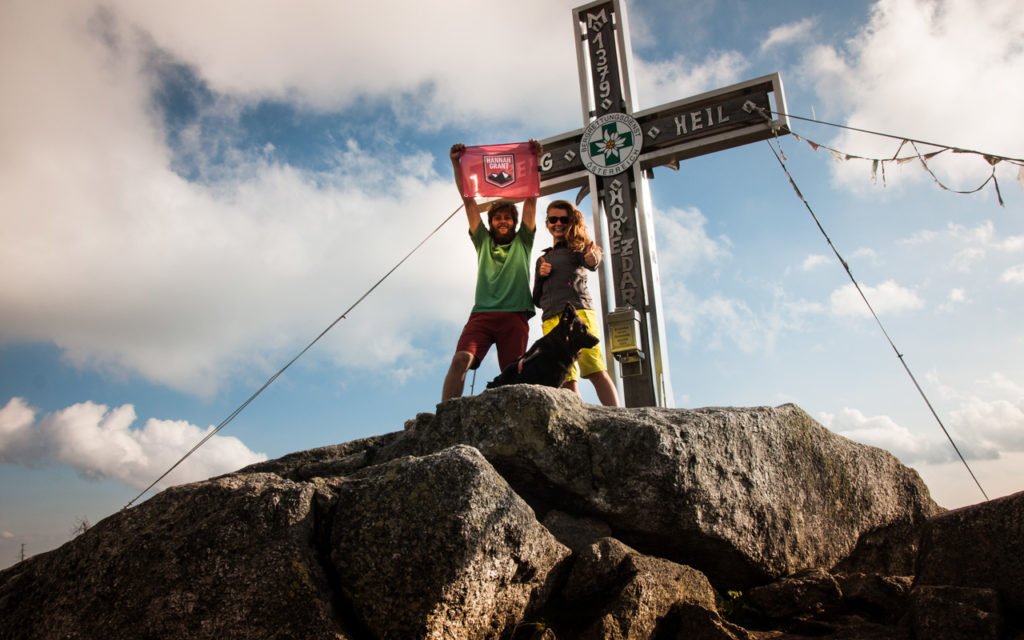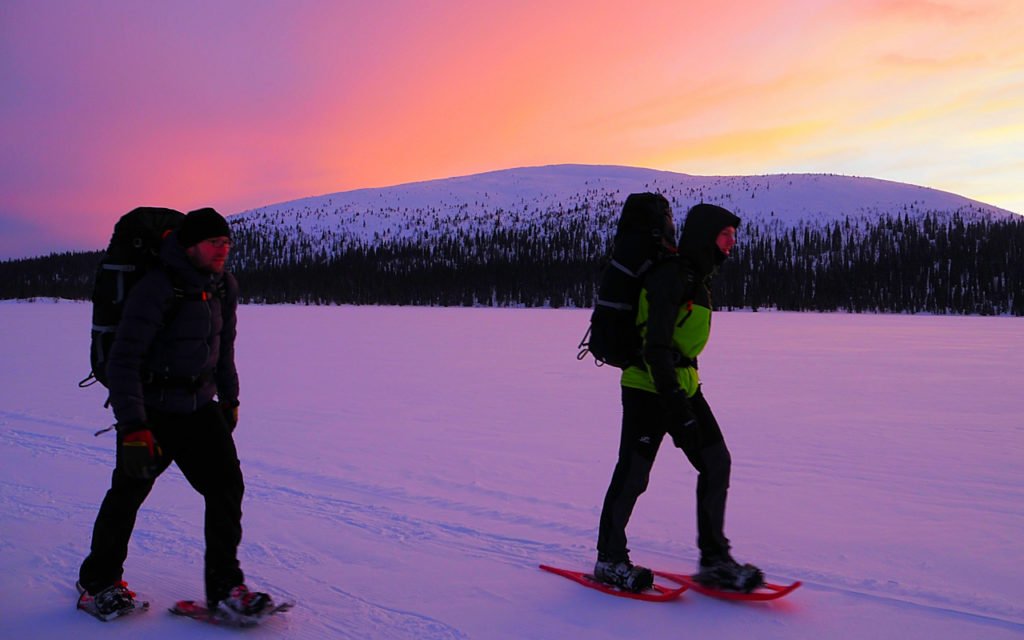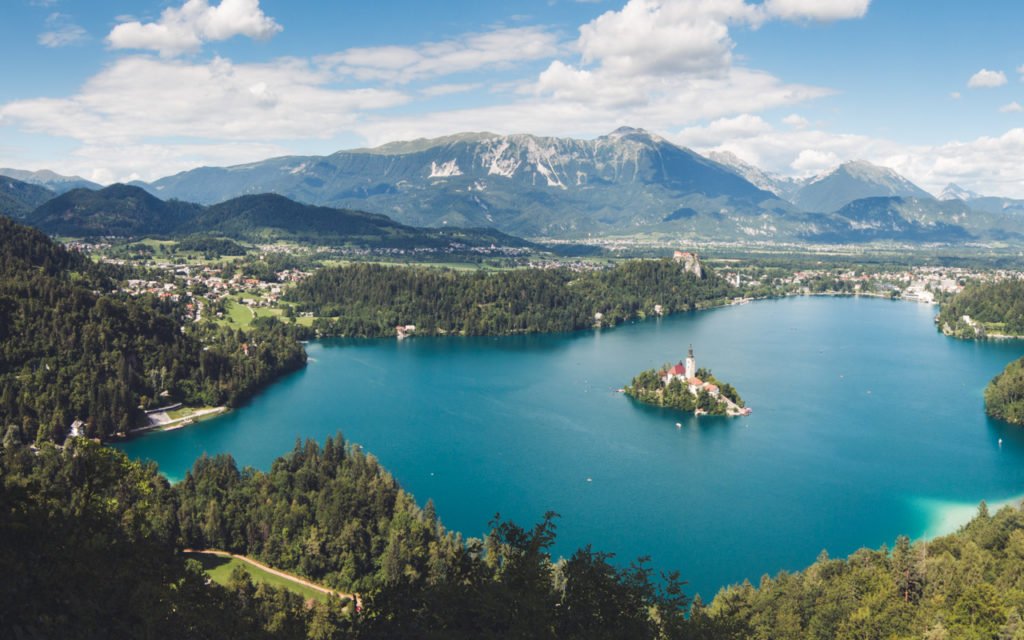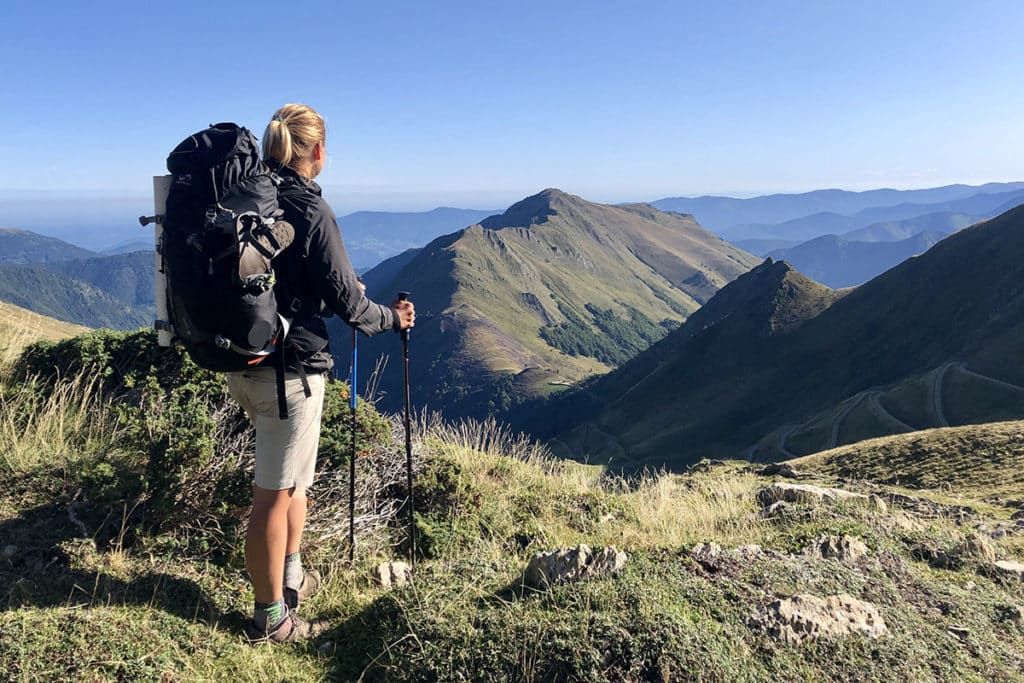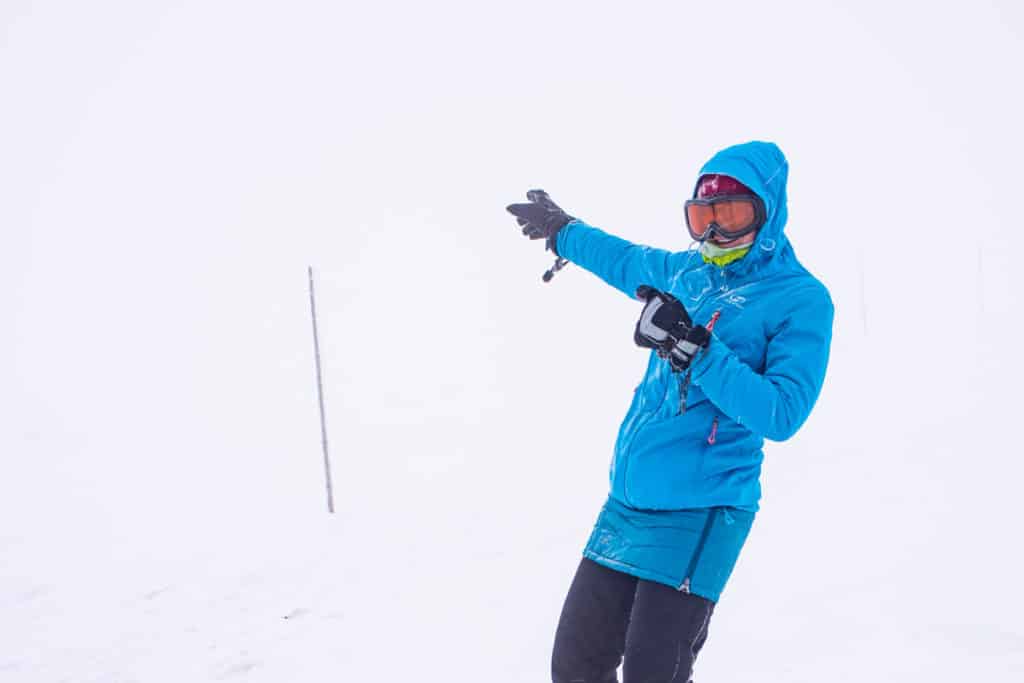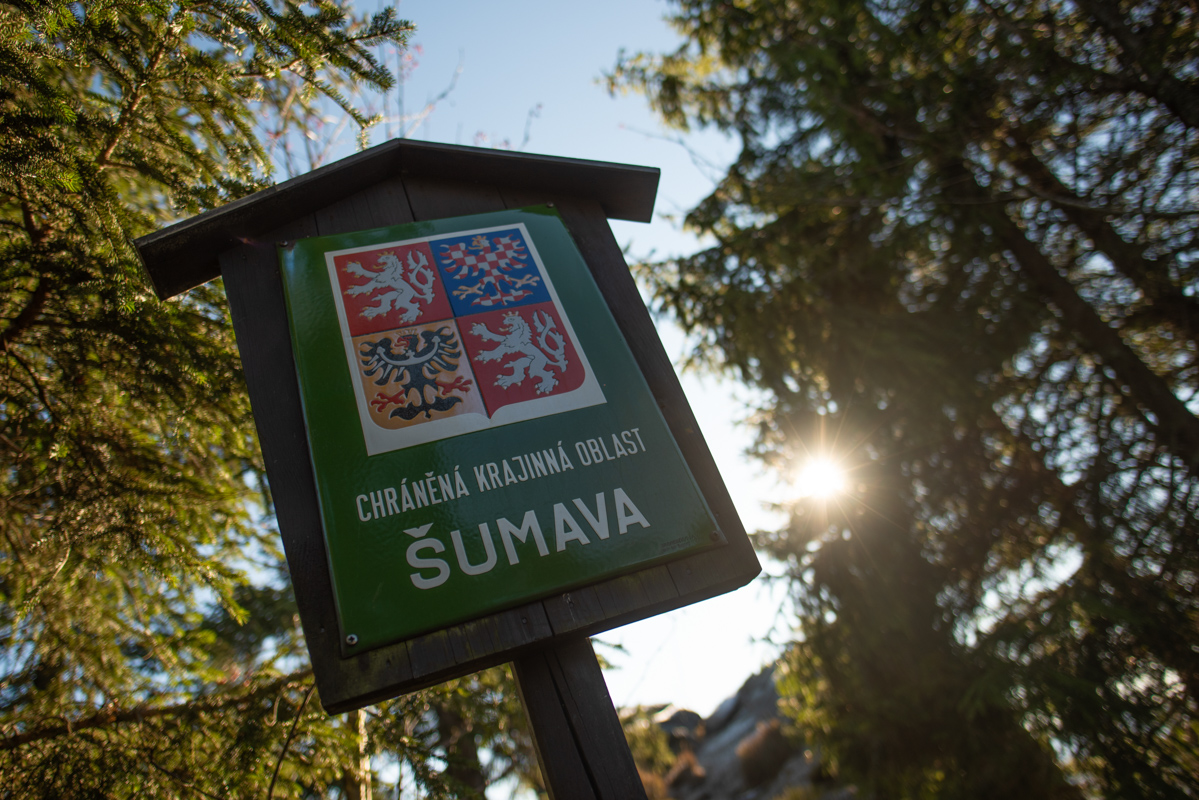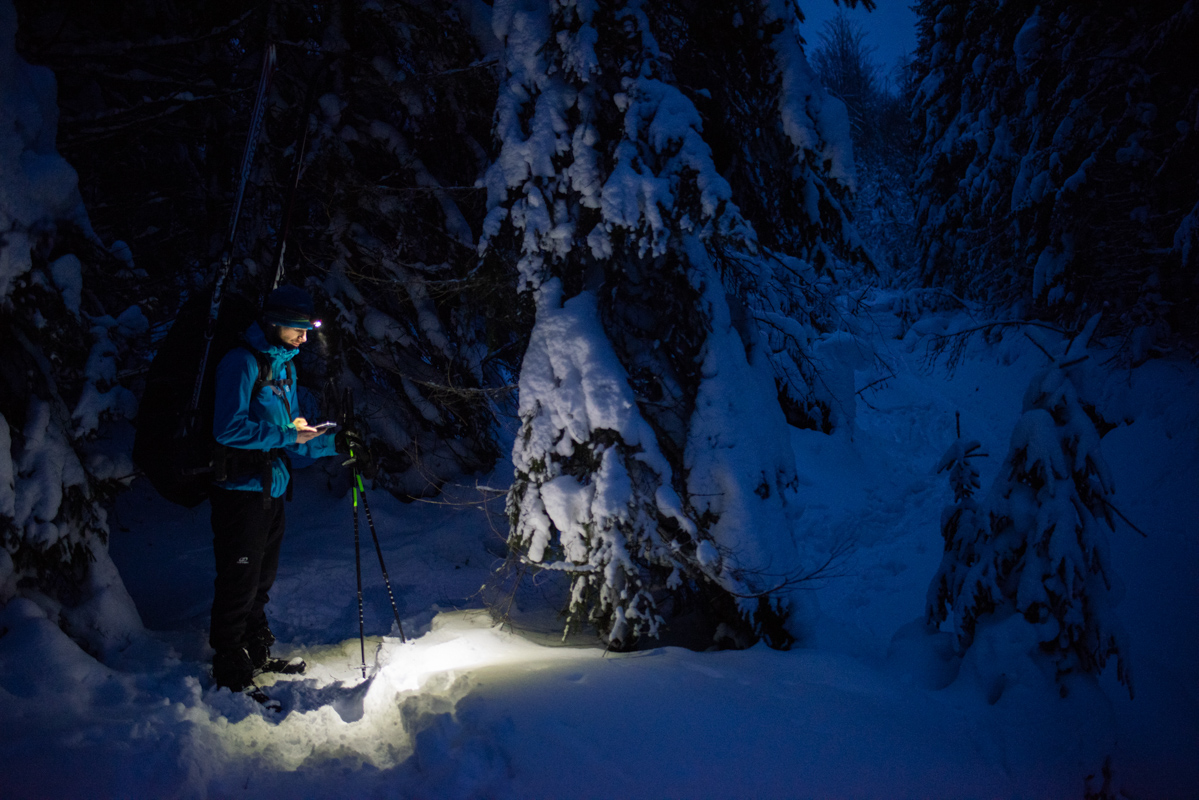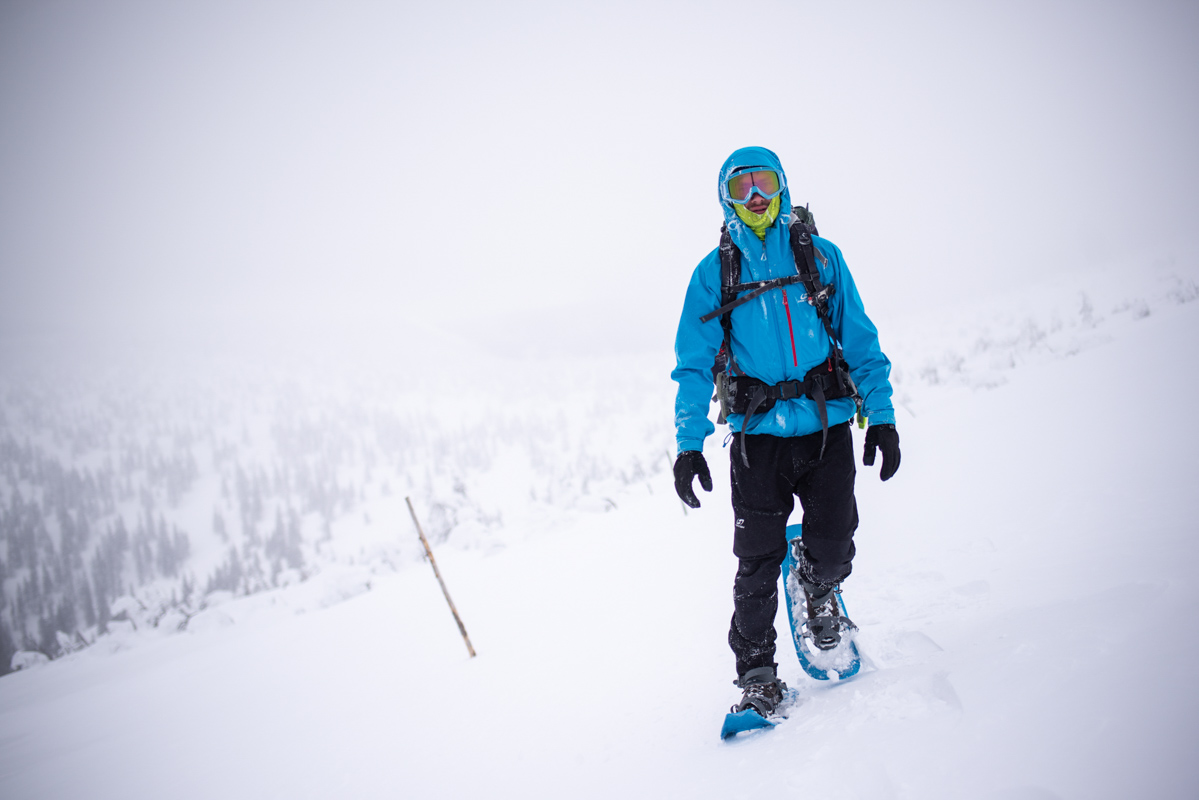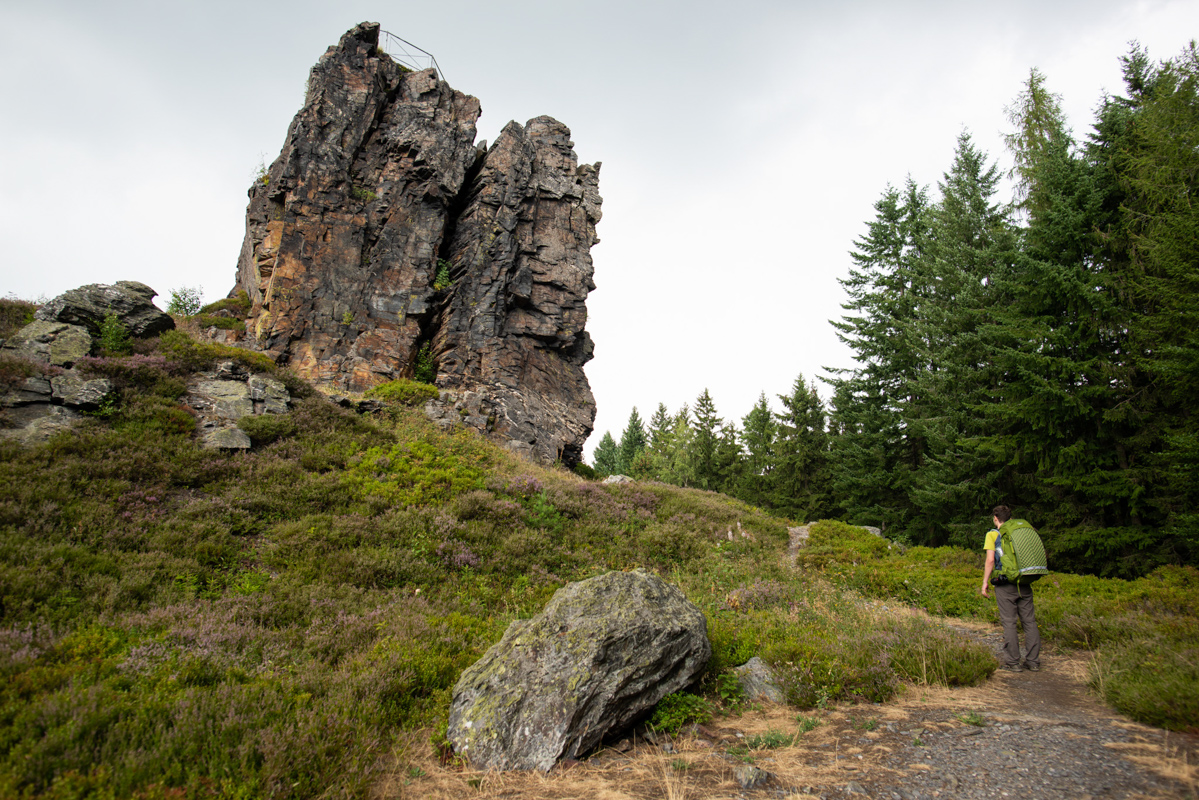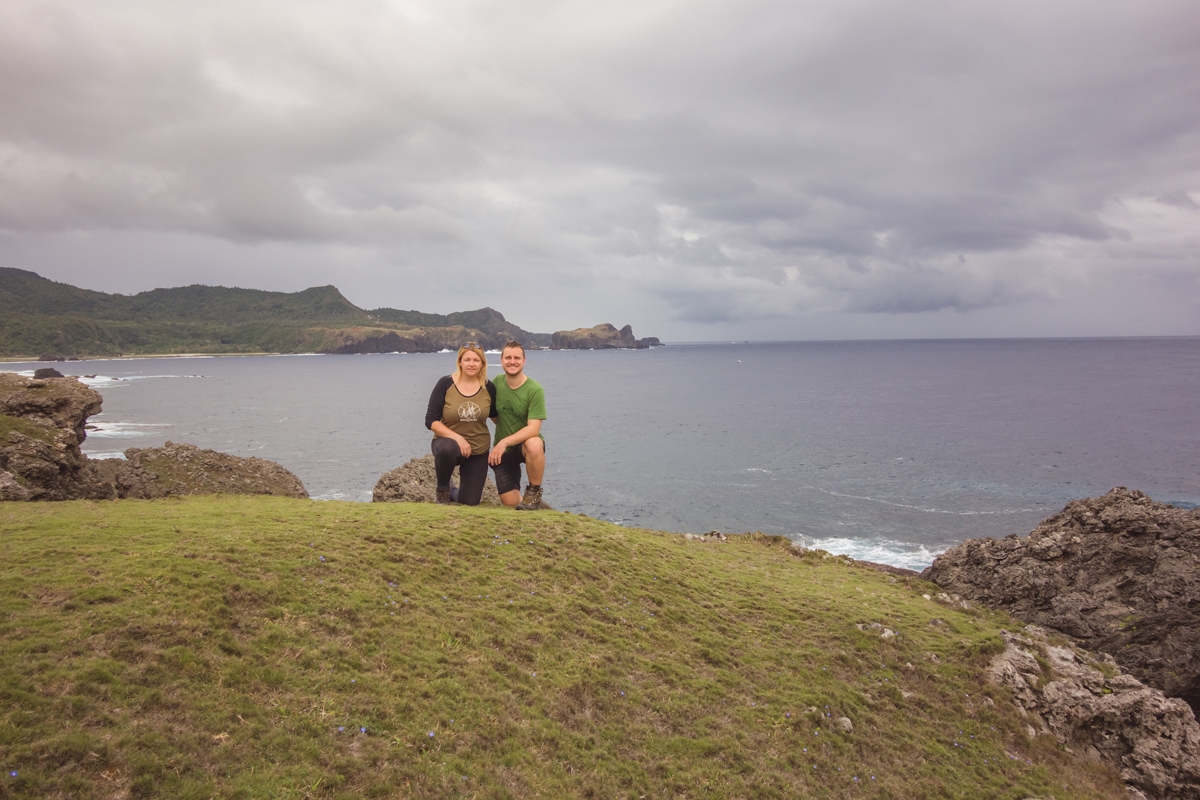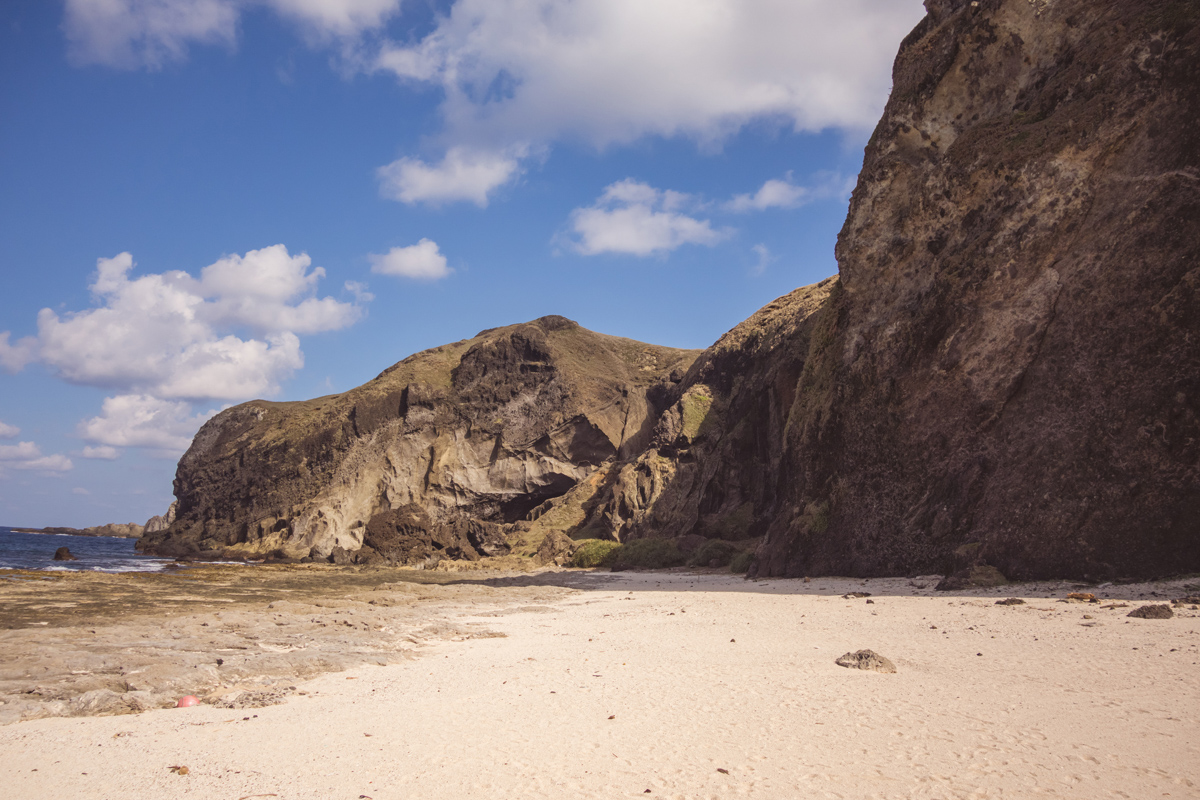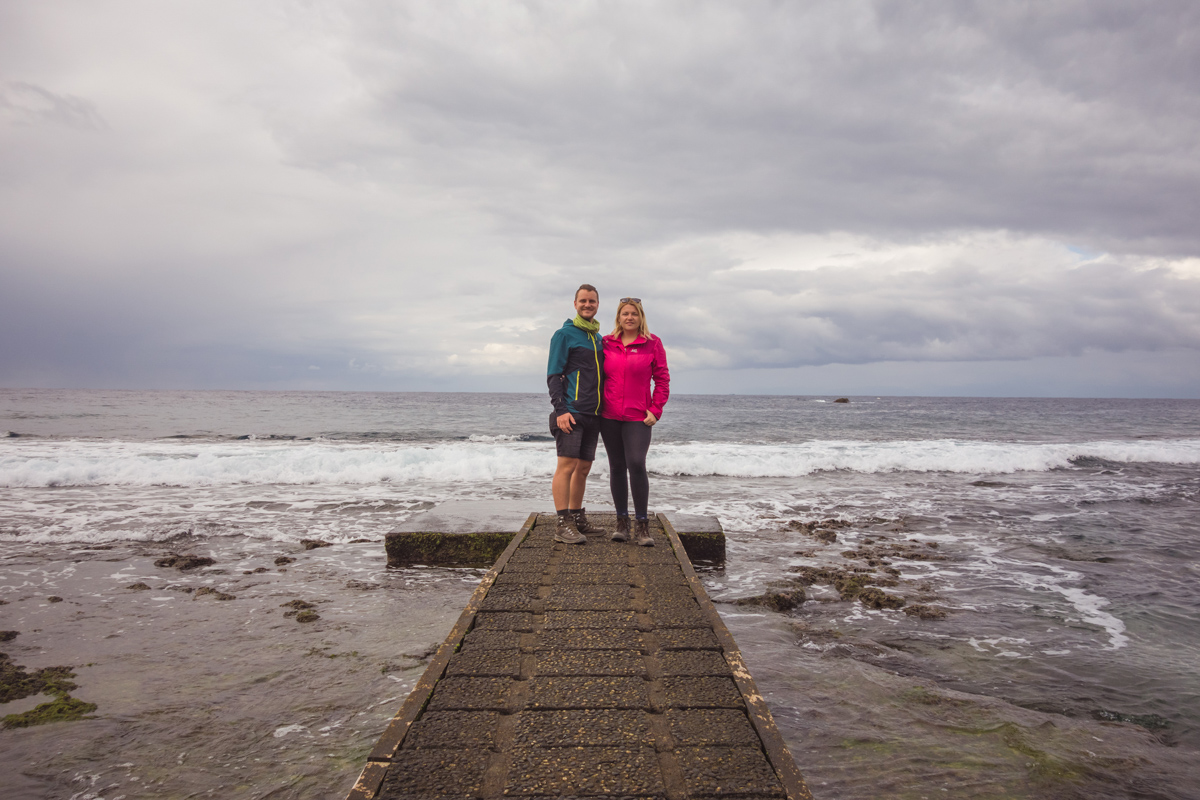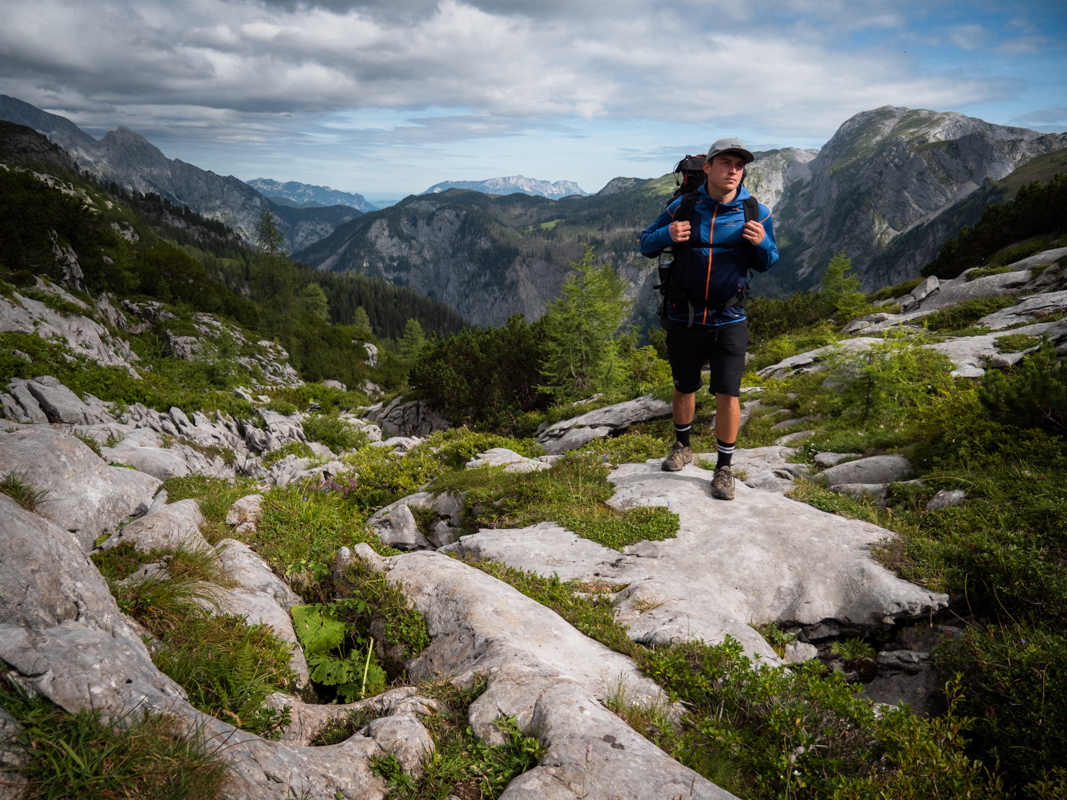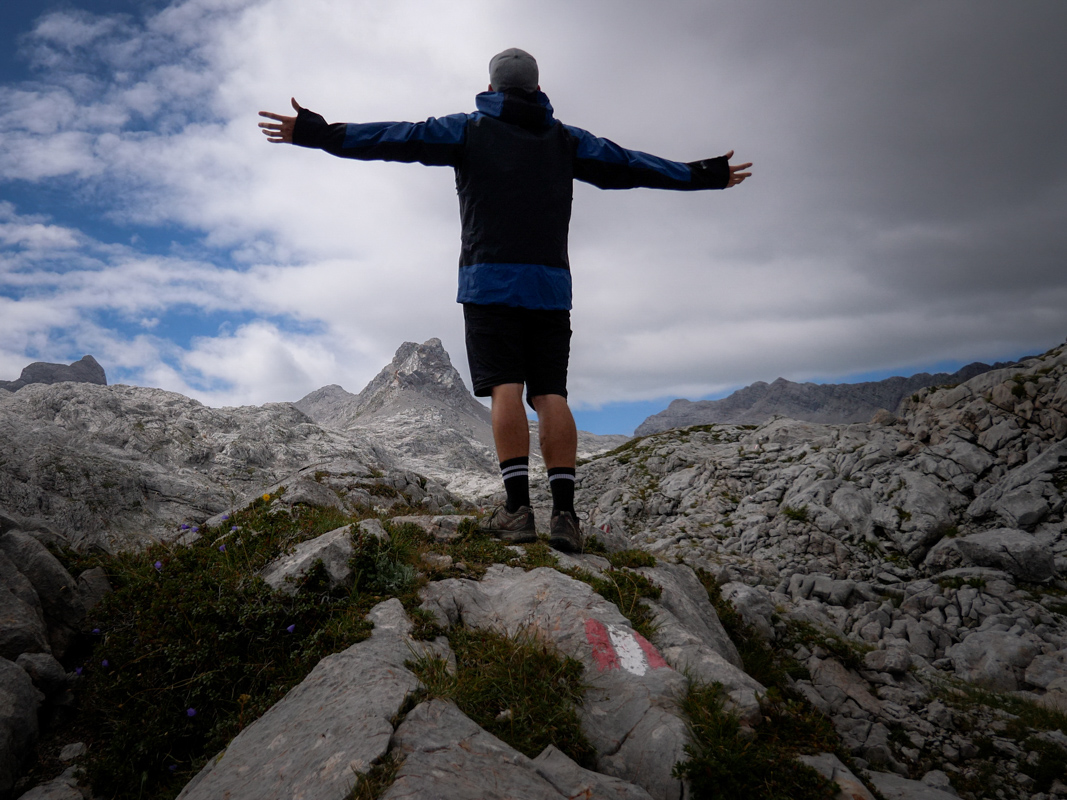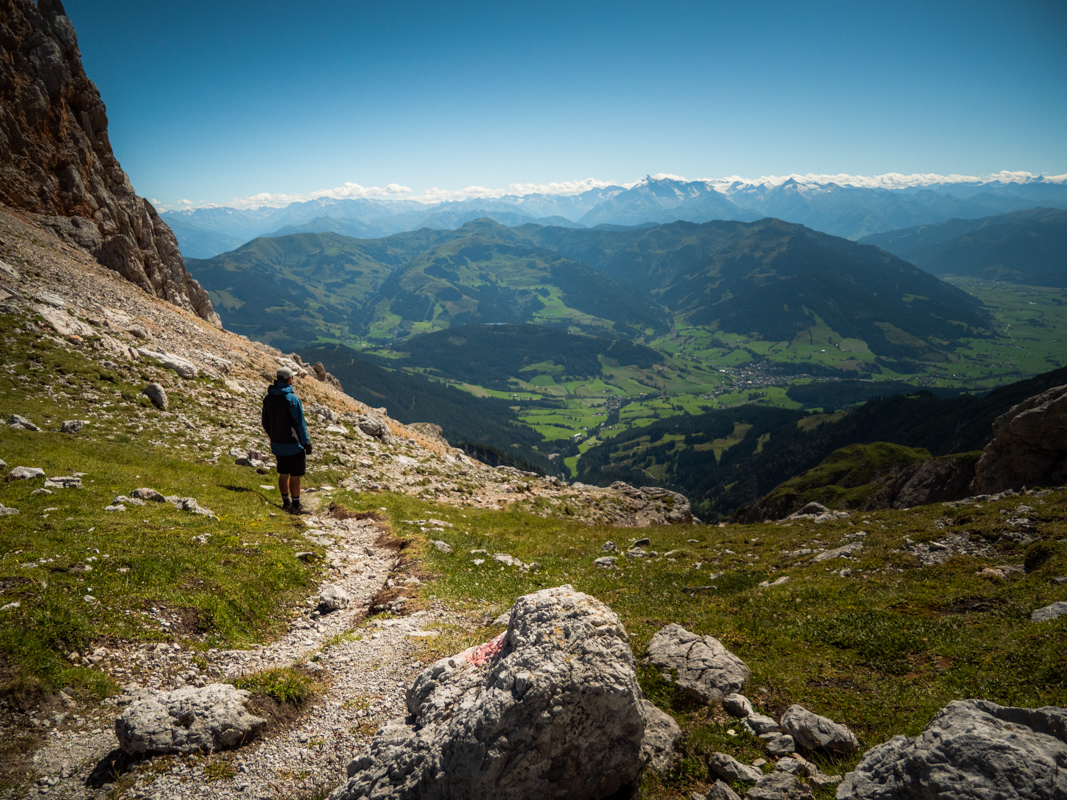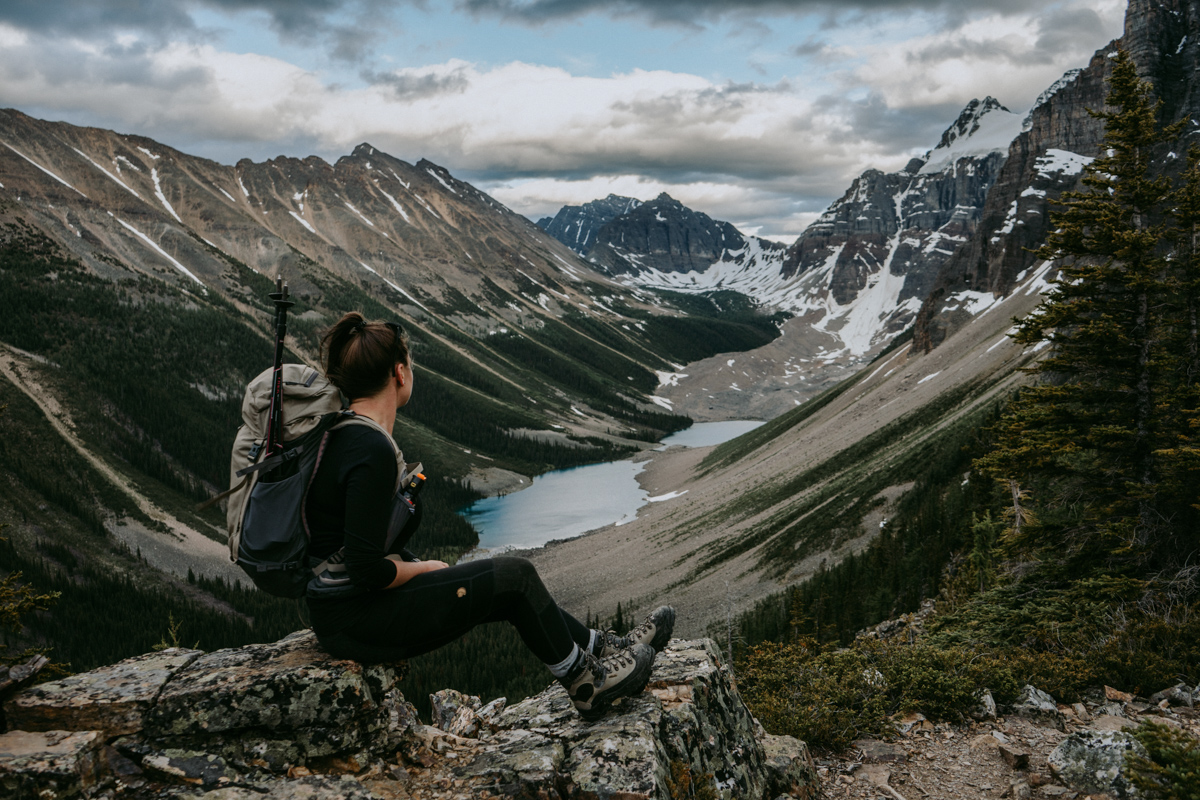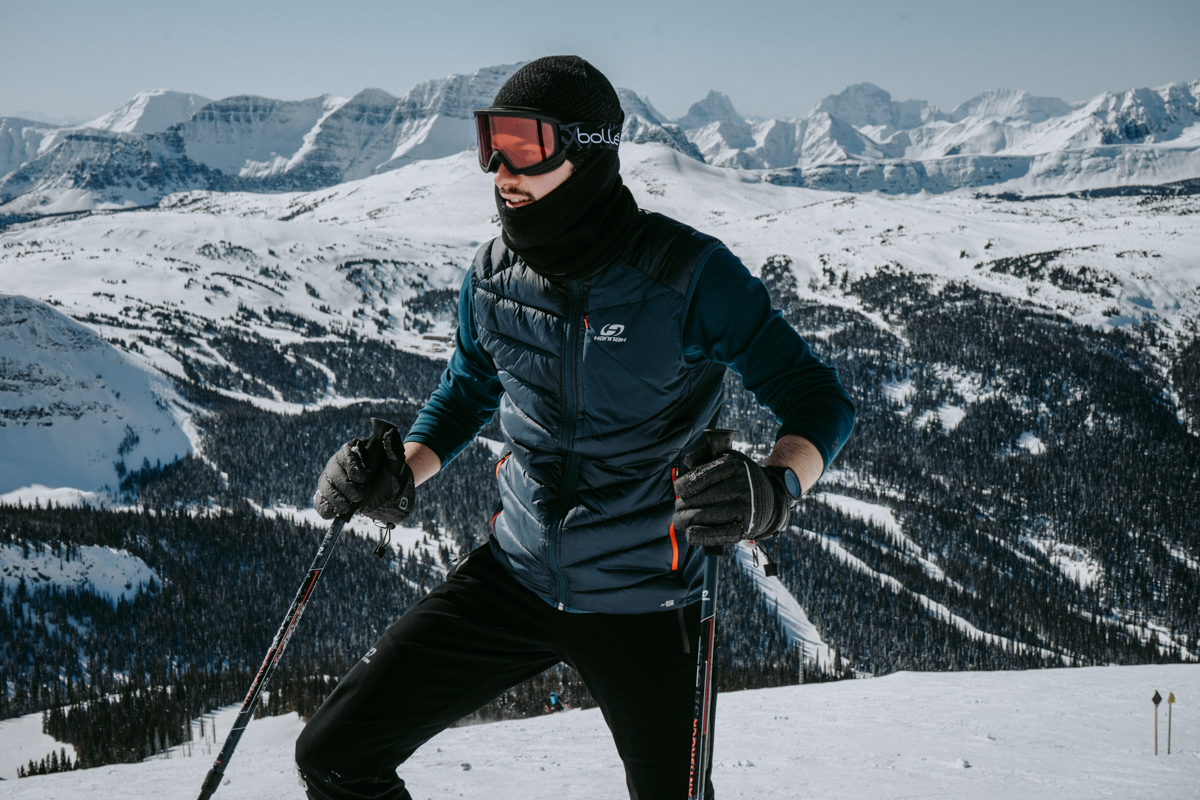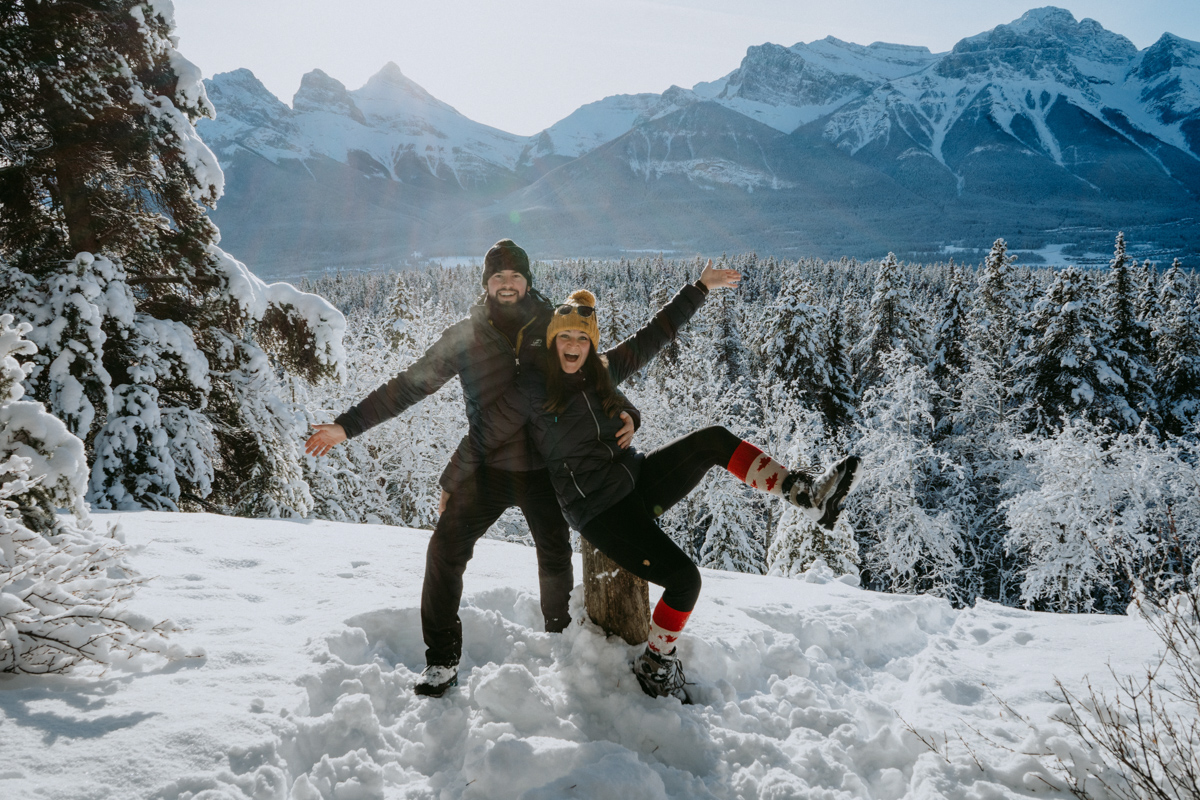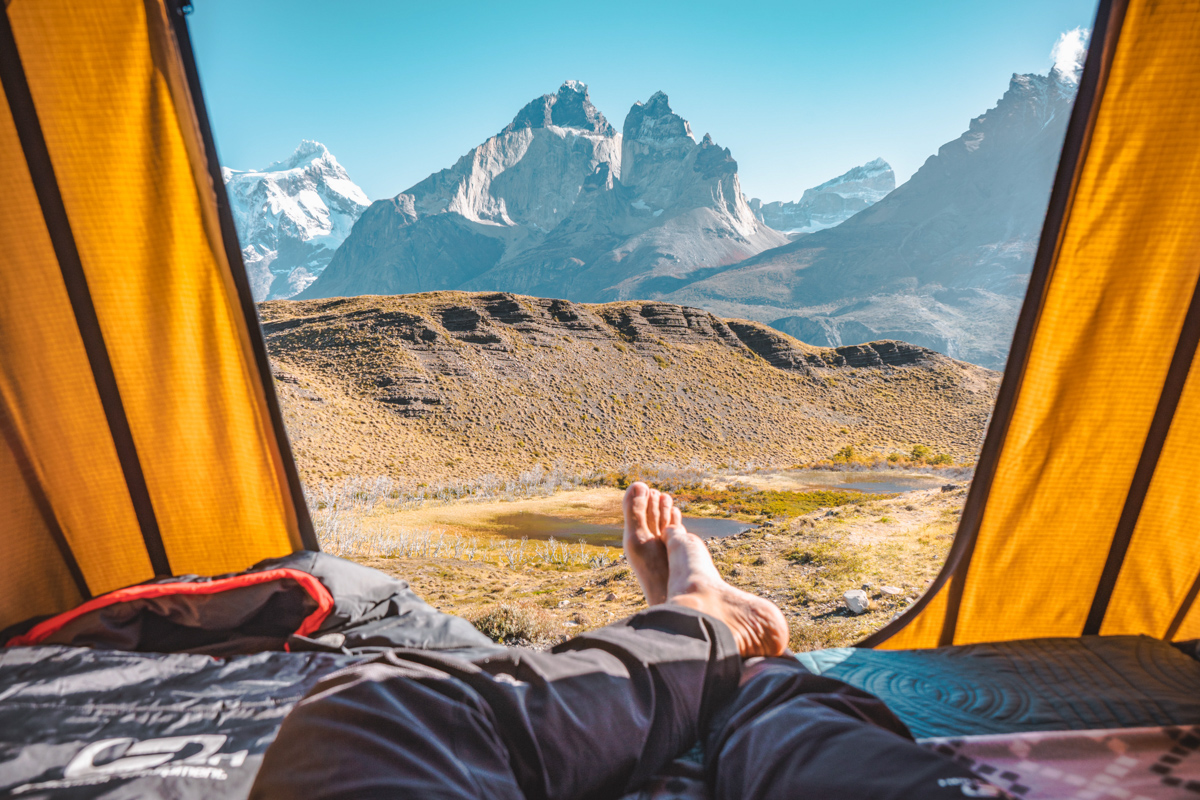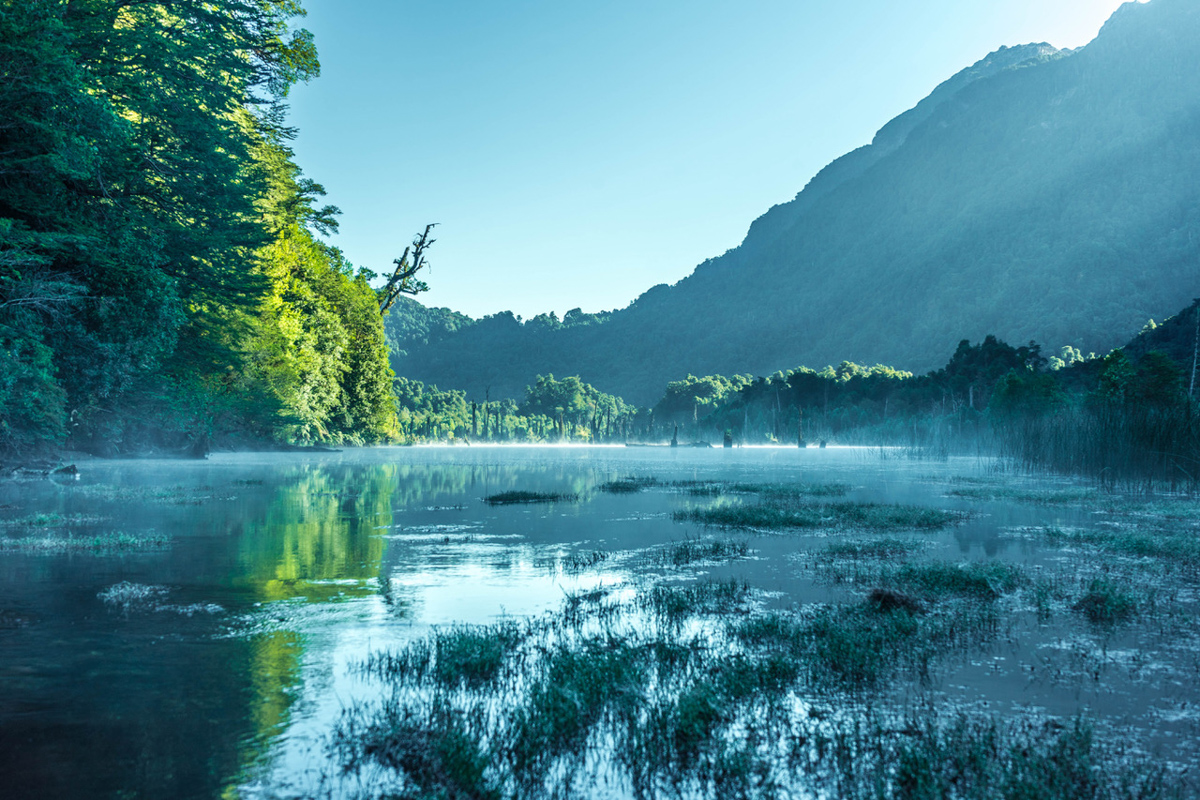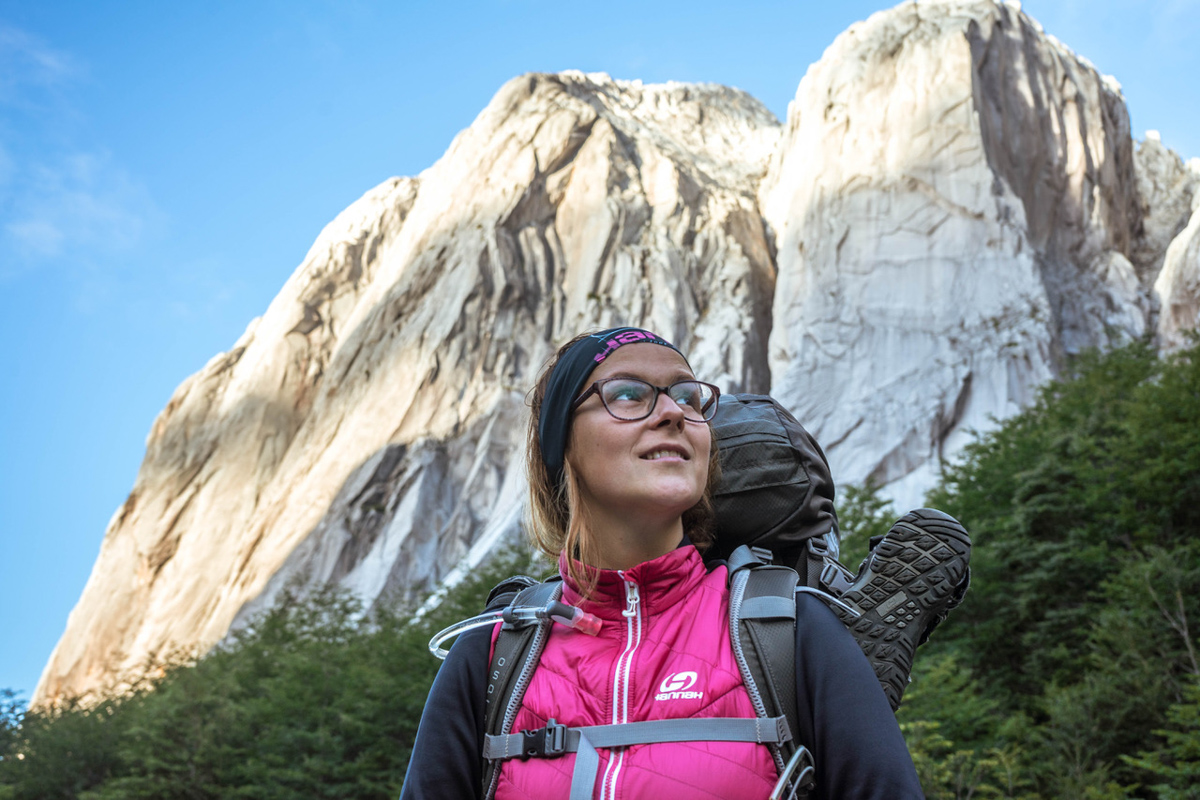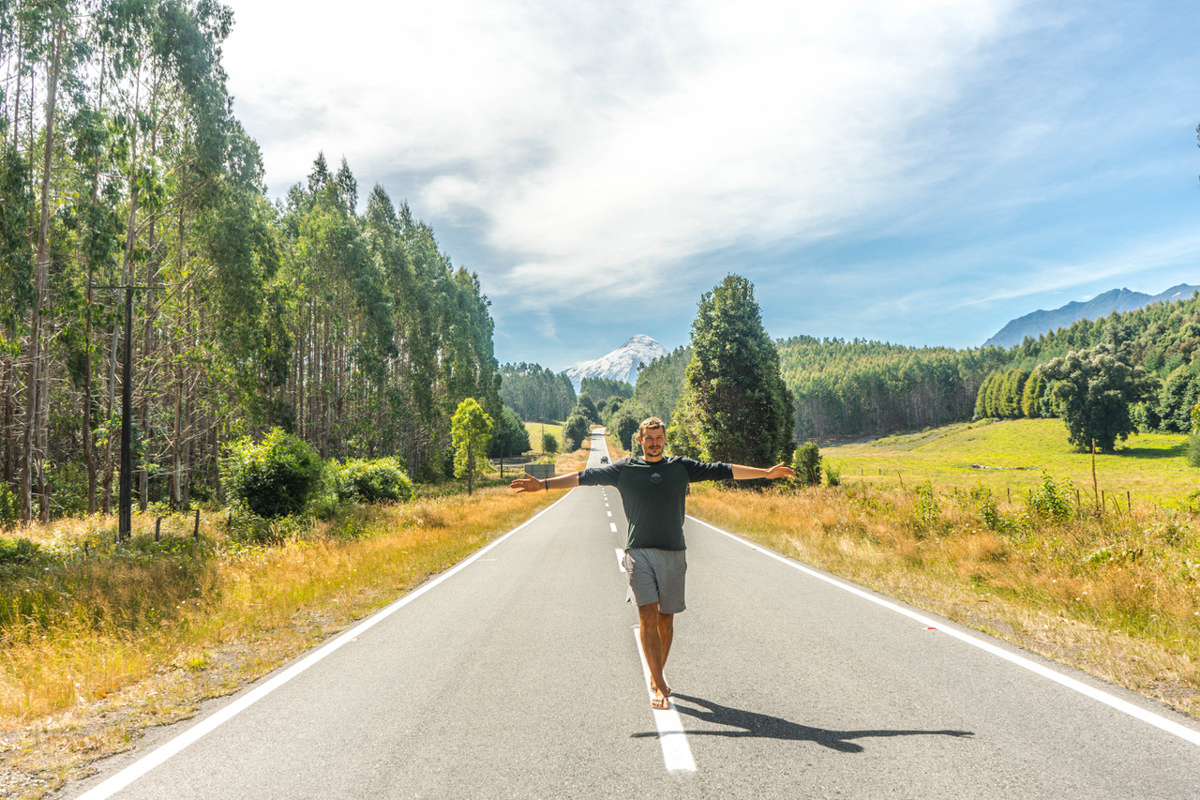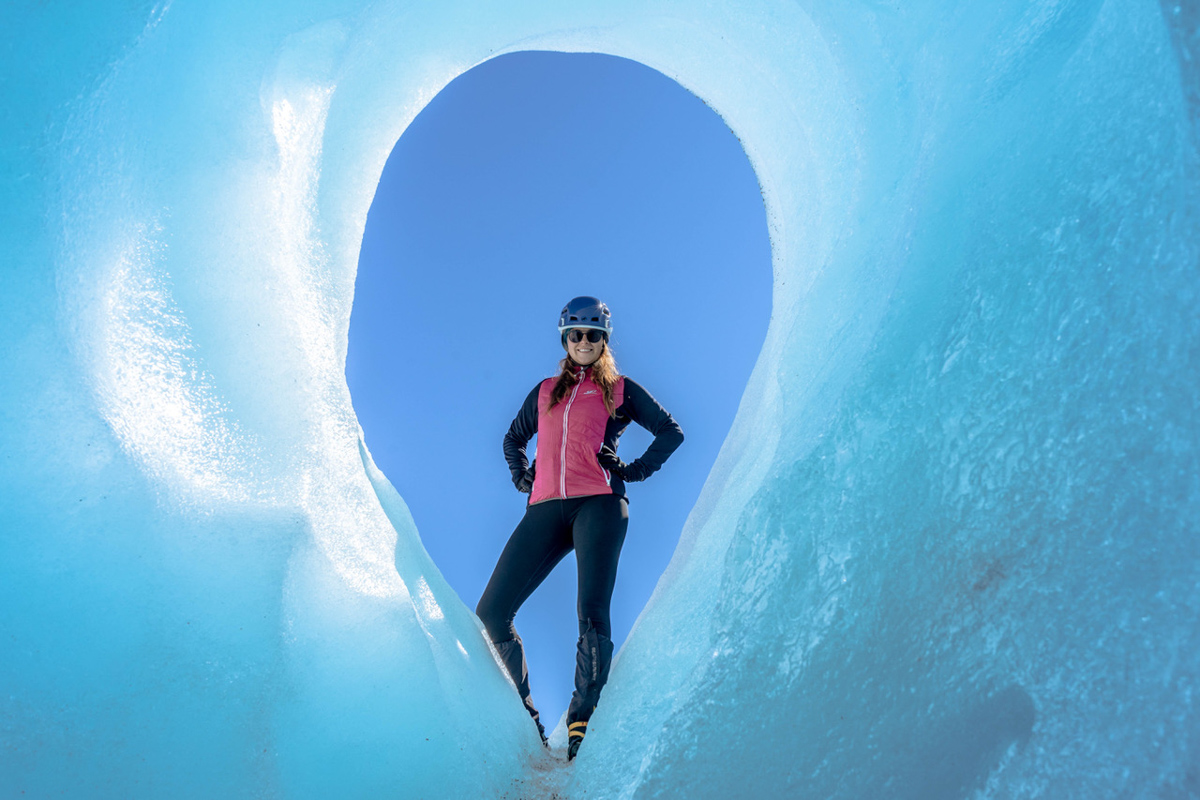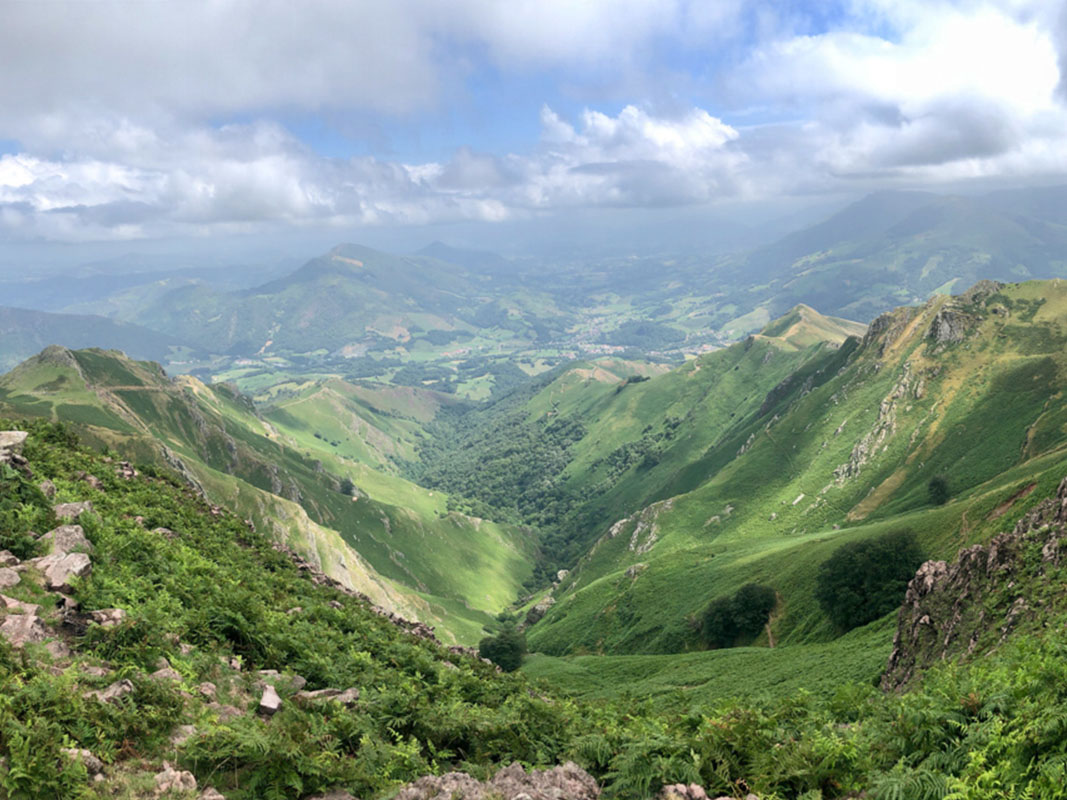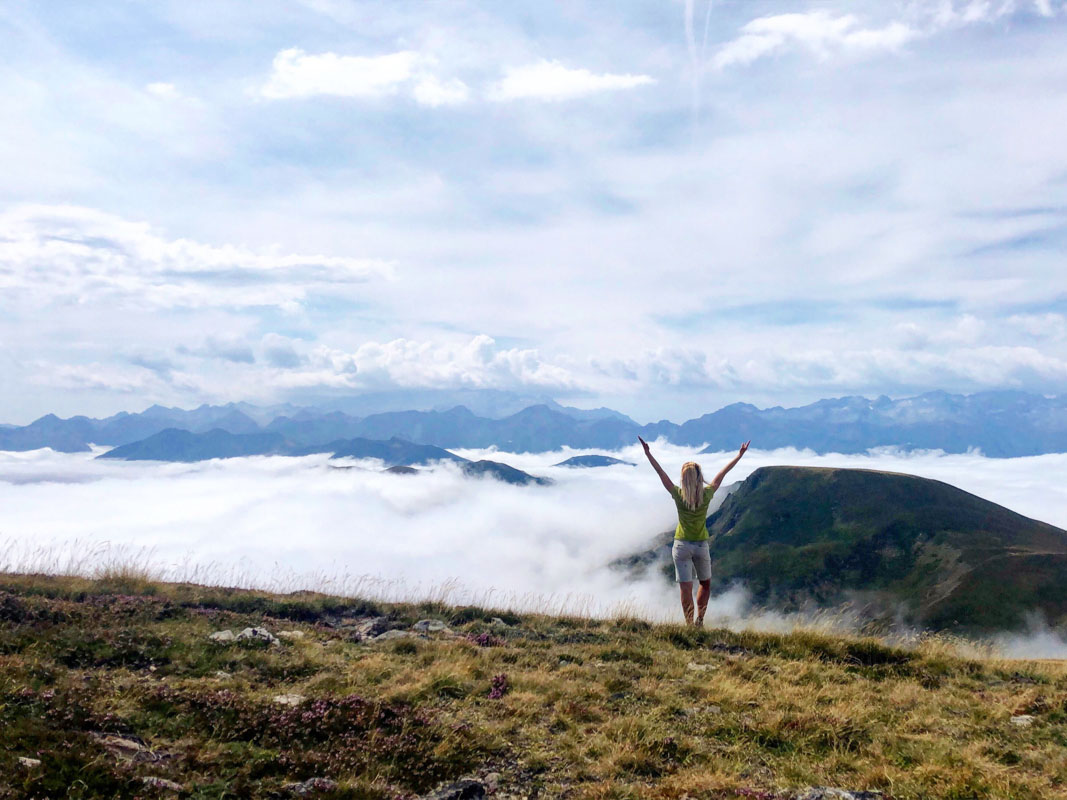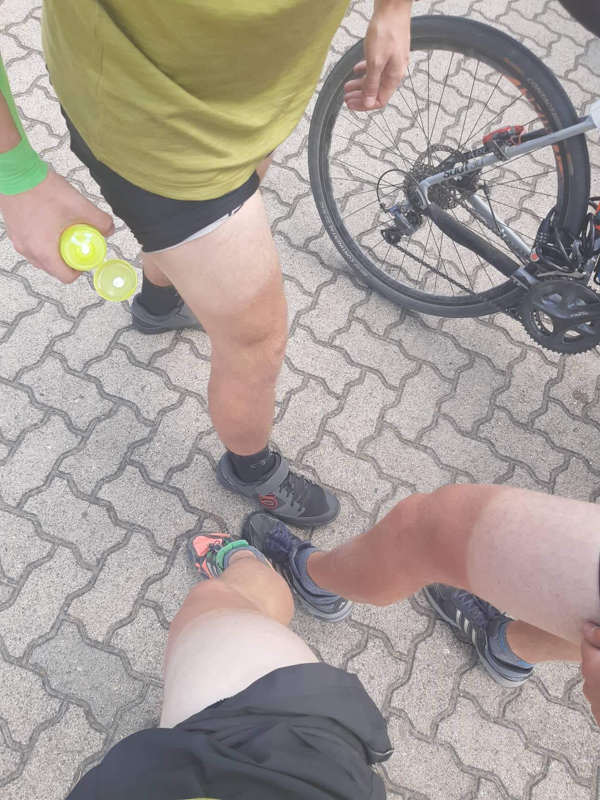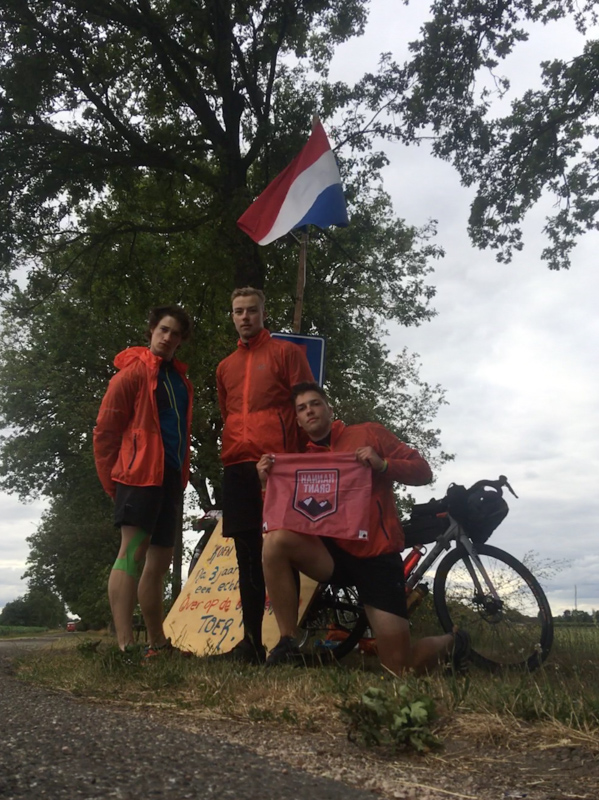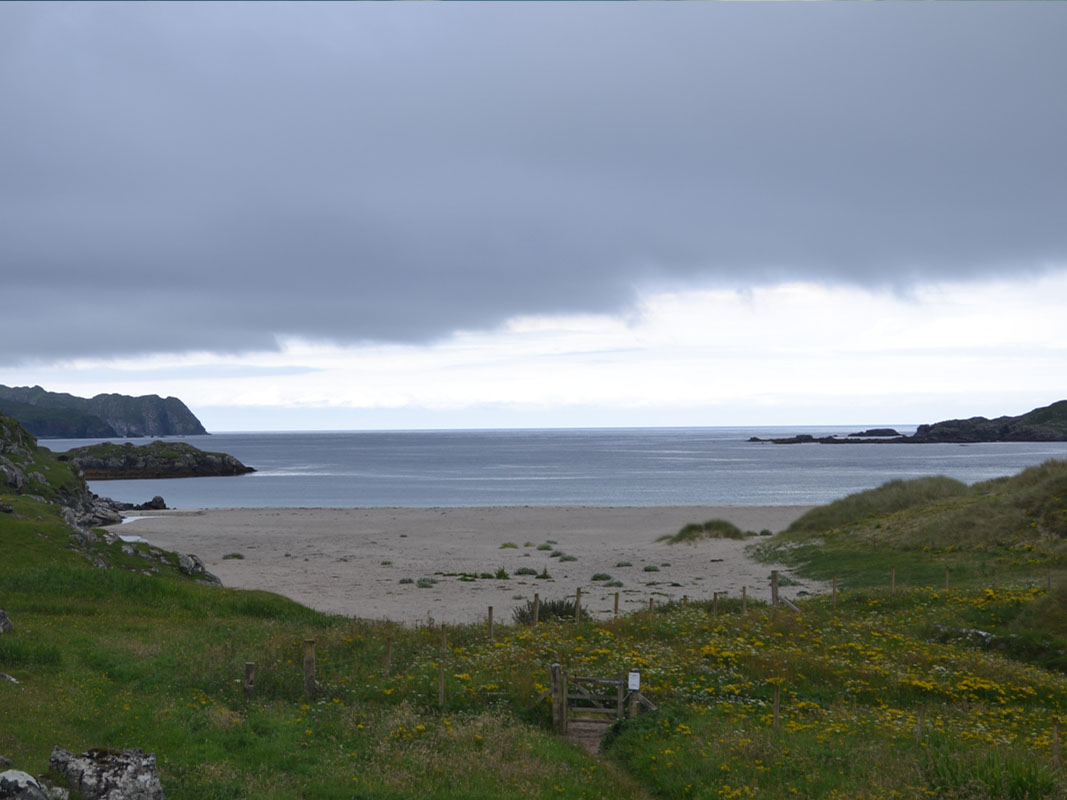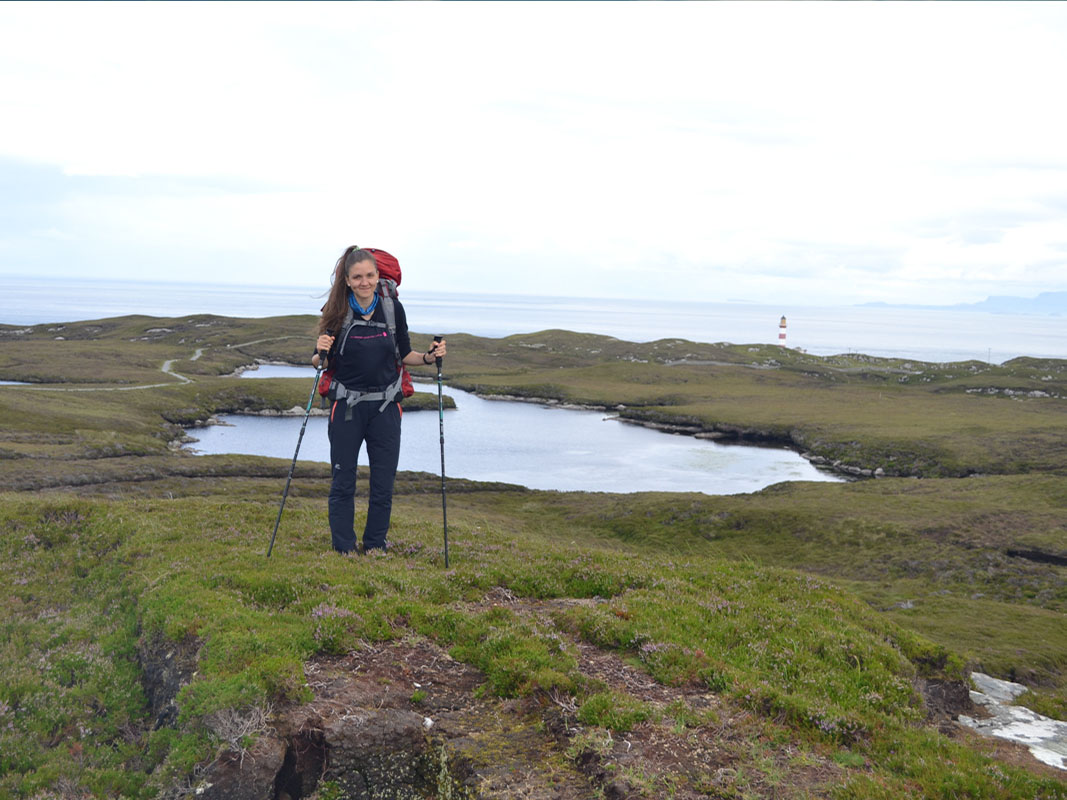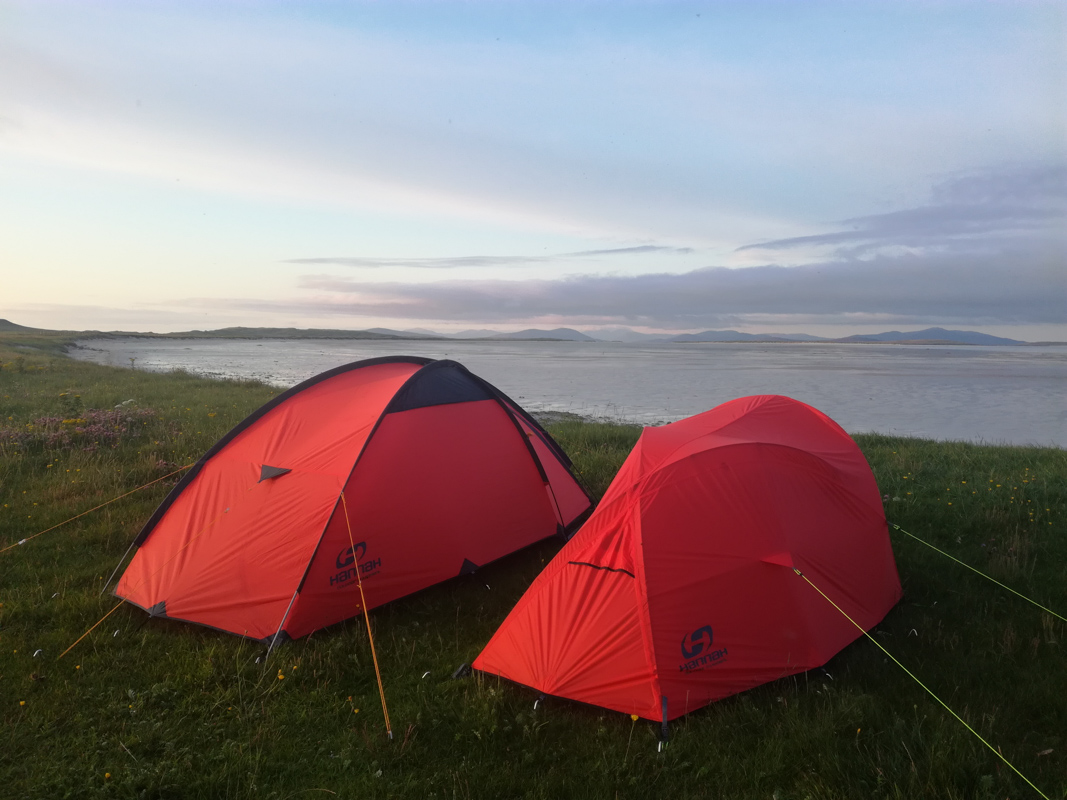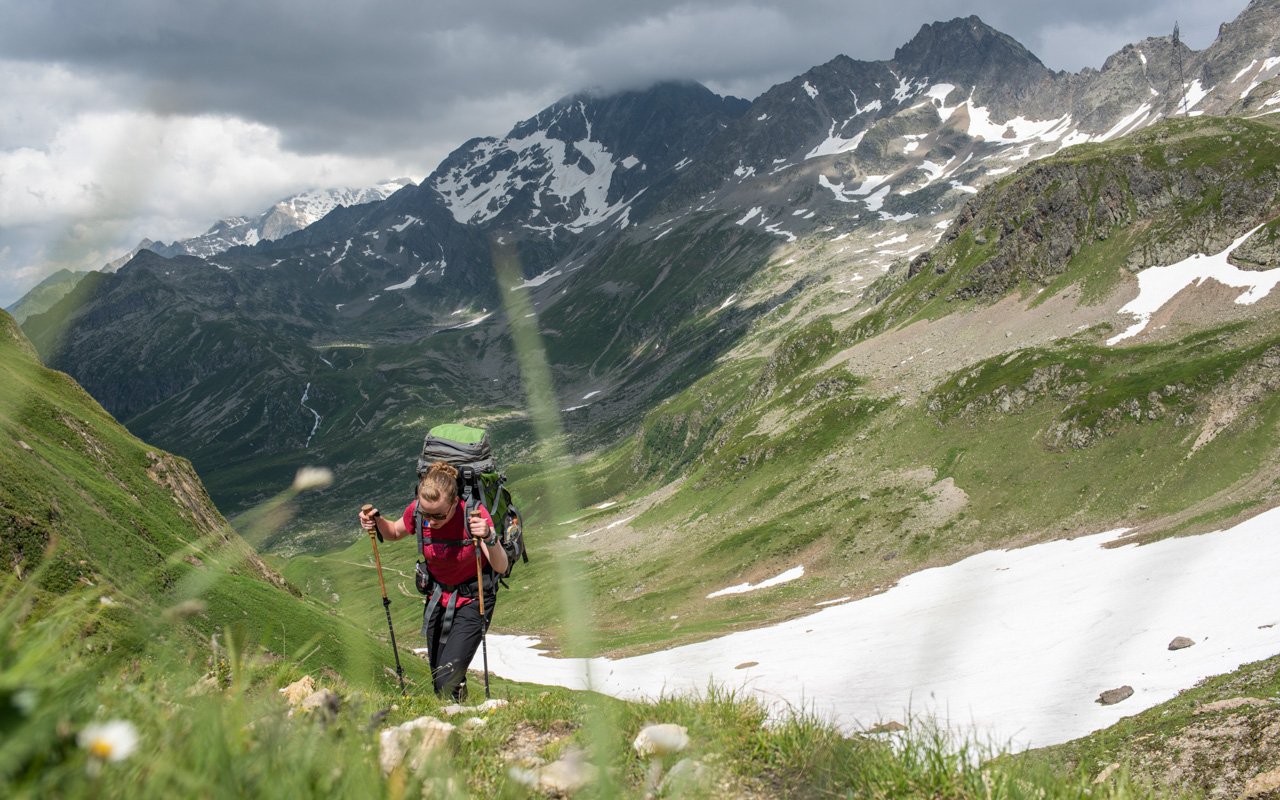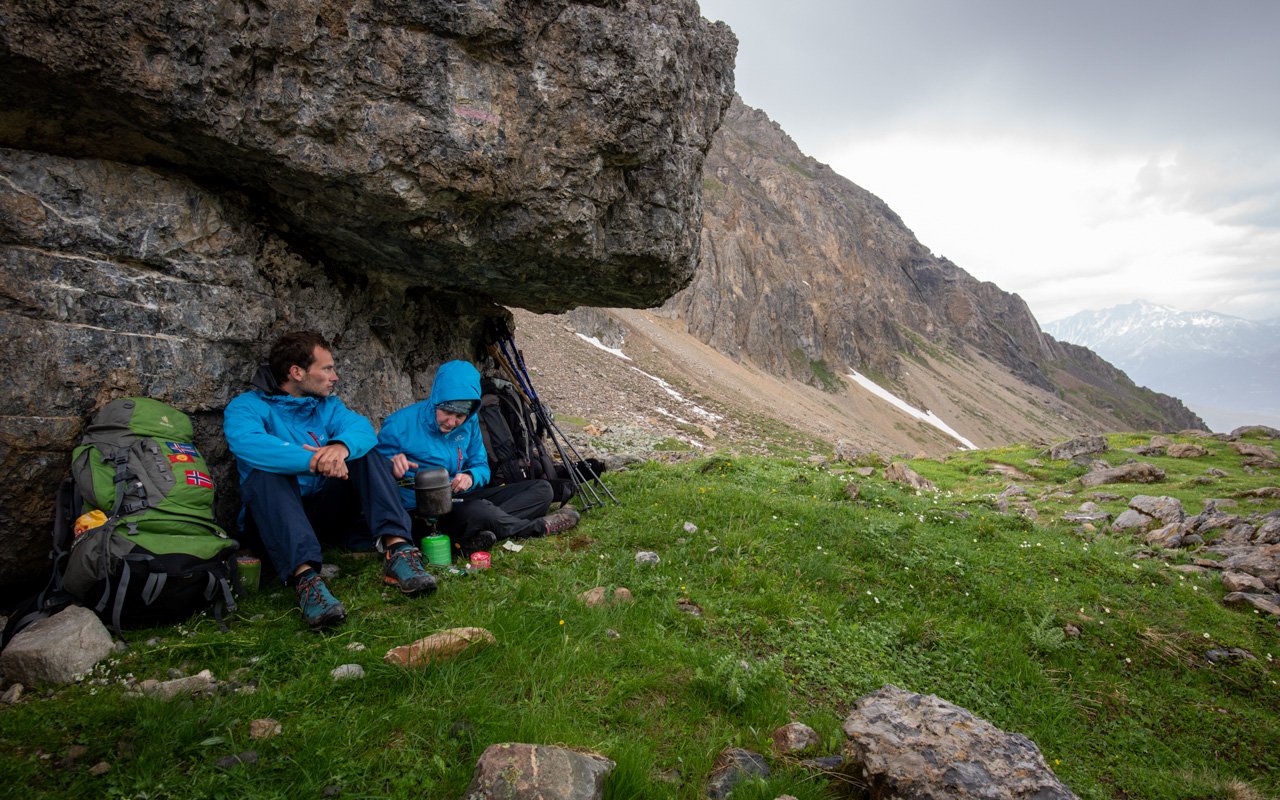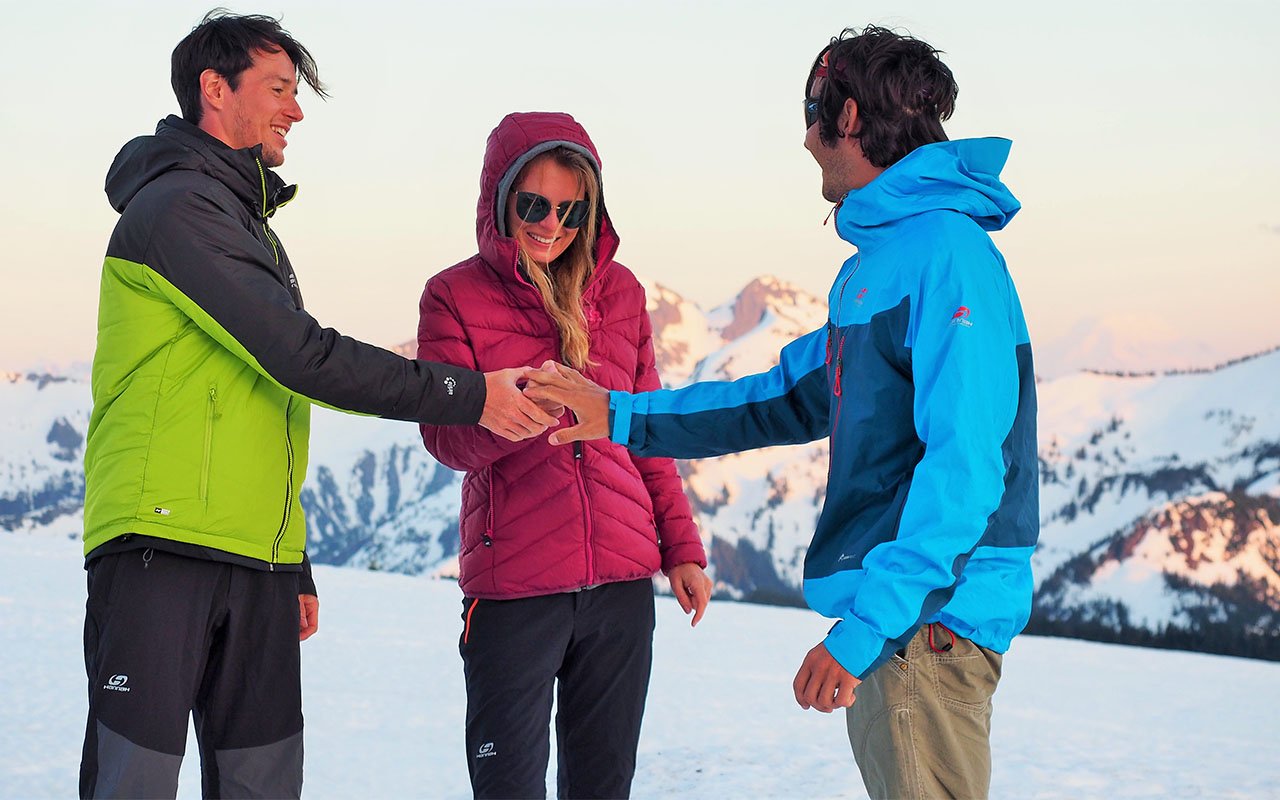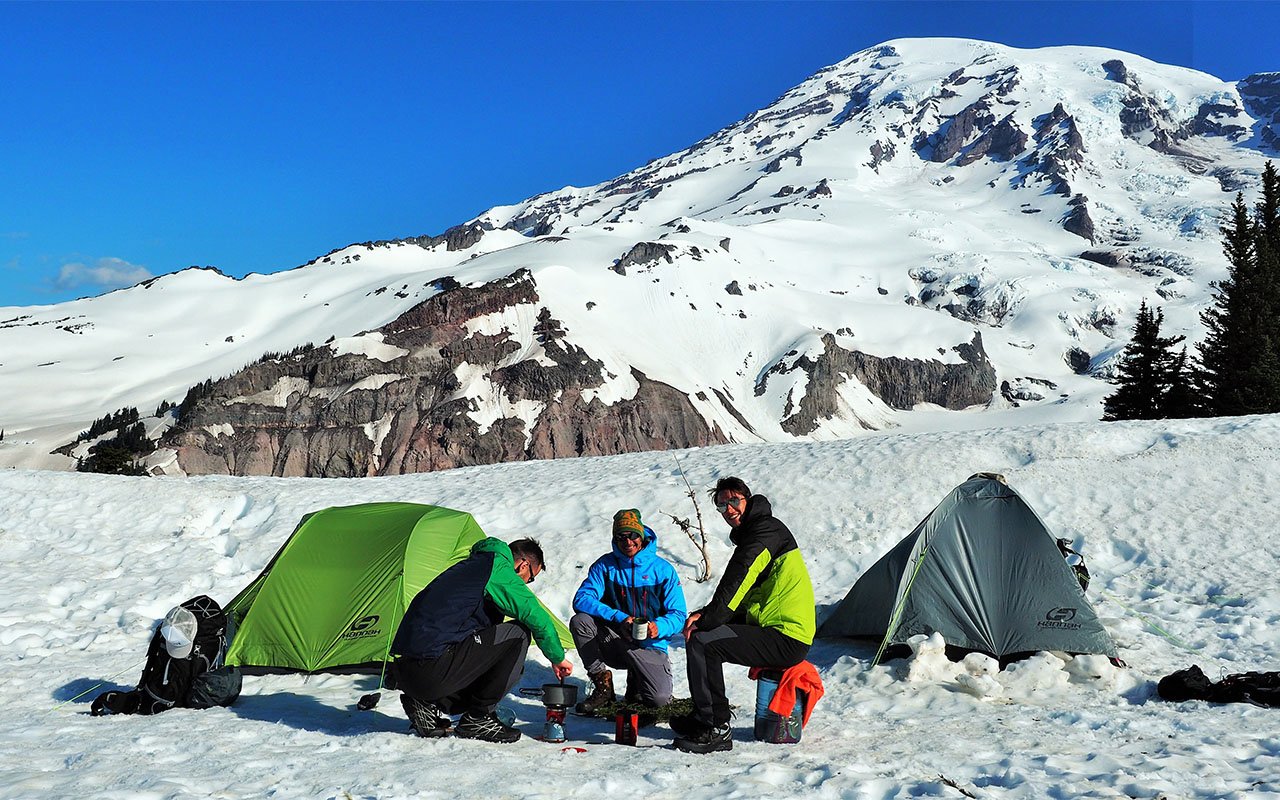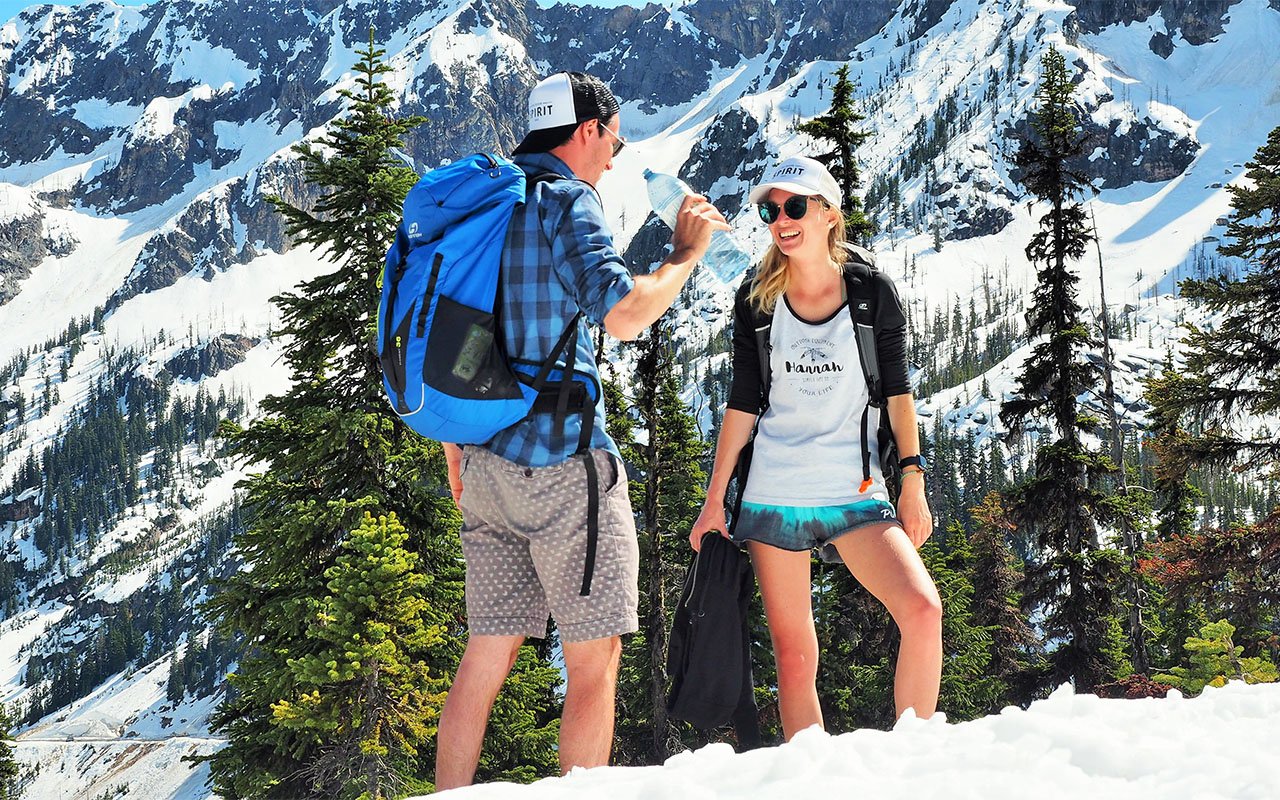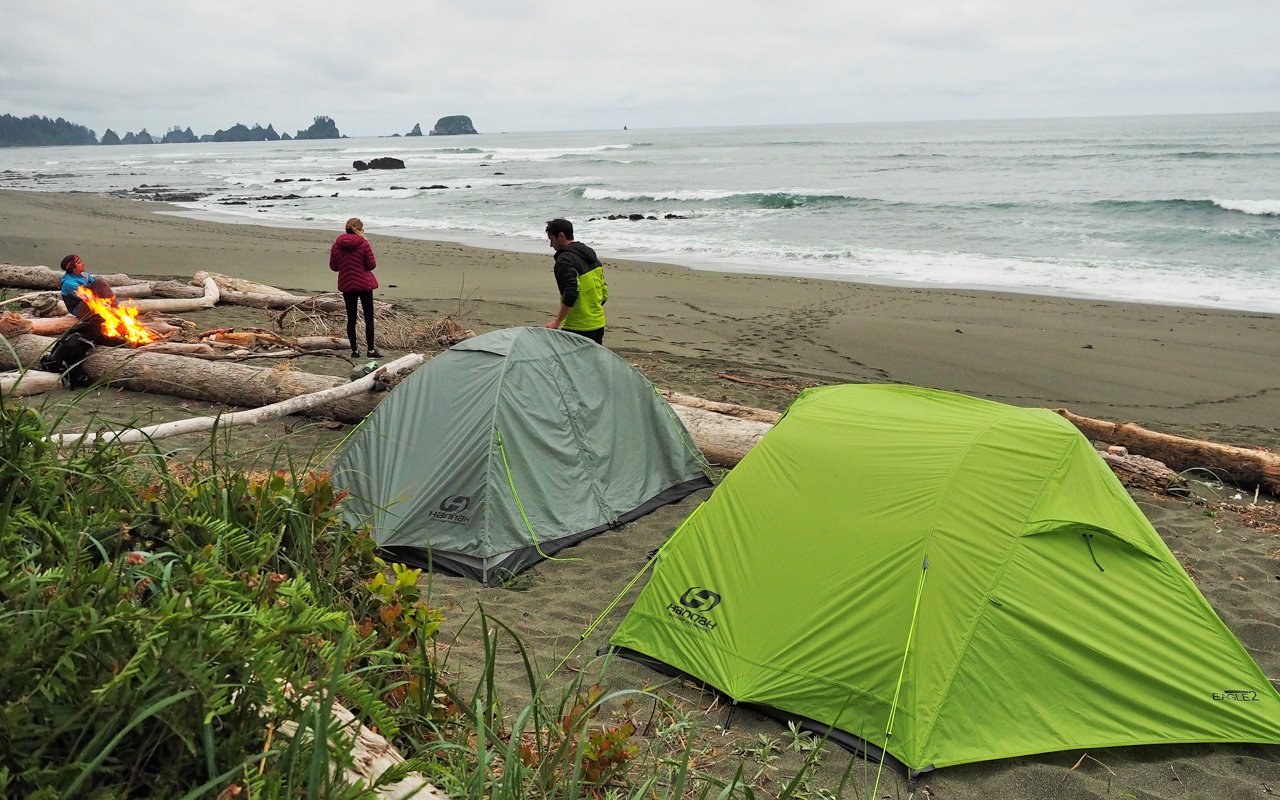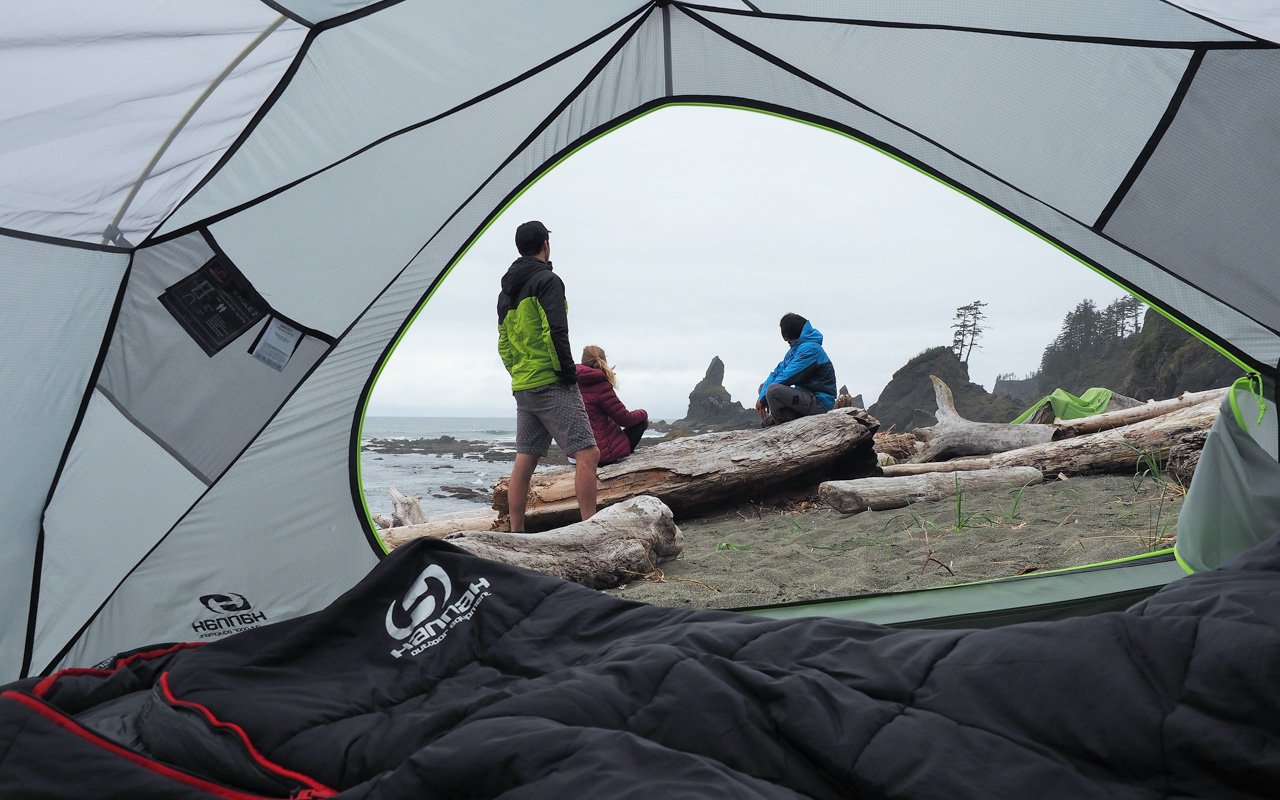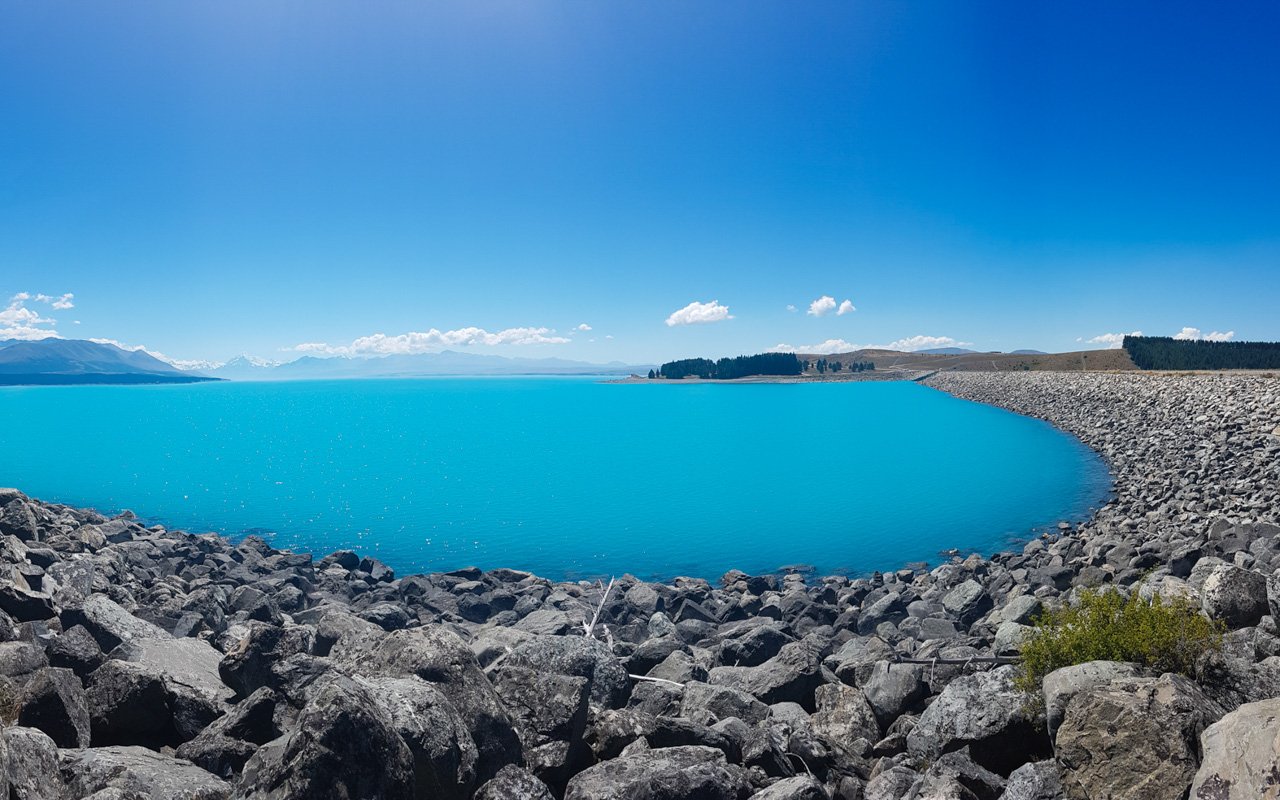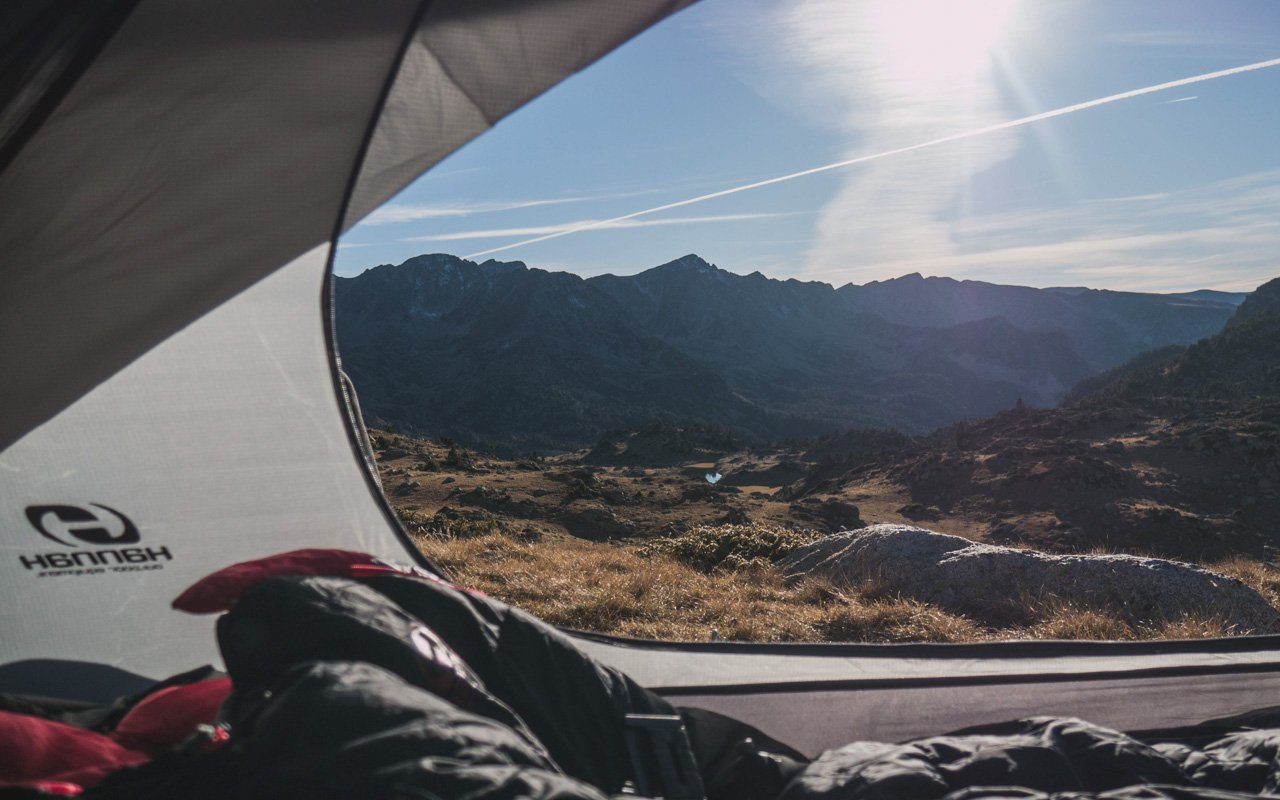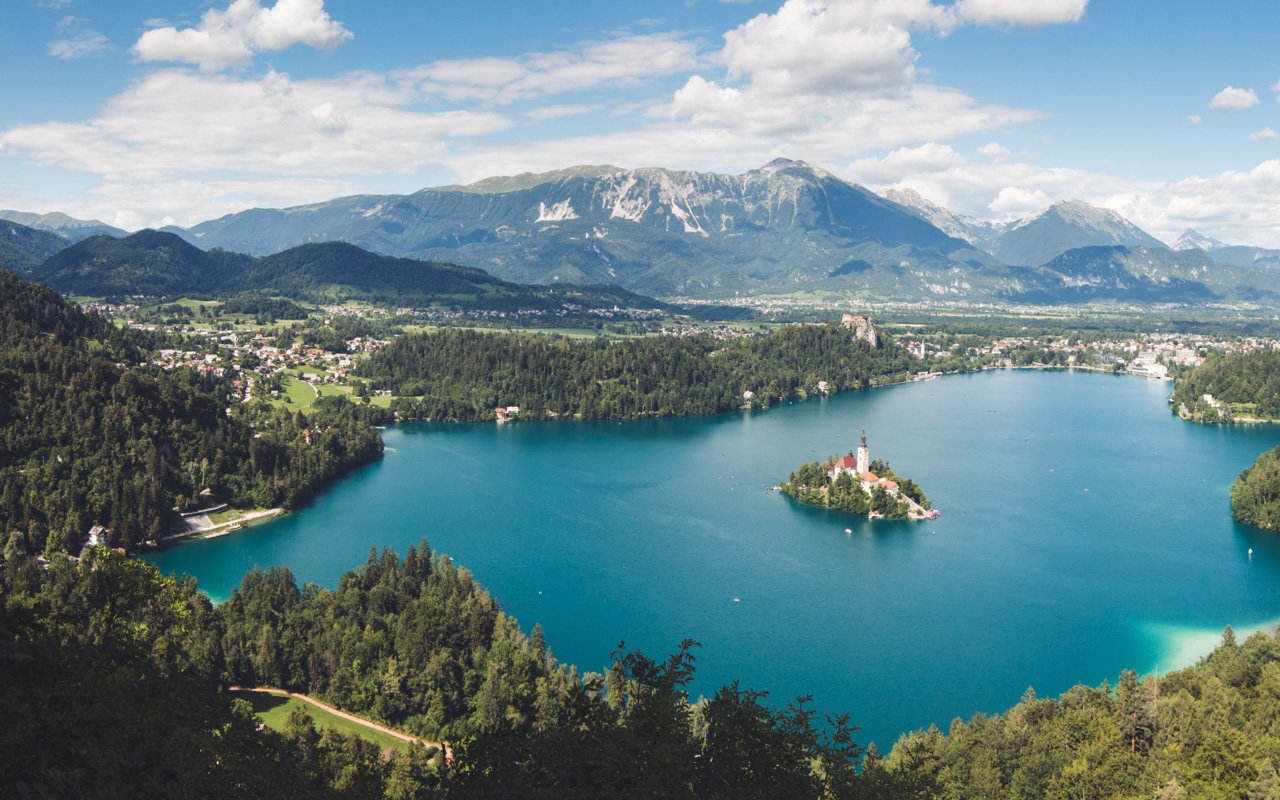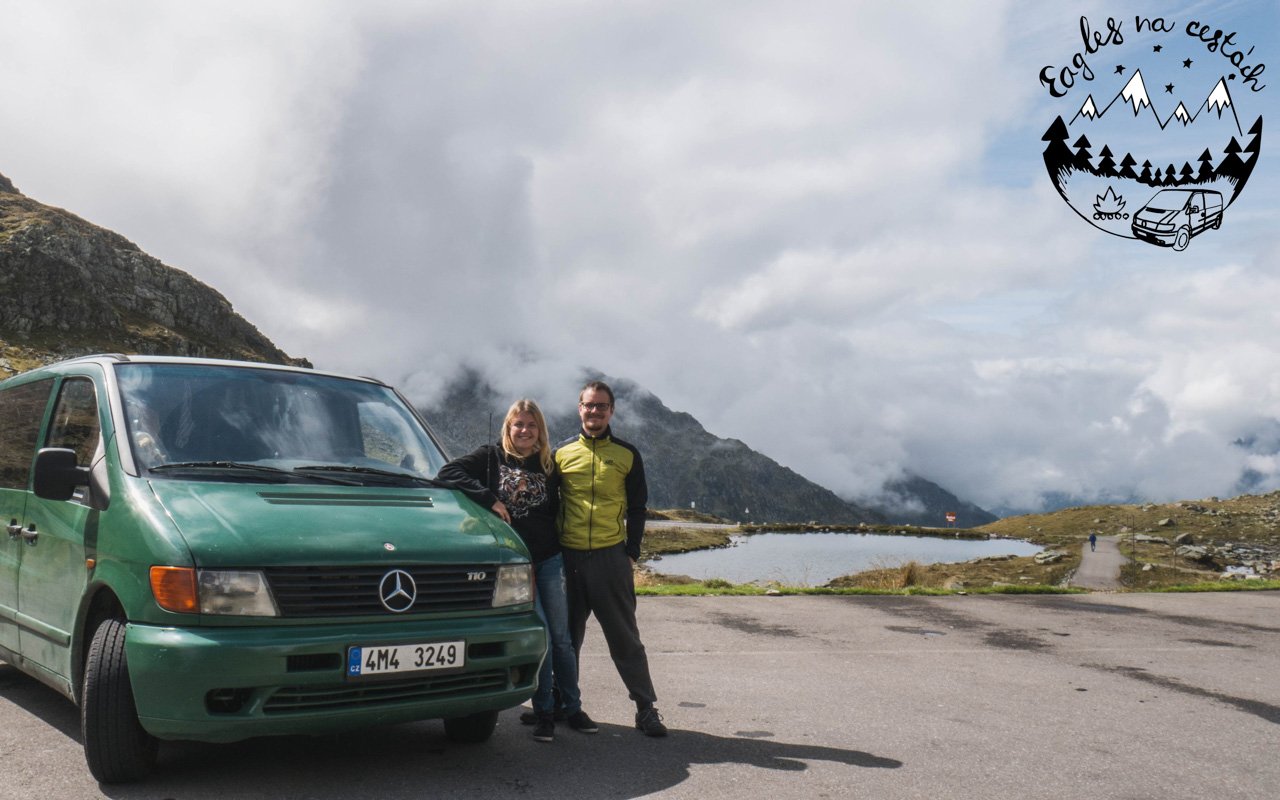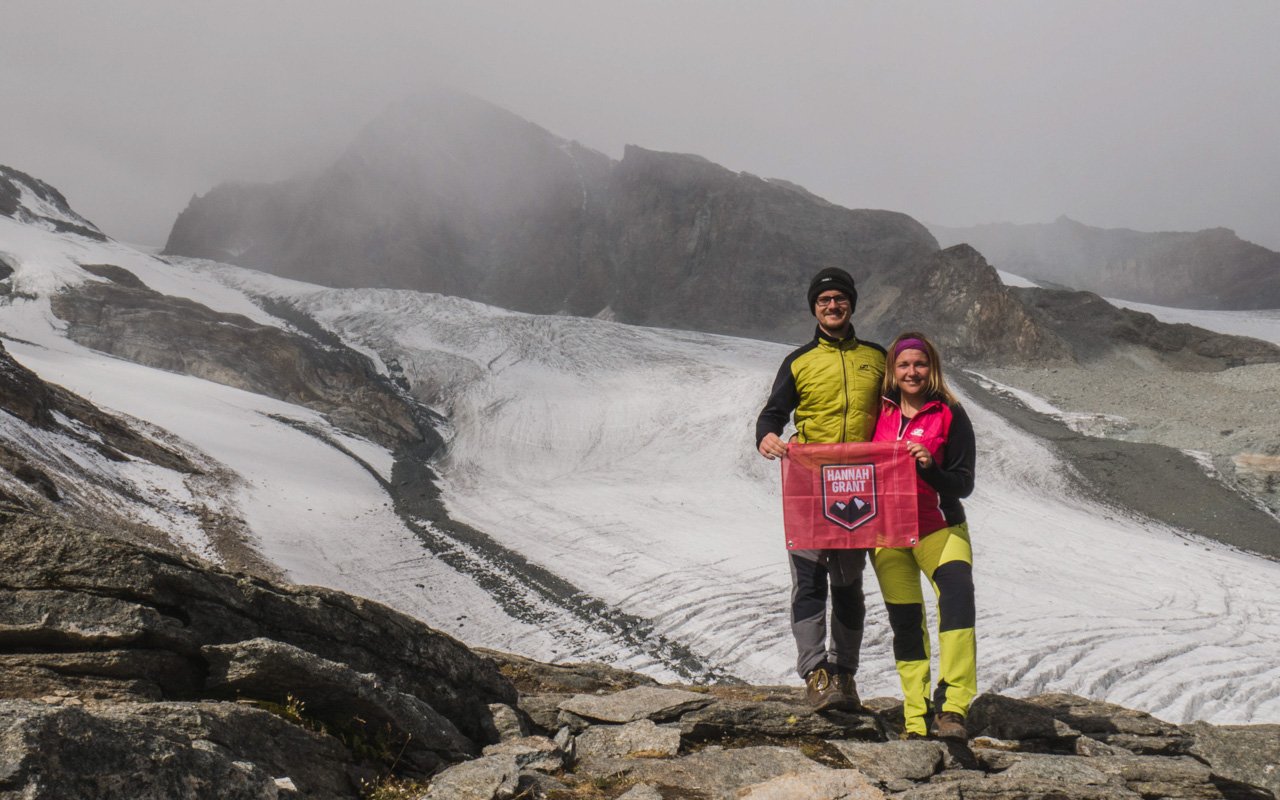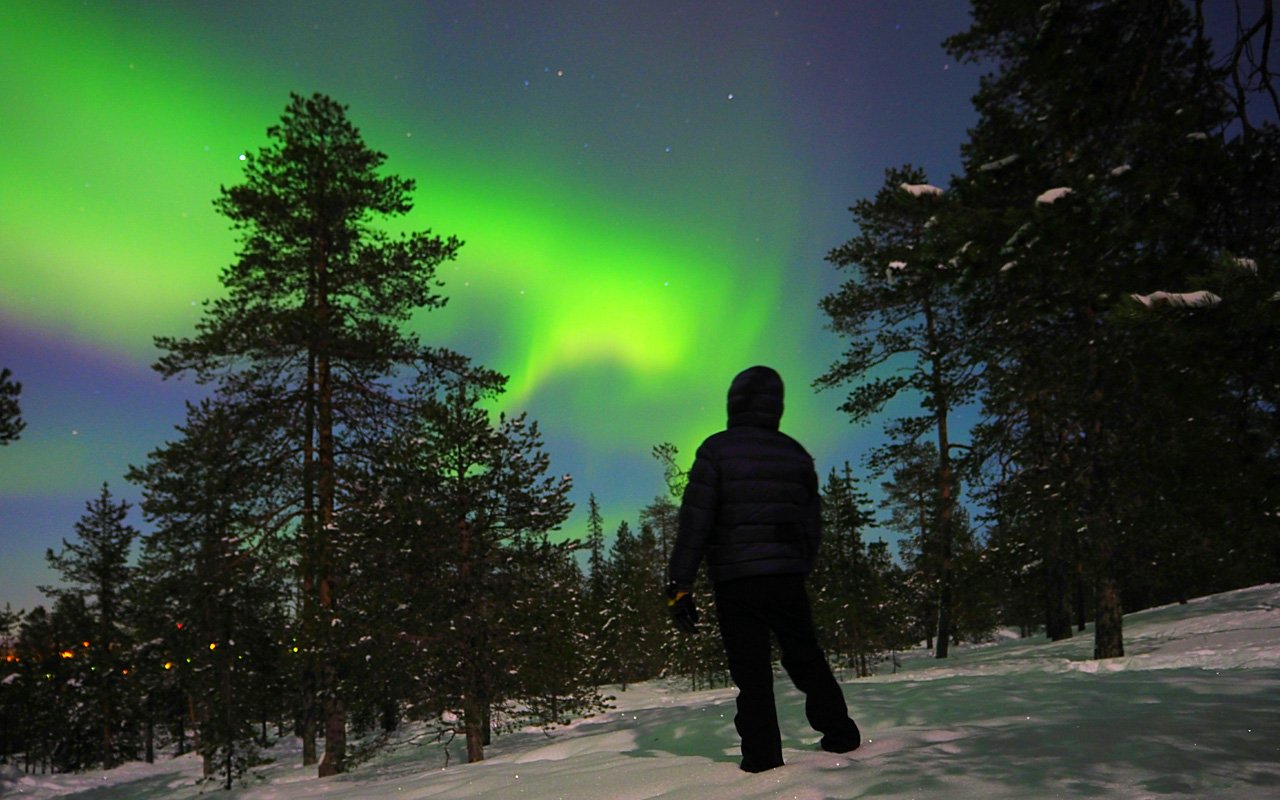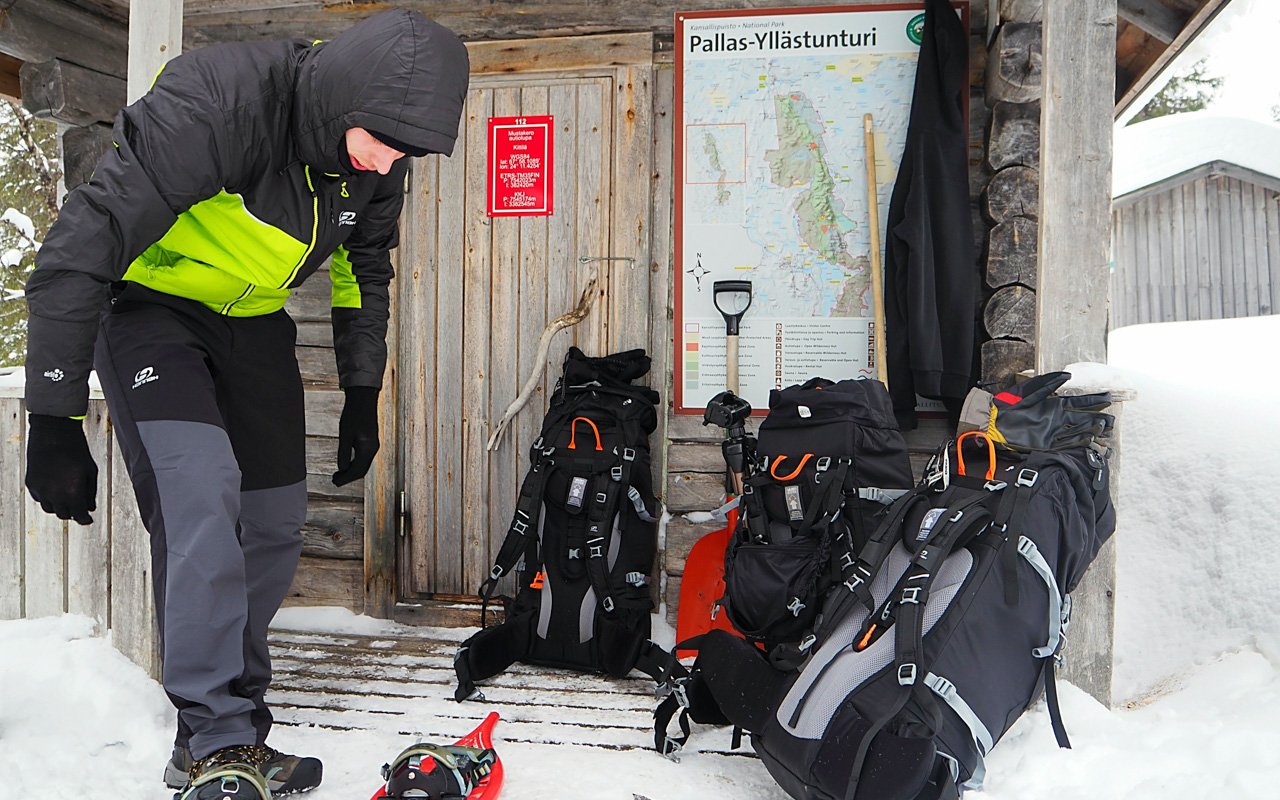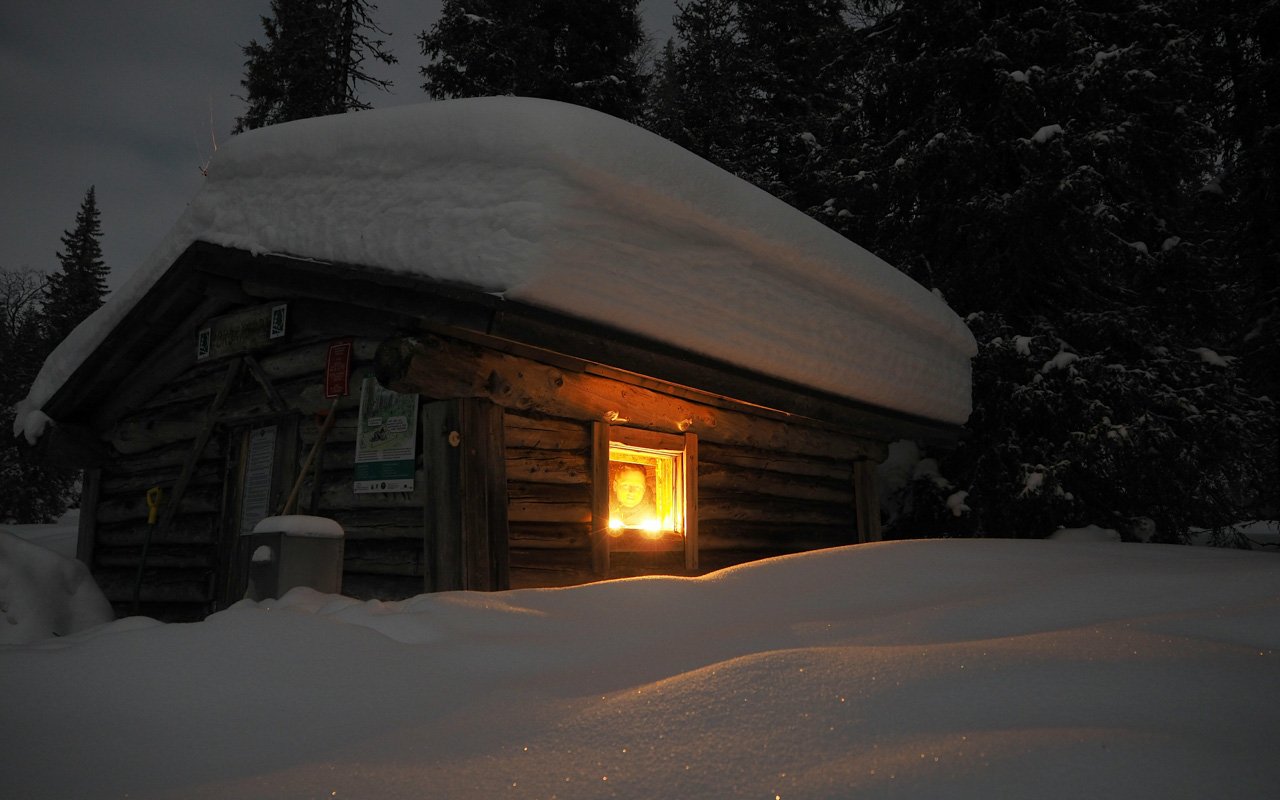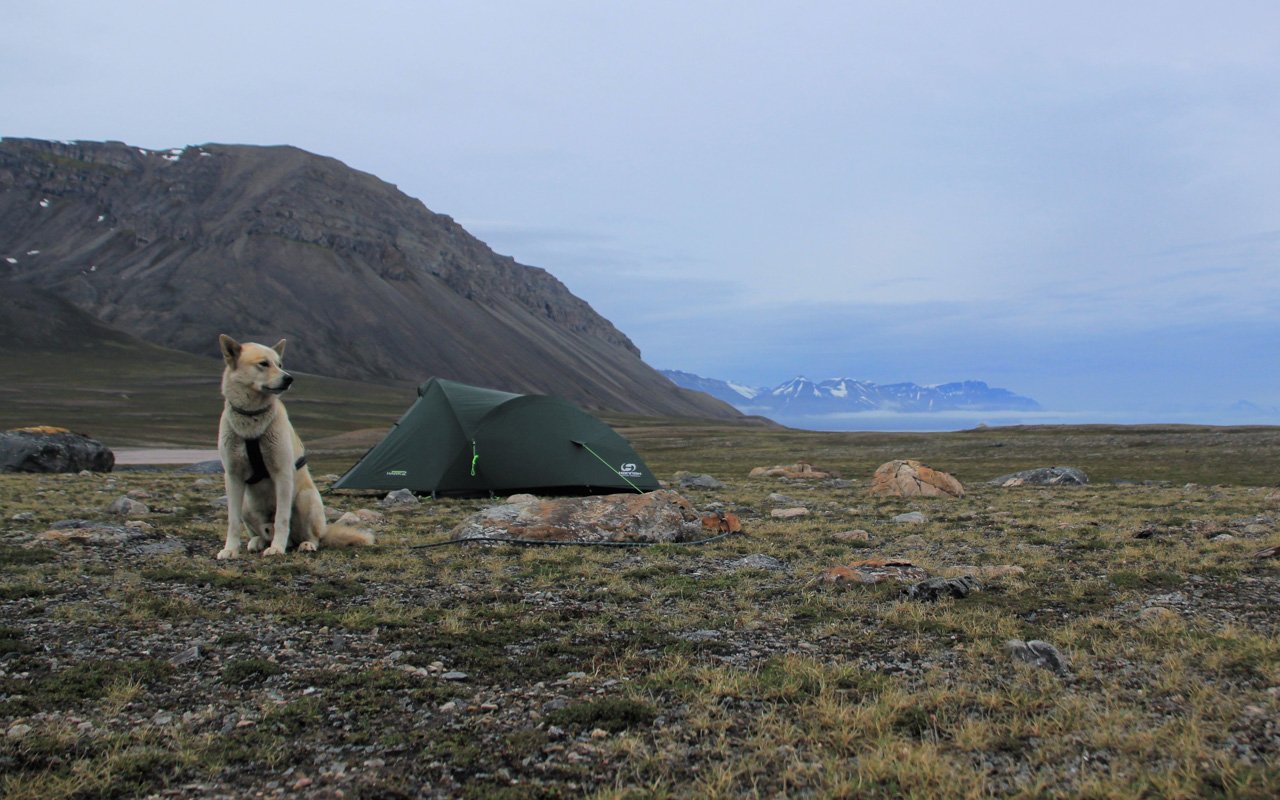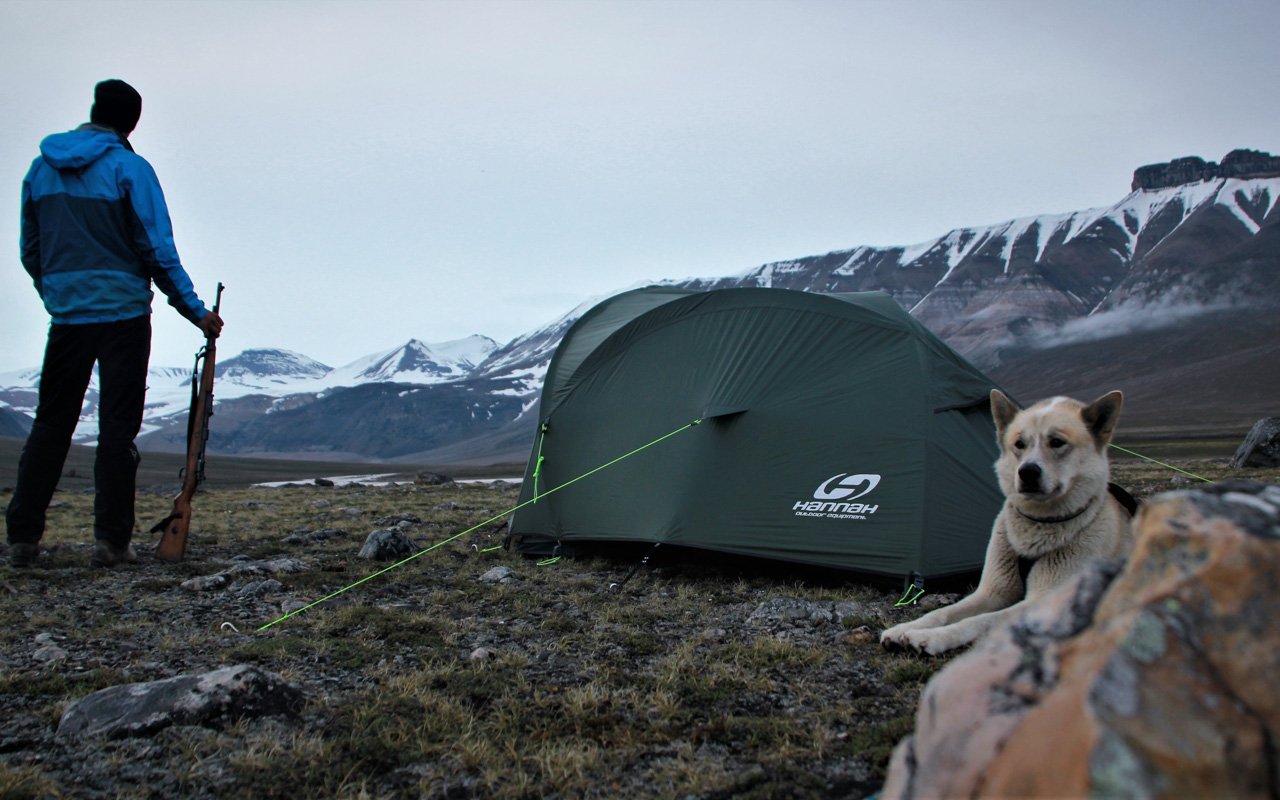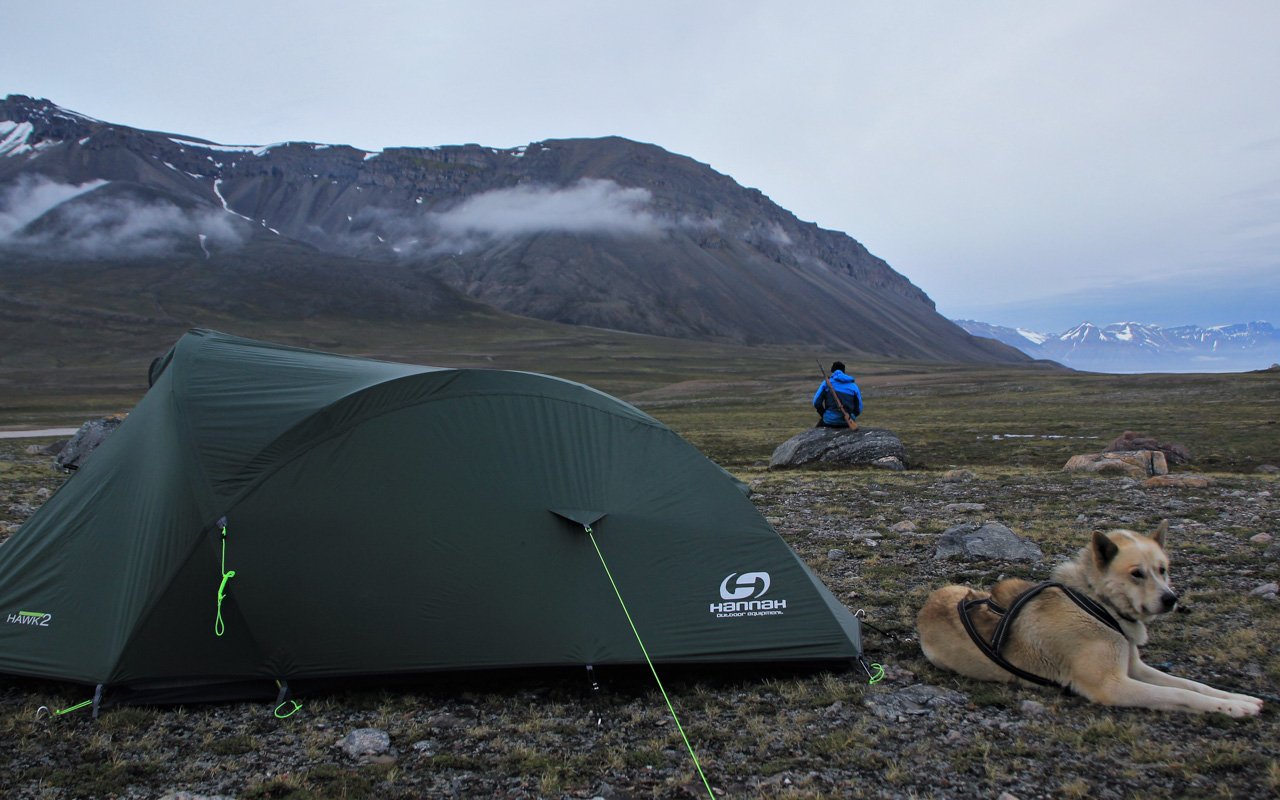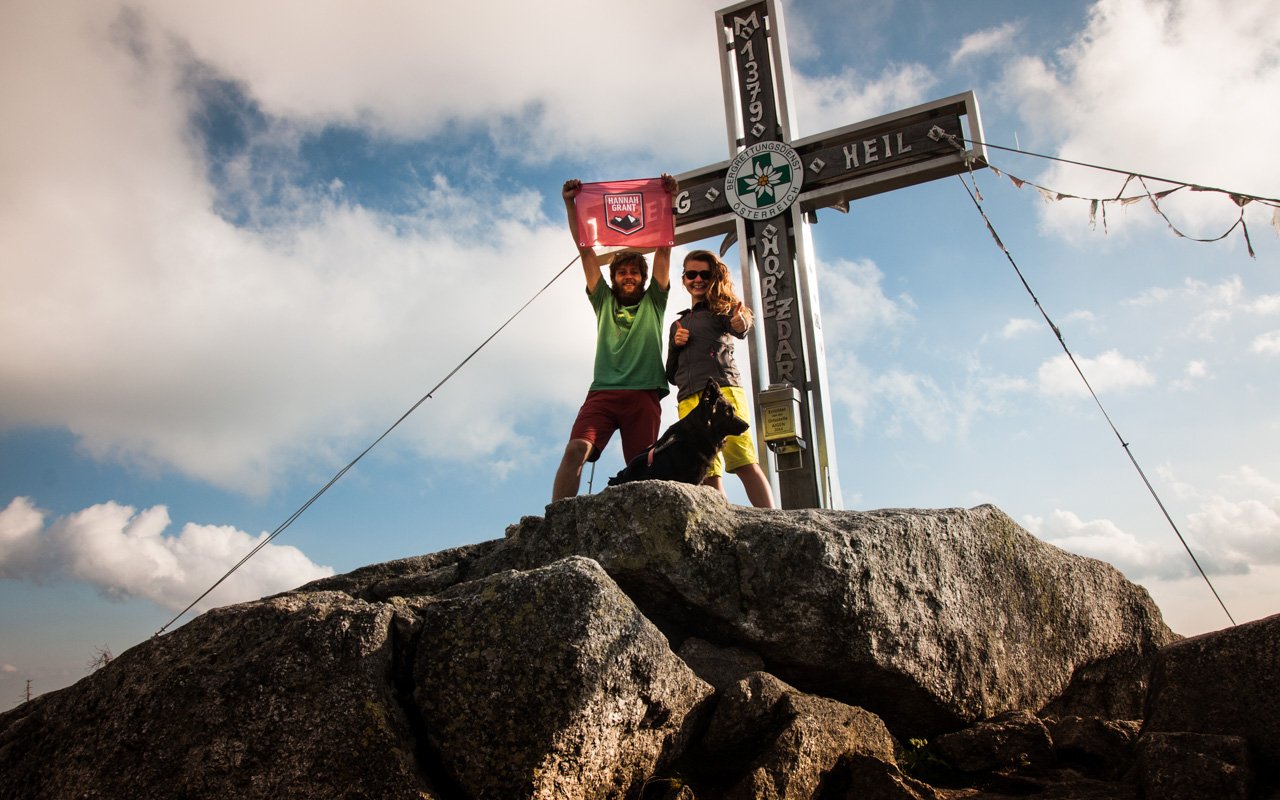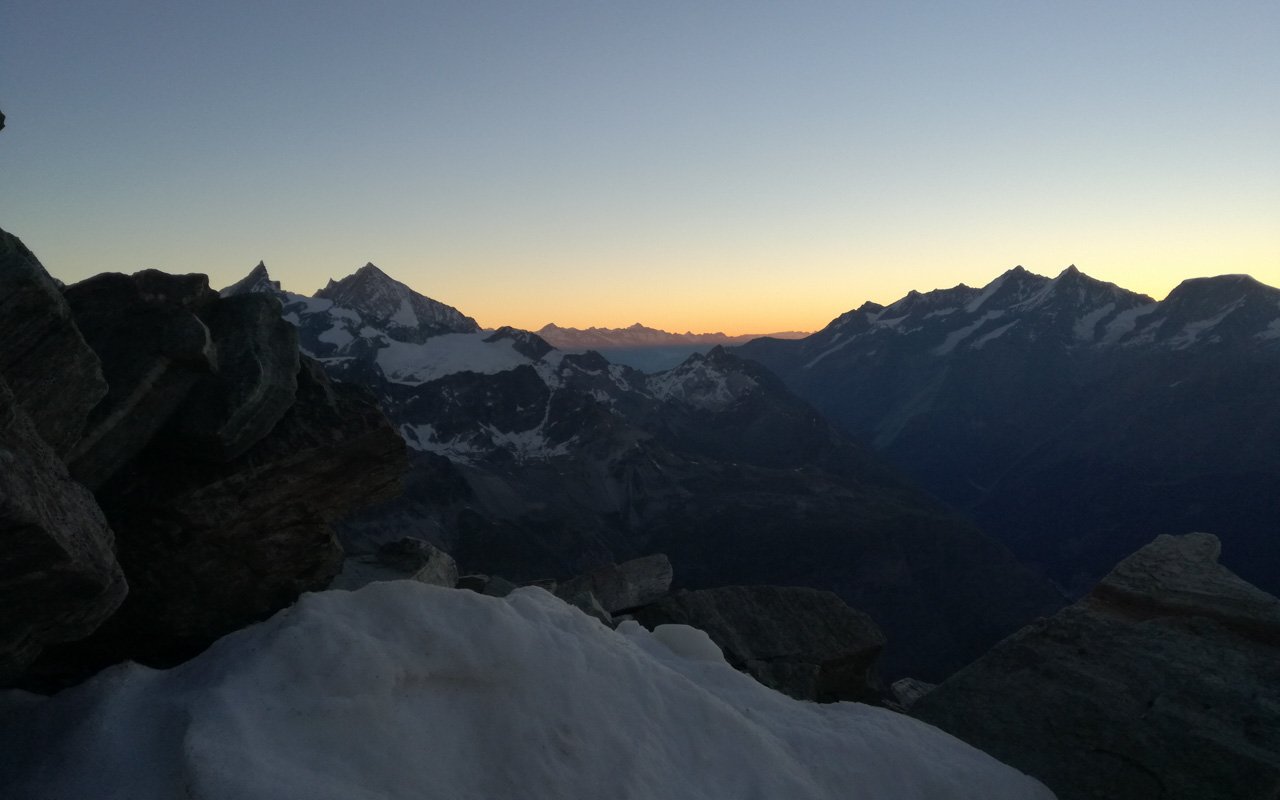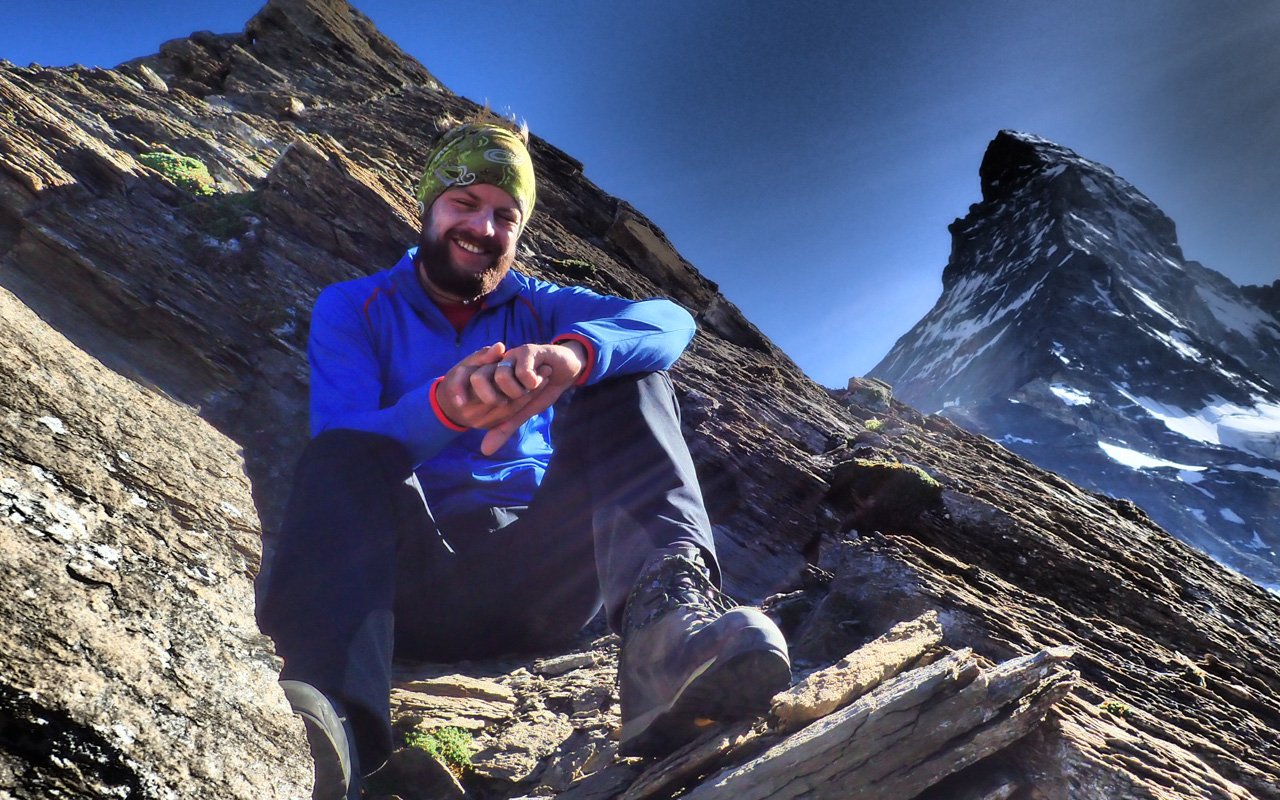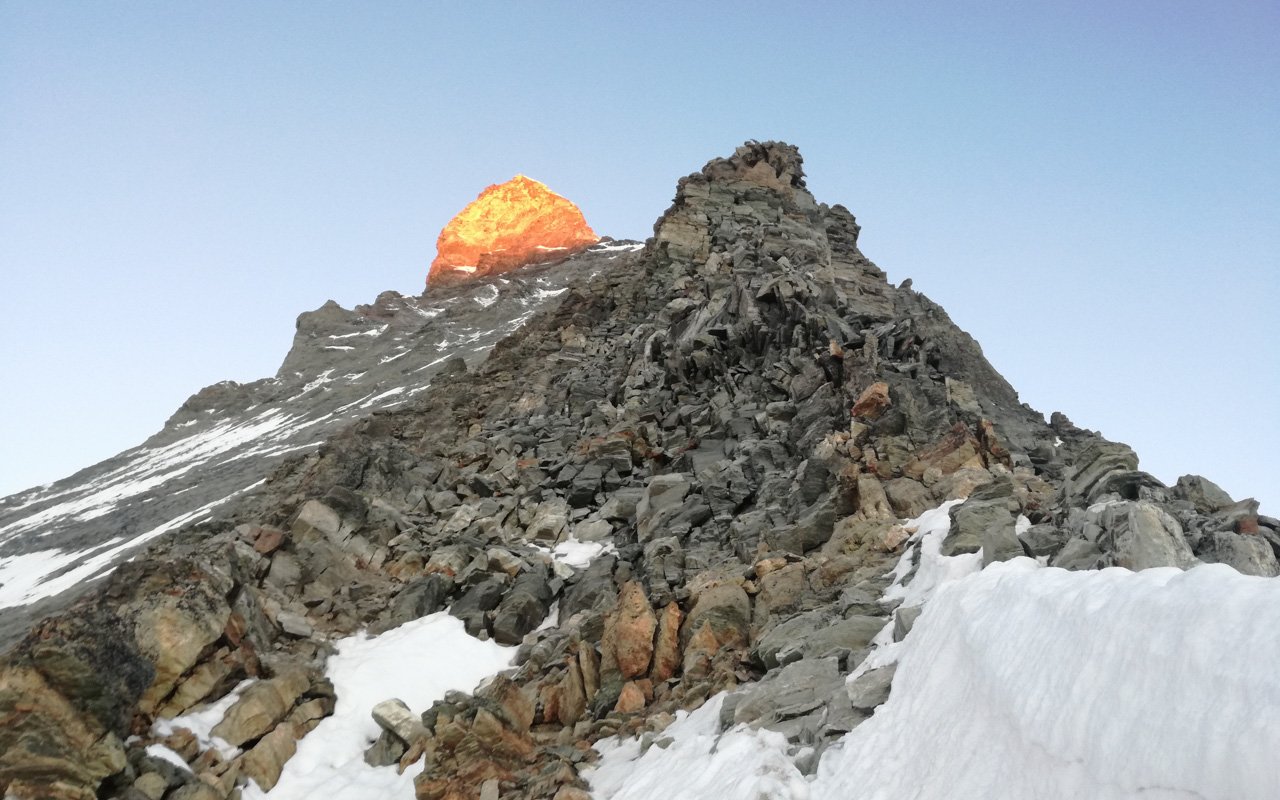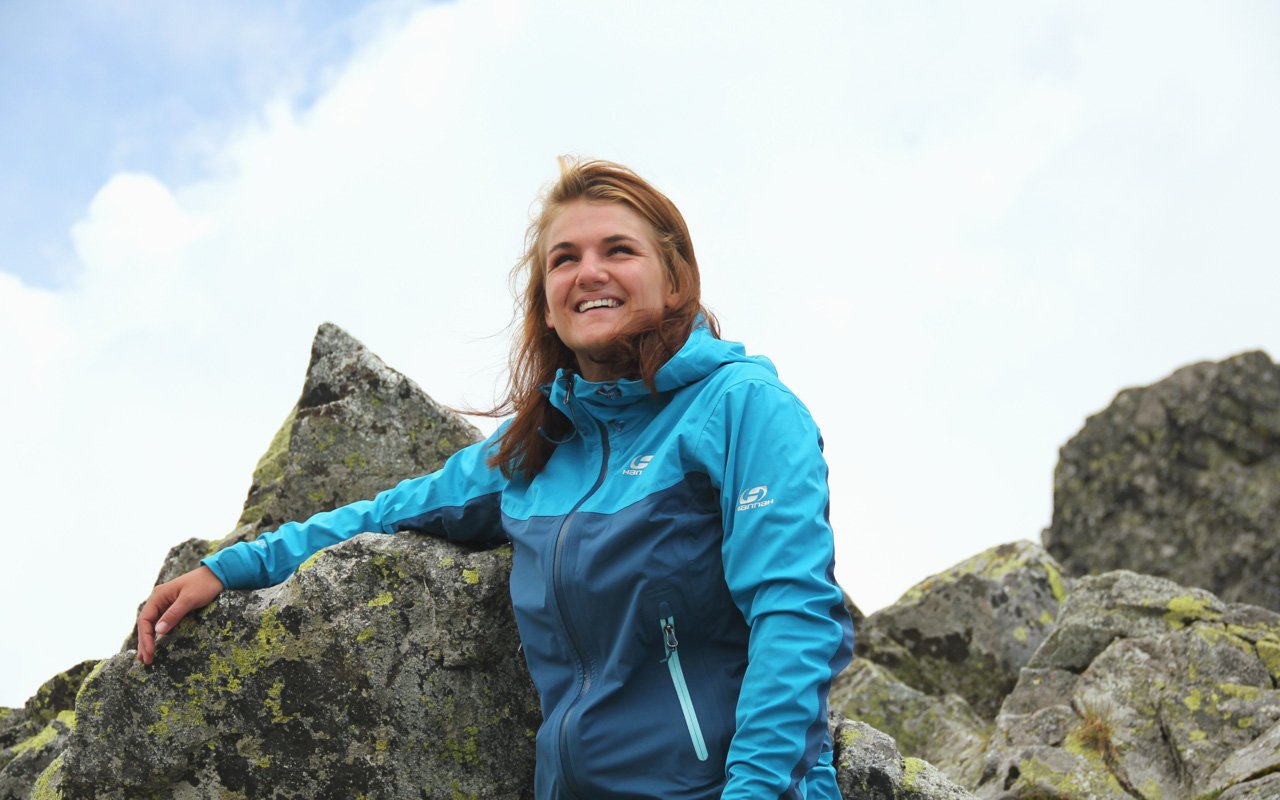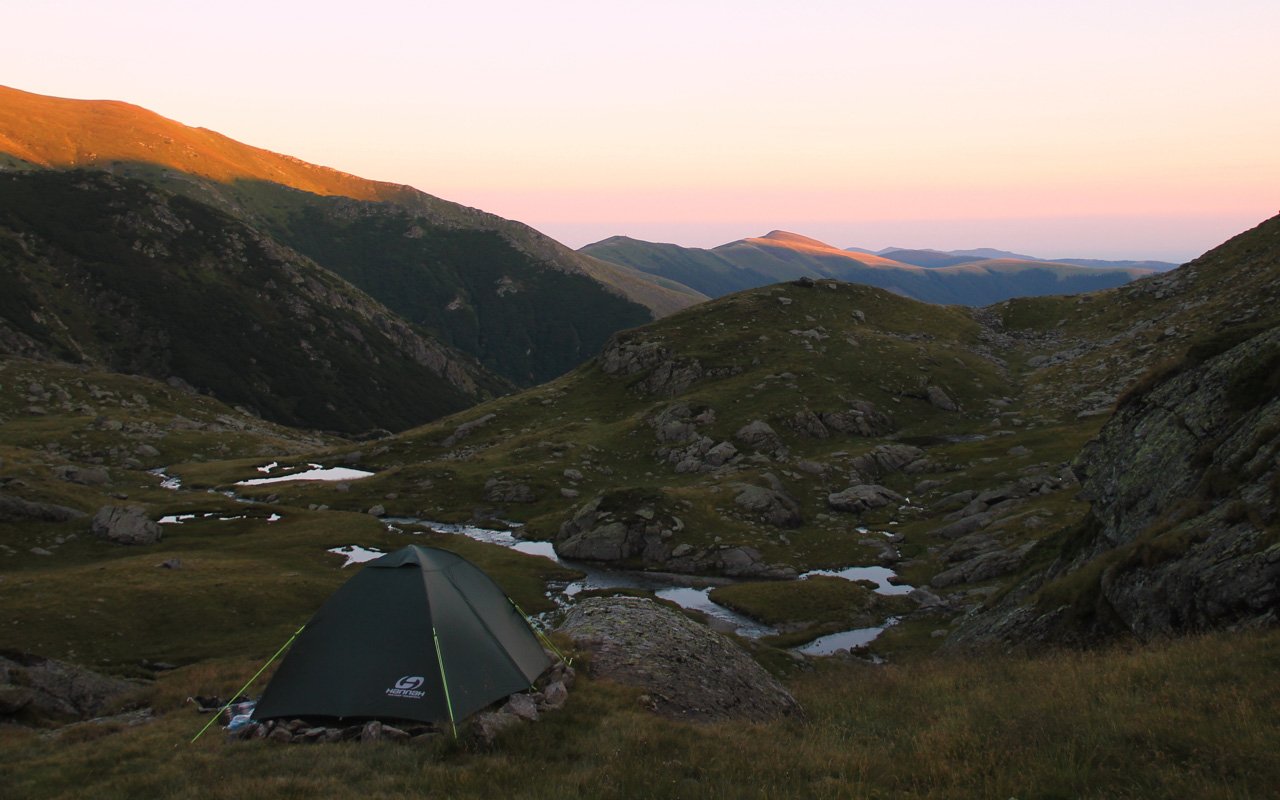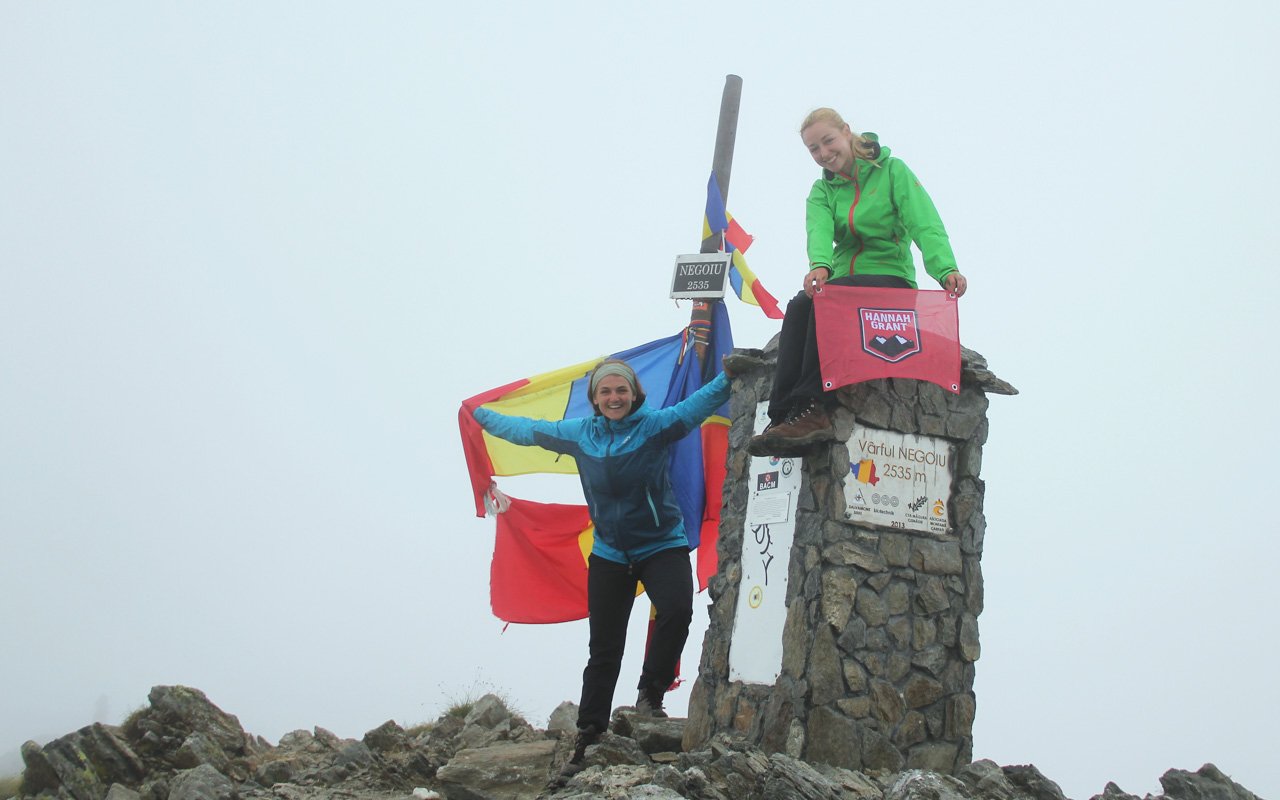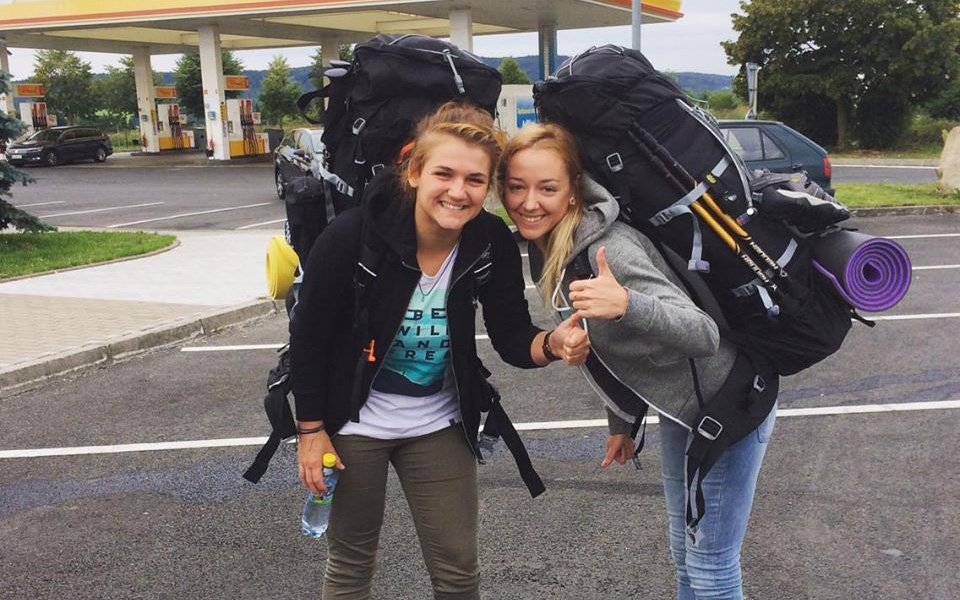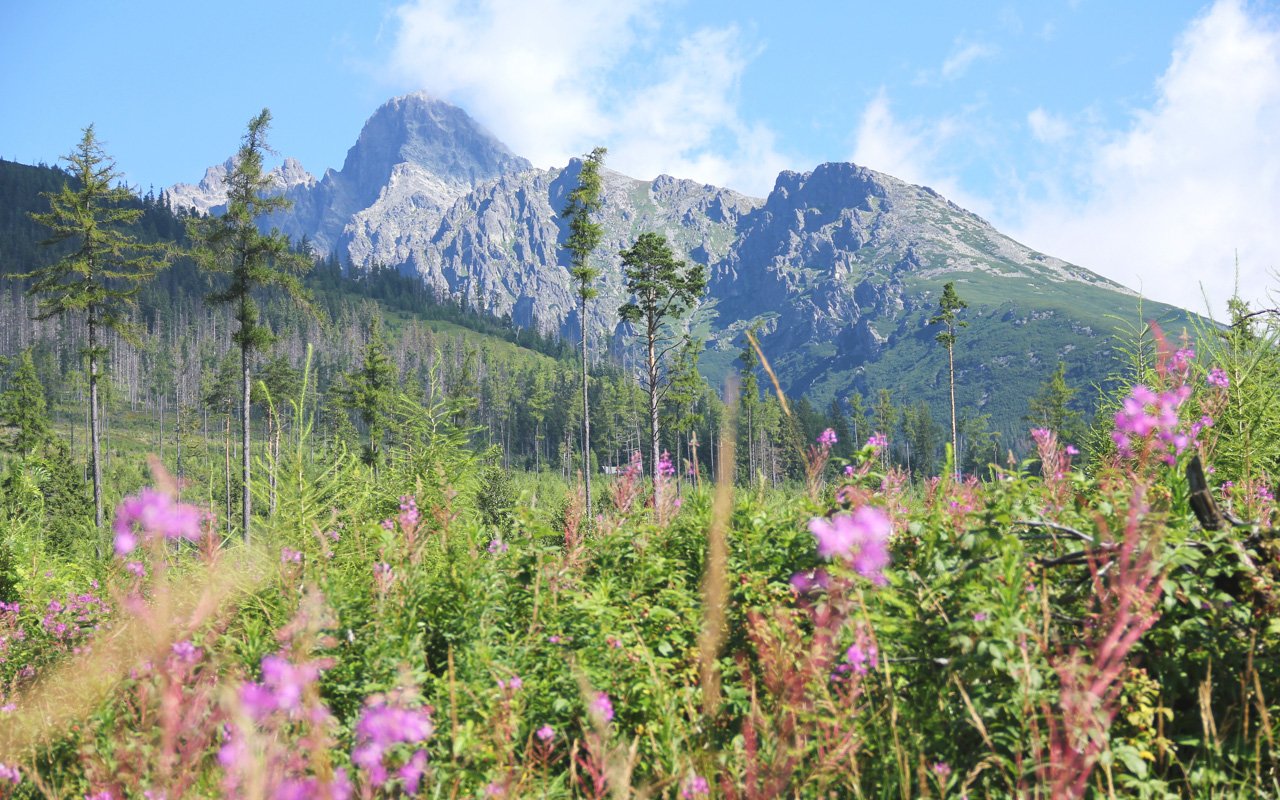WE SHARE YOUR JOY
After launching the Hannah Grant in 2016, we distributed outdoor products among 25 selected projects. Huge interest, lots of beautiful, breathtaking photos, your smiles and the enthusiasm for the “Hannah Grant” made us so excited we decided to continue this sponsorship model which has become really close to our hearts.

HANNAH GRANT 2020
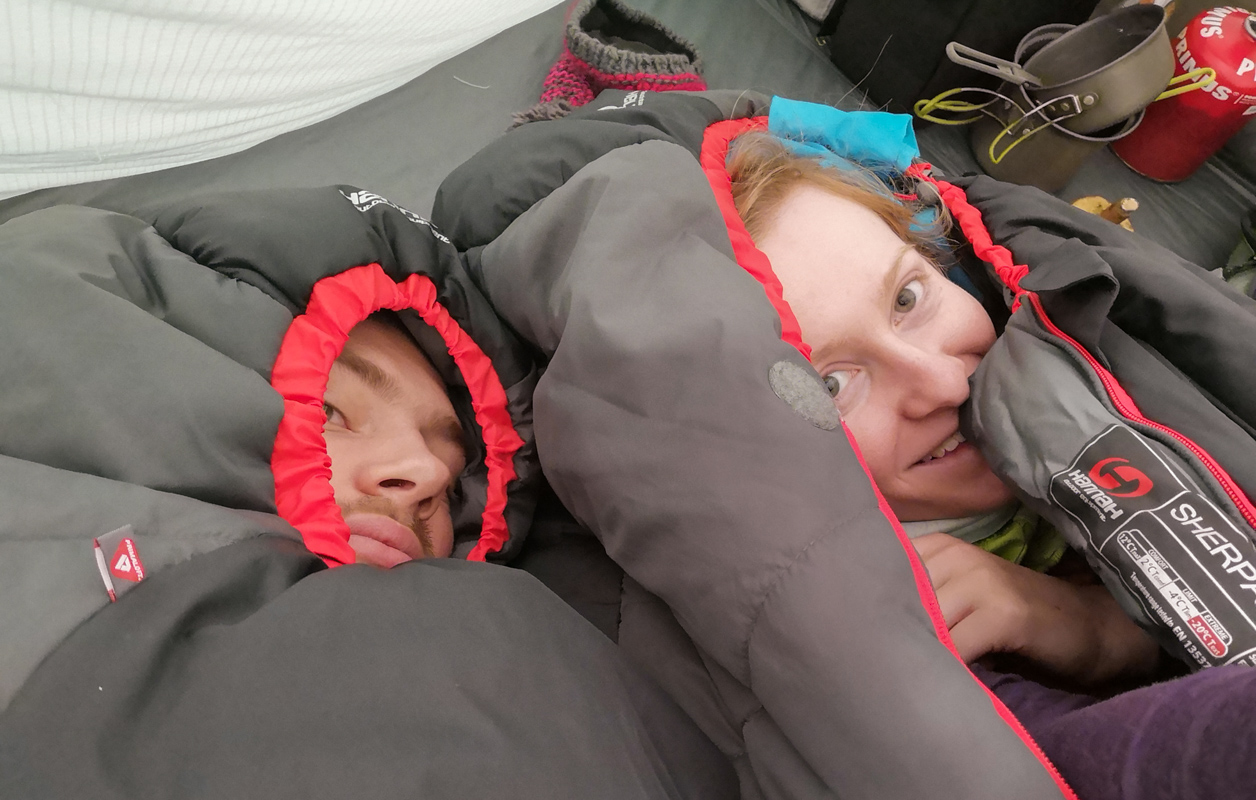
TRAVEL WITH ME - MY COUNTRY
In 2017, Sylvie and Matěj fell for long-distance footpaths, when they walked over the Pyrenees on GR 11. They completely fell in love with trekking and the following year, they became Hannah Grant members when they were planning crossing of the French Alps on the European long-distance footpath GR 5.
A few months after this, they came up with an idea to walk across the whole Czech Republic, stage by stage, so that anybody could repeat it. They wanted to make trekking accessible to everybody, without need to take months off work or travel around the world. And as a bonus, it gives everybody a possibility to get to know our beautiful country a little better. The country we all forget about when travelling all over the world.
They called the project Má vlast (My Homeland) and the beginning of this border journey was planned exactly on 28th October 2018, the 100th anniversary of Czechoslovakia. Their first steps led along the border in the Šumava National Park and continued clockwise. The atmosphere in the Upper Palatine Forest was full of history as they walked past vanished villages, they visited the westernmost and northernmost points of the Czech Republic, got across a 130-kilometre long area of the Ore Mountains and went on getting to know the beauty of our country step by step.
What can you experience just a few tens of kilometres away from home, in our beautiful homeland? Take a few days off and find out!

GREEN ISLAND nearby Taiwan
The Green Island, locally called Ludao, will stay in our hearts forever, as well as Hannah Grant. When travelling around Taiwan, we got a tip for visiting this island. It is said to be an ideal place for nature lovers and passionate photographers. It caught our attention the first time we heard of it, so the decision to visit this island was simple, quick and unanimous.
There are two option how to get there. A small plane for 19 passengers is quicker but more expensive one. Or you can take a local ferry which goes there twice a day during the off-season (in case the weather is good) and can transport up to 250 passengers. Obviously, we chose the ferry.
I can’t say the weather was bad. But it was very windy and there were huge waves. The ship was swaying. It was like 50 minutes on a rollercoaster. Now we understand why they call it „a sea sickness ferry“. We tried to get off as soon as possible.
There are so many beautiful places in the island and we spent two days exploring them.
Little Great Wall
Our most favourite place in the whole island. The Little Great Wall takes you up to Hsiao Changcheng which is the most beautiful view point in the island and obviously one of the most visited places. It offers a view of the east coast with Sleeping Beauty Rock and Dog Rock. The views of the ocean have thousands shades of blue. We were lucky and when we visited this magical place, we were there alone. One moment I was enjoying the views of the beautiful Pacific Ocean from the gazebo and suddenly my eyes were full of tears and I was full of love and emotions as I saw Michal, kneeling before me and holding a red box with a ring.
Yes!
He proposed at this amazing place, at that perfect moment when there were just the two of us surrounded by the beautiful nature.
And YES was my answer, although it took me some time to say it as he had really taken me by surprise.
So this year we are going to start a new adventure called „marriage“. ♥
Now you know why the Green Island is going to be in our hearts and memories forever. However, it’s not only about those amazing places and the big surprise Michal had planned for me. This small island has so much more to offer. There is a lot to discover, even in such a small piece of land.
Pebble-coral beaches, romantic bays, rock viewpoints, green reefs, gazebos, sunrises and sunsets, caves and views of the beautiful nature all around.
The island is also very popular thanks to its suboceanic wonders.
The way back
On the last morning in the island we went to buy tickets for the ship of death again, to make sure we get a seat. This time the weather was nice. The sea was calm and there were almost no waves so we could even take a nap during this nice journey back to Taiwan.
A quick summary:
WE REALLY ENJOYED VISITING THE GREEN ISLAND
and we really recommend it.
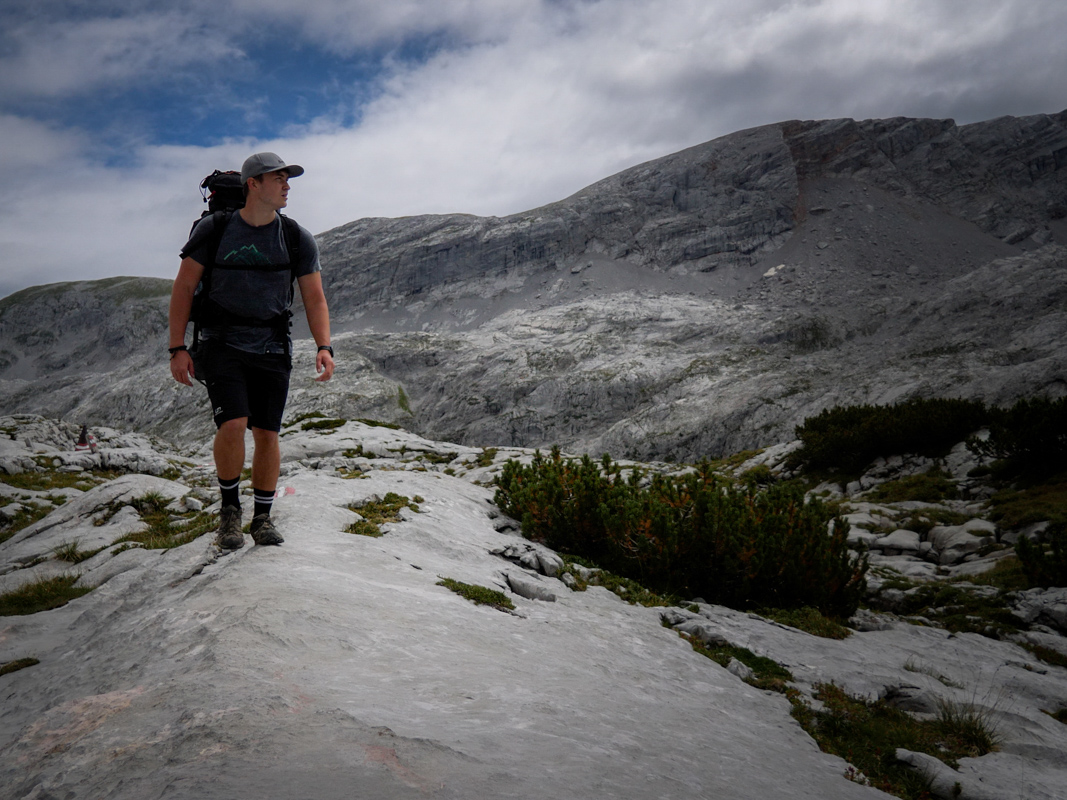
TOMÁŠ HUBÁČEK –The journey is the destination
A journey to Santiago, thousand kilometres of trekking in America or crossing over the whole Balkan. I’d like to say I have made one of those trips... You have to start somewhere, right? I’m used to being with other people all the time, I’m almost never alone and this was a great test of what it’s like to be just with myself. It’s different when you can’t take a train and be at your Mum’s in just one hour.
For a long time, I had wanted to make a trip – no matter where, but on my own. It was a coincidence I chose a year of the world’s pandemic so I didn’t have many options to choose from. In the end, I chose Austria.
In the middle of August I left foot Salzburg, which I had chosen as the starting point. The original plan was to go to the south over the Alps and walk to the Triglav National Park in Slovenia. It was an ambitious plan which I changed a few times, cursed it, gave it up and changed it again. In the end I arrived back in Salzburg.
In total, I walked something between 180-200 kilometres. I don’t know it exactly, because the watch I relied on and which was supposed to measure everything for me broke down on the third day and then I just carried it in my bag.
As I’ve said, my journey started in the outskirts of Salzburg and from there I took off for my first destination – Königssee Lake. On the first day everything went well and in the evening I came to probably the most touristic lake in Germany. And my first test was to find a place where I could spend the night. When I was planning this journey, I decided to spice it up and not to take a tent, just a sleeping mat and a sleeping bag.
The surroundings of Königssee reminds of the centre of Špindlerův Mlýn with a parking lot which is a size of an average village. It was in the evening and with my sweaty T-shirt, a backpack and a sleeping mat I stood out like a sore thumb – it was obvious I was about to do something I wasn’t really allowed to.
So as a proper criminal, I waited and when it got dark, I „stole“ a bench with a roof where I could spend my first night. The roof was definitely a plus on that night.
The problems repeated every day – where to sleep, who would I meet, was I going to be arrested for sleeping where I shouldn’t? But the basic question was always the same – how many spiders would climb up my mouth while I was sleeping!?
In the end, it all turned out well. I had a few personal crises which passed to mere blowing off some steam, such as „what the hell is this hill in front of me“!? Other were more difficult and yelling wouldn’t help. I had to give them some thought and just overcome them in my head, which had been the real reason I wanted to make this trip. To be with myself.
Was it hard for me? It was. Did I think at least once a day I would quit? I did. Would I do it again? Definitely!
Next time it might be the Santiago.

VANLIFE CZ_SK – CANADA
A few days ago, we came back from another of our annual adventures. From Canada, which we were able to experience both as travellers and workers, as well as New Zealand before, thanks to Working Holiday visas. They enable about 1200 Czechs, who are 35 or less, to travel abroad very year. There is a huge fight for them every year. Unlike visas for New Zealand, with a system of who comes first, Canada has a so called Pool they randomly choose candidates from. So if you travel as a couple, there is a risk that only one of you might get the visa. We applied in January and in March Ráďa got an invitation letter, which was half of the success. He just had to provide some required documents and a couple days later, the visas arrived. In the end of May, after a few week of nervous waiting, Dája received her invitation, too.
Like at the beginning of every our adventure, we spent the first few days after arrival adjusting to a new situation, exploring and arranging everything necessary for everyday life. We spent the first week in Calgary, where we opened bank accounts, contacted various potential employers and looked for accommodation. We knew for sure we didn’t want to stay in the city. The reason we hung out in Calgary this first week was an NHL match which Ráďa had got tickets to before we had left home. So we enjoyed this big event right at the beginning and then we moved to Canmore, a small town just next to the entry to the Banff National Park in the Rocky Mountains, an hour’s drive west of Calgary.
And why Canmore?
We know from many Facebook groups, blogs and interviews that Canmore is very popular with the Czechs. And it‘s not surprising. As this town is an entry gate to the national park, it‘s full of accommodation facilities, restaurants and sports centres – so it’s full of tourists and as such offers plenty of job positions. Another reason are the mountains. All around. Every time we looked out of the window or when we were going shopping, to work or for a walk, we could always see the town’s dominant feature – The Three Sisters. Unlike other smaller towns in the national park, such as Banff or Lake Louise, Canmore offers more culture and sports activities.
We moved to Canmore in the middle of November when there was almost no snow or frost. There was enough work so we started working immediately as cleaners in a hotel. We also managed to find accommodation quickly. When they opened the ski areas, we bought skis and a snowboard and as soon as we bought a car, we tried to spend as much time on the slope as possible. We went to Sunshine and Lake Louise areas. When it started freezing and the temperature dropped to -30 degrees Celsius, everything froze over. Not only our hair, eye lashes and beard on the way to work, but also all the lakes, ponds and playing fields, which were full of basketball, foot tennis, volleyball and tennis players in the summer. They all turned into ice rinks for ice-skaters and hockey players. There are four such fields with night lighting in Canmore, where you can enjoy these activities till late in the evening and completely for free. And seeing a snow cat on a road every day, it too can happen only in the north. J We were enjoying the winter and winter activities till the end of February, when the coronavirus arrived. Then all the areas were closed, passage through the national park was limited, parking lots, hotels and restaurants were closed and many people lost their jobs. Canmore, usually full of tourists, suddenly became a ghost town.
When the summer came, everything went back to normal, within the bounds of possibility. Just without foreign tourists. Although there were still number of restrictions, we really enjoyed the summer. We went camping and hiking in the mountains. We climbed up countless of mountain peaks, visited several lakes with incredibly turquoise water, met bears, moose, wolves and foxes, spend nights at bonfires and in a rooftop tent. In the next article, we are going to take you to our most favourite treks and places with us.
Meanwhile, if you want to peek at everything we visited in Canada, go to
https://www.instagram.com/dajahof/
Now, when we are back at home again for a longer time, we are going to hop on our camper van and explore our country for a while. We are going to share our trip tips at our web https://www.vanlifeczsk.cz or Instagram https://www.instagram.com/vanlife_czsk/ J
Thank you for reading and see you next time!
HANNAH GRANT 2019
Winning film of international festival SPORT MOVIES & TV 2020 Milan – Italy and czech Sport Film Liberec 2020
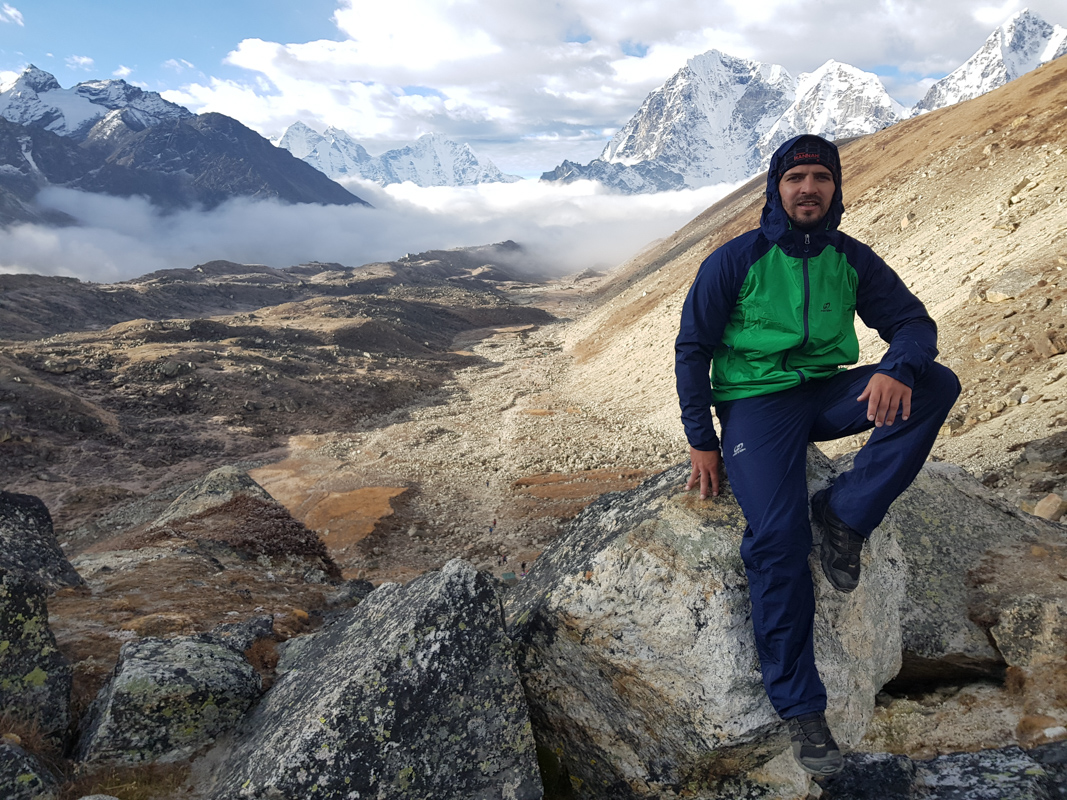
DAWAY – NEPAL
It’s 1st October and I’m standing in the doorway with my backpack. I’m setting out for a new adventure. It’s the second morning. I’m landing in India. All my senses have gone crazy. Delhi is a different world. October 3rd. I’m taking a train to Taj Mahal. Then a rickshaw to the ends of the world. And a sleeper bus to the Nepalese border. Next afternoon, I’m fed up with India. Literally. And the dust situation isn’t any better on the Nepalese side.
On 5th October I’m cycling in Lumbini Garden. It’s the place where Buddha was born. I’m spending the night in a village which is totally dullsvile.
On 6th October I’m moving on along the southern border to Chitwan National Park. I’m dating a rhino. Finally some nature!
On the 7th I’m bathing elephants. Then they’re bathing me.
On the 8th I’m trekking in a jungle. I haven‘t seen a tiger. I hope at least it has seen me.
On 9th October I’m leaving the Nepalese south and going to the capital. Kathmandu
10th October. I’m walking through the city and climbing up the Monkey Temple – Swayambhu. It’s Dashain.
October 11th. My loneliness has come to an end. The three of us are watching cremation ceremonies in Pashupatinath.
On 12th October we’re flying to the world’s most dangerous airport. The trek can start.
13th October. We’re trying to find our feet in the Himalayas. Namche Bazaar. Sleeping over at a sherpa’s.
14th October. We’ve already made probably the most difficult part. Our reward is the Tengboche Buddhist temple. Mysterious.
15th. Trekking to Dingboche. At this point, there is always a lot to see. On the way down too, but especially on the way up.
16th. We are acclimatizing. Doing the laundry. Taking shower! And tasting the air in over 5,000 metres above sea level.
On the 17th, the giant peaks are within reach. Pumori and Nuptse look impressive. It’s getting tough.
The big day – 18th October 2019.
Khala Pathar (5,545 metres above sea level) in the morning.
Everest Base Camp (5,364 metres above sea level) in the afternoon.
I’m dying in the evening.
19th. I haven‘t died. The descent can start. It’s quick.
20th October. Namche. At the sherpa’s again. The last dal bhat. I always liked rice. Before.
21st. The last night in the mountains. A Buddhist festival behind my window. The airport behind the forest.
On 22nd we are enjoying busy Lukla. In the end, we are taking off. But to a different place.
23rd October. Back in Kathmandu. Durbar square. Alone again.
24th. The last day. Morning market. Packing at noon. Evening traffic jams. At midnight, |I’m changing planes in Dubai.
It’s 25th October 2019. I’m landing in Prague at 8. At 9, my family is greeting me. They are saying I need to shave.

SOUTH AMERICA BY CAR
We had this crazy idea for a year. And the longer we had it, the more real it was becoming, when finally we decided to give it a go. If you had told us we would go through Patagonia or climb a 6k mountain a year ago, I would have tapped my forehead and ask if you were OK. It was a challenge and we had no idea what to expect, so we just dived in. We took off for South America to work and travel there. A great Hannah team helped us to choose and prepare suitable clothes and equipment
We could work thanks to WHS visas, which are the same as for New Zealand. The difference is there is no quota and you can apply anytime. When we got the visas, we were incredibly happy but also scared. There was little information and even embassy we asked for help at the beginning of our journey wasn’t able to give us advice. With poor Spanish and smiles on our faces we managed to get ID cards and buy a Toyota 4Runner, which we transformed into a camper van. We call it Marčélo. It took us 3 weeks but we did it.
You can park anywhere in South America, but it’s better to be ready. That’s why we always used the iOverlande app. Not only it helped us to find a place to spend the night, but it also warned us of any potential danger. It’s for free and can be used offline. As well as Maps.me. We swear by both of them. When offline, they can sometimes lead you to undiscovered areas which you might have problems to go through, but you get some unforgettable memories and experiences! In total, we went through four South American countries – Chile, Argentina, Bolivia and Peru. We camped at different places, with view of mountain peaks covered in snow or wild ocean and even in the centre of a busy city. We worked for nine weeks in Chile and ASrgentina, drove incredible 25,000 km and walked hundres of kilomeres. We pushed our limits and even hit the rock bottom. However, we wouldn’t change this experience for the world.
To mention the best places, it was definitely Patagonia full of lakes, forests and glaciers. Ruta 68 in Argentina, full of incredible formations which offered amazing photos from all angles, day and night. Huana Potosí, the only 6k mountain we have conquered so far, the Sajama National Park and thermal springs which offers a view of alpacas rollicking around a volcano. In Peru, number 1 was definitely Machu Picchu and its „sister“ Choqueqiero, which is still undiscovered and gives you an opportunity to explore the place on your own, and last but not least beautiful lakes and mountains as Alpamayo or Huascarán.
We tried Airbnb only three times in that year, when we were sick or repairing Marčélo. After demanding treks, our reward was a dinner in a restaurant, so we also lent a lot of new and interesting recipes. We’ve also learn to be more patient, because being together 24/7 means loads of tolerance. There were some moments when we thought we should give up and go our own, separate ways, but we didn’t want to take hasty decisions influenced by anger, we talked it over and found compromises and our adventure could continue. It’s almost a wonder we didn’t kill each other, actually, it made us stronger and every problem now is a piece of cake for us. Travelling around South America isn’t easy at all, it’s a challenge, but what you experience cannot be compared to anything else.
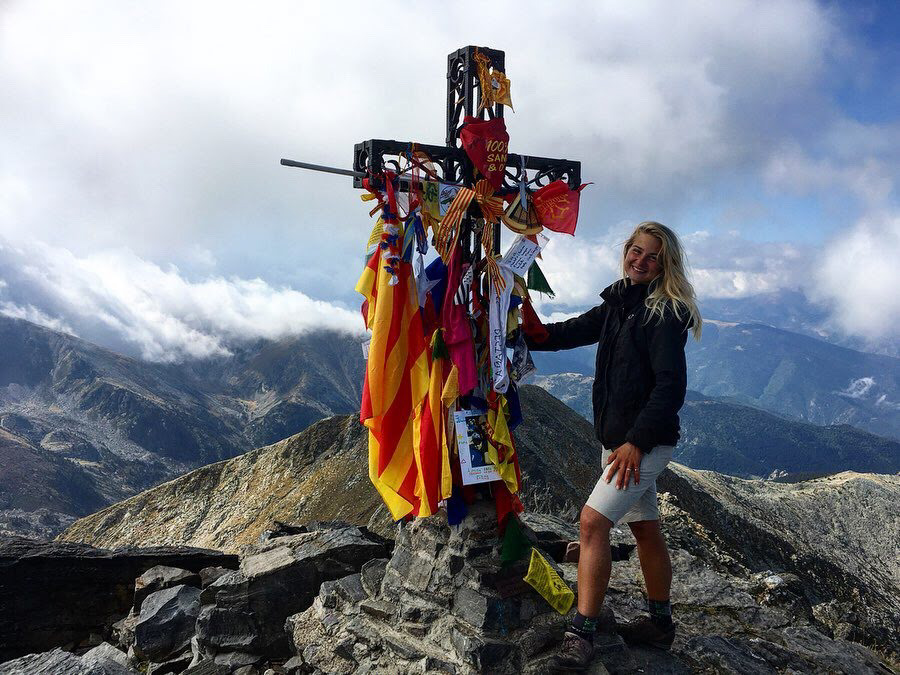
GÁBI HORNÍČKOVÁ – GR10 + RILA / PIRIN
Thanks to the Hannah grant, I was able to make my dream come true. Actually two dreams, but I’ll get to that. At the beginning, there was a crazy idea to walk 950 km over Pyrenees on my own. And thanks to Hannah, I could make it.
After I graduated, I wanted to walk a long-distance trail and I decided for Pyrenean GR10 from the ocean to the sea. I didn’t have much equipment but I definitely didn’t lack courage. That’s why I approached Hannah with their Hannah Grant, which supports „ordinary travellers to make their extraordinary dreams come true“ and I asked if they could support me and my mission. I didn’t really think it was going to happen, but I wanted to try. We briefly met in their headquarters in Pilsen, got to know each other a little better, talked about the trek and equipment – and it all came off! The Hannah Grant supported my dream journey and provided me with essential things I needed every day for those two months: a tent, sleeping bag, backpack, trekking poles and clothes. GR10 trail is full of beautiful mountains and lakes and you can camp almost anywhere there. I wasn’t sure I would be able to make the whole trail but I must say knowing that the Hannah team believed in me really motivated me.
After GR10 I started working, but as I had really enjoyed hiking and trekking, I decided to use a part of my holiday for another trip. I had to change my plans at last minute because of the pandemic. Eventually, I decided to walk over Rila and Pirin mountain ranges in Bulgaria. I had been attracted to the Balkan for a long time and those Bulgarian mountain ranges met all my requirements I had had for GR10 – high, diverse mountains, lakes and camping which is not as controlled as in other countries. I approached Hannah again to ask if they would like to co-operate and support this ambitious trip of mine and it was a nice surprise when they said yes. The Bulgarian mountains surpassed all my expectations and I’m proud I made it along with the Hannah equipment again!
The whole Hannah Grant encouraged me to believe I’m good enough to be one of their ambassadors, which makes me feel incredibly happy. I’m glad this program offers chances to young travellers, because it’s not only material, but also psychological support – that somebody really believes in your dream. I’m grateful both my trips came off really well and looking forward to next ones. Thanks to Hannah, I really had this „Outside is home“ feeling. J
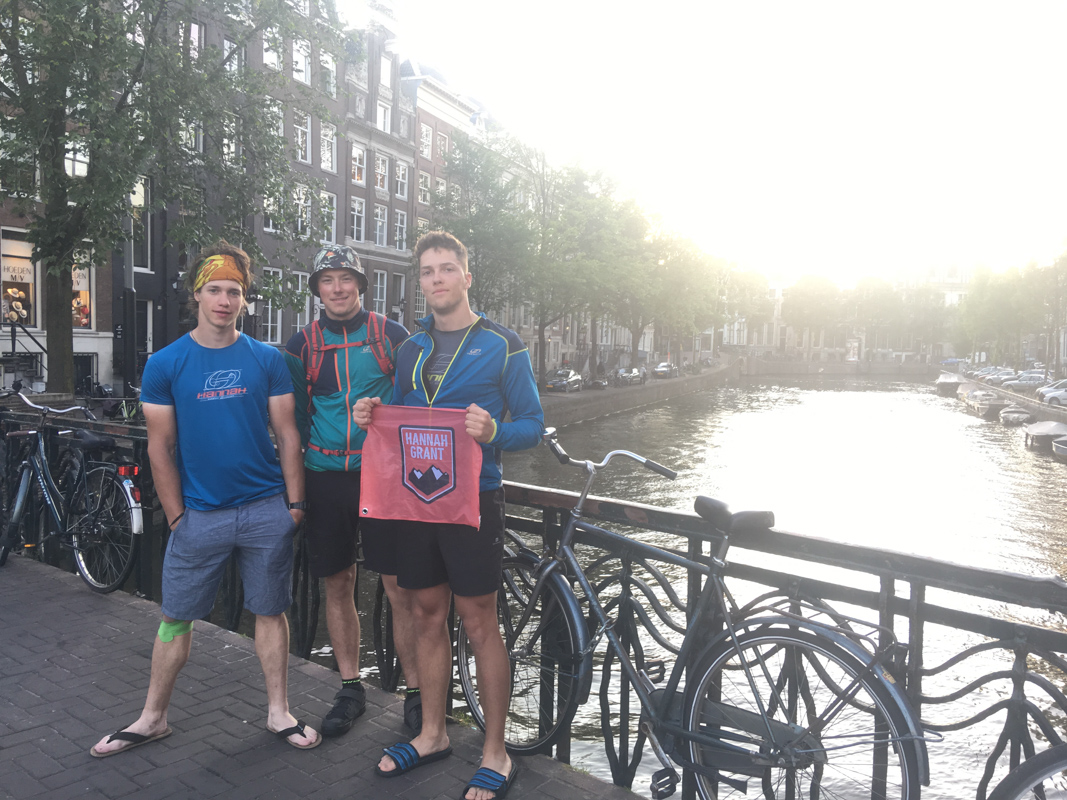
Cycling from Czechia to Amsterdam and Paris or How (not) to die 1,500 k away from home
In July 2019, we took off for a long, once-in-a-lifetime journey full of hardships which left us with a lot of positive impressions. We planned to go across Germany, the Netherlands, Belgium and a part of France. To leave our homes in in the north of Bohemia and go towards Amsterdam and the Eiffel Tower. On a bicycle.
Our motivation for such a journey was an expedition the three of us (Petr, Dan and Ondra) had made a year before. The spontaneous idea to cycle from our homes to the sea in Italy turned into an experience of a lifetime. Back then, it was only 900 km. And it’s not about cycling itself, but rather about what you can see and experience in such a short time. It was an eye-opening experience which gave a new perspective on the world. That’s why we decided to repeat it the next year and we chose the west instead of the south. It’s important to have a final destination which you can picture during the whole journey – and for us it was the Eiffel Tower.
Those who know us or followed our last journey know we aren’t pros and our expedition isn’t a race. Maybe it’s a reason we made it, because if we hadn’t been able to make fun of ourselves when it had got difficult, we would have probably lost our energy. There were some troubles from the beginning; apart from minor damages to our bicycles, Dan’s front derailleur completely broke down. The rest of the journey he had to use a stick he would found before every ascent to change gears.
Apart from pain in different parts of our bodies (including the biggest one, where a callus started to grow), there were some other health issues in the middle of Germany, but we prefer not to describe them in detail. If you are going across a Dutch plain and the scenery has been still the same for the last 30 km, it can get into your head. But it’s nothing you couldn‘t solve with a bit of sense of humour. We took many breaks which made a big part of our day as some of them lasted for hours. We consistently refilled calories (you wouldn’t believe how much food you need to eat when you cycle over 100 km a day), relaxed and meditated at bizarre places as supermarkets‘ parking lots. Our temporary lunch sanctuaries often reminded of a homeless campsite.
We carried all our equipment and clothes on our bicycles. To be honest, we didn’t carry much. For example, we only needed two T-shirts for the whole trip. We had the experience from the last journey that it’s best to travel as light as possible. We spent every night outdoors or in a campsite with our two tents. After a difficult journey, we usually made something delicious using the gas cooker, summarized our day in our Instagram (you can still read it here: https://www.instagram.com/bratrstvobolaverite/) and got short sleep before the next day on a bike. There were 15 days in total and after these 15 days and 1,633 km we finally reached our destination. And that’s how we got another indescribable experience in unpredictable German hills, the beautiful Dutch nature and cities and enchanting scenery of the French countryside.

OTHER WAY AROUND – THE ISLANDS OF WIND AND RAIN
We’re two sisters who love mountains and Scotland. The last time we were there, we explored Barra, a tiny island in the Outer Hebrides. And in 2019 we decided to go back and explore the whole group of islands. All the way from the south to the north.
It’s one of the least populated Scottish areas, which could mean some troubles we had to be ready for. Shops are quite a long walking distance from each other and they rely on ferry supplies, so we had to travel „heavy“, carrying supplies for a longer time. „Wet in the tent, wet in your shoes, wet everywhere.” We had expected everything: difficulties, bad weather and biting flies, so called midges. The fact that the reality was quite different was a pleasant surprise. You see, when the weather gets nice in the Outer Hebrides, it stops raining, the sun starts shining, the midges disappear and the wind stops blowing – then it’s heaven on earth. The islands can be really inhospitable and any kind of good weather is a welcome surprise. And finding a paved path in the middle of a peatbog, it truly is a luxury here.
From Barra, the southernmost populated island in the Outer Hebrides, we took off for the northernmost point of this group of islands - Butt of Lewis. During 16 days we explored 11 islands and we walked over 350 kilometres; along white long beaches, on the dunes and sheep paths, across moorlands, peatbogs and swamps with no paths. Sometimes we climbed up a hill for some nice views or discovered a hidden bay with seals. We were there during the main tourist season, but sometimes we met only two people a day and they were usually local, especially in the southern islands. Actually, we can't say who found these encounters more interesting. It always turned out to be a nice talk, we learnt something new and the locals were excited we had decided to explore this paradise on foot. It wasn’t until we got to the north when we finally met „real“ tourists and even there, there were only a few. Until then we had come across three walkers as crazy as us and over a dozen cyclists. Even though the Hebrides are a part of Europe, it‘s kind of a forgotten territory. Maybe the European ends of the world, with beautiful, wild nature.
We can’t even describe everything we experienced in the Outer Hebrides. You must experience it yourself. And we can only recommend that. Falling asleep every night with the sound of waves and sheep, it’s something we could get used to. As well as to beautiful views, long beaches, few people and freedom of movement and ideas.
HANNAH GRANT 2018
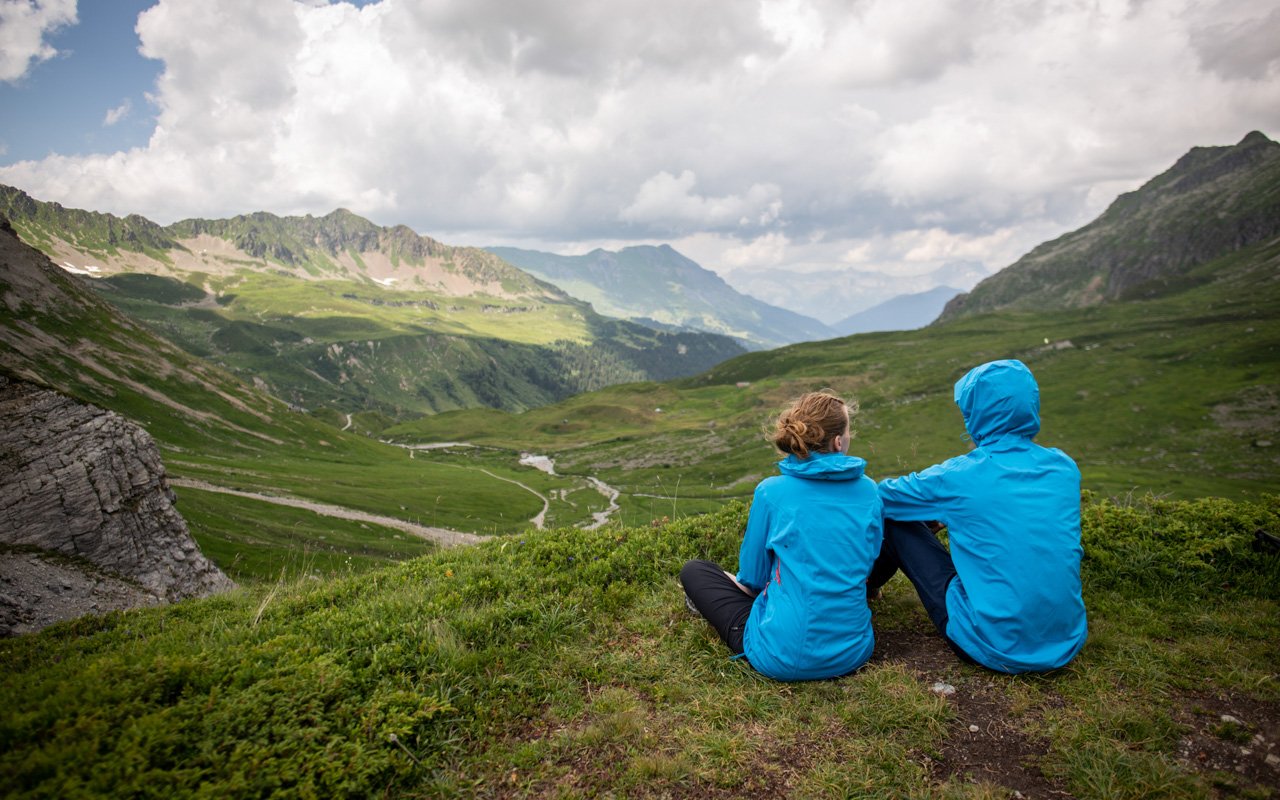
TRAVELWITHME – GR5
GR 5 was a fight, but a beautiful one! My knees are still little hurting as I’m writing these lines. It’s just a nice reminder of the Alps not letting us pass without a struggle.
GR 5 begins by Lake Geneva on the Swiss and French borders. And this first phase lets us clearly know that this route will try to make everyone regret using GR 5 to get over the Alps!
Although it was just 16 kilometres long, the elevation difference was quite significant, with ascent of 1.870 metres and descent of 1.225 metres. And it didn’t change all the way to Nice. However, it got better over the next few weeks. We got used to going to sleep before dusk and waking up after dawn. Our muscles adapted to everyday walking and backs to wearing heavy backpacks and we felt joy even during our climbs. But we felt the happiest at tops and often we were even so lucky we could see the beauty waiting for us the next day, or couple of days!
The more you approach your final destination, the more you look forward to finishing your journey. That’s why it’s important not to rush it, find some time to relax and first of all, enjoy the fact that if everything goes well, it’ll just take couple more days to finish crossing the Alps on our own. And it’s definitely going to be one of those experiences we will cherish and gain energy from for a long time! And that’s why we entered Nice at dawn, after spending our last night in the open air in the dust of GR 5, the trail which successfully took us through the entire French Alps and where we spent beautiful 31 days.
DISCOVER NOW – CANADA
Pacific Northwest is a region in the west of North America comprising American states Washington and Oregon and a Canadian province British Colombia. Our journey included two states, two tents, 14 days and 4 members.
Mount Baker – The World Snow Champion
From Vancouver (a quick note – go there!) we headed south and we soon arrived to the borders with the USA, which we ploughed through with the elegance of a 20-ton crane. From there, we set out to the middle of a ridge – under Mount Baker glacier, which is the snowiest place in the world. We got to Artist Point which offers probably the most beautiful view of surrounding glaciers Baker and Shuksan.
National Park and Go!
A mountain pass in the Cascades led us to North Cascades National park. The ridges there reach up to 2.800 metres and they were covered in snow, so you could probably enjoy spring hiking rather in the valleys. In one of them, there is a beautiful lake called Lake Diablo. Its water is crystal clear clear and when seen from above, perfectly emerald green.
Spring walks
North Cascades Highway 20 is the northernmost road going through the Cascades. It’s usually closed in winter but we were lucky as it has been made passable a day before we arrived and it took us right into the heart of the Cascades. Our plan was to reach the highest point, Washington Pass. A slightly beaten path led us from there to a vantage point with such a view that could embarrass even a 360° camera; Azure sky, radiant white snow, granite gray peaks of surrounding giants.
A beautiful day in Icicle Creek Valley
From the Cascades, we headed south and got to Wenatchee National Forest, to Icicle Creek which we had been following all the way from Leavenworth town. It is an open-air folk museum of German immigrants. Along the whole river valley there are countless possibilities to go on trails or via ferratas. It’s paradise! The next day we went to check out Seattle, the city of coffee. Although Seattle is maybe even more amazing then Vancouver, the radiant glaciers far away were luring us back. It was time to get to the highest point of the Cascades, Mount Rainier.

MÁRA MAŘÍK – TE ARAORA TRAIL
In autumn 2017, we were approached by positive and energetic Mára Mařík. His idea was to walk across New Zealand on a world famous Te Araora trail, accompanied by nothing else but his ukulele. One of the most beautiful but also dangerous long-distance trails – 3.000 km – meant a huge challenge and, of course, a dream to him!
Walking New Zealand from south to north
Te Araroa is a long-distance trail which connects the northern tip of New Zealand (Cape Reinga) with the southern one (Bluff). I’m going to walk the other way round as I’m starting quite late and I need to make it in time before New Zealand winter starts, which is in June. Nobody has recommended to spend the winter season in the Alps in the southern island.
Te Araora is rightfully called one of the most beautiful but also dangerous trails in the world. I’m facing a 3.000 km long trail with 100 km elevation difference in the beautiful New Zealand nature. I can discover all its treasures – travelling around a jungle surrounded by kauri trees creating the illusion of a prehistoric forest, long beach stretches of famous Ninety Mile Beach, a track around volcanos in Tongario National Park or steep going up and down the ridges of the New Zealand Alps. It’s simply a beautiful journey across “Middle-earth”.
HANNAH GRANT 2017
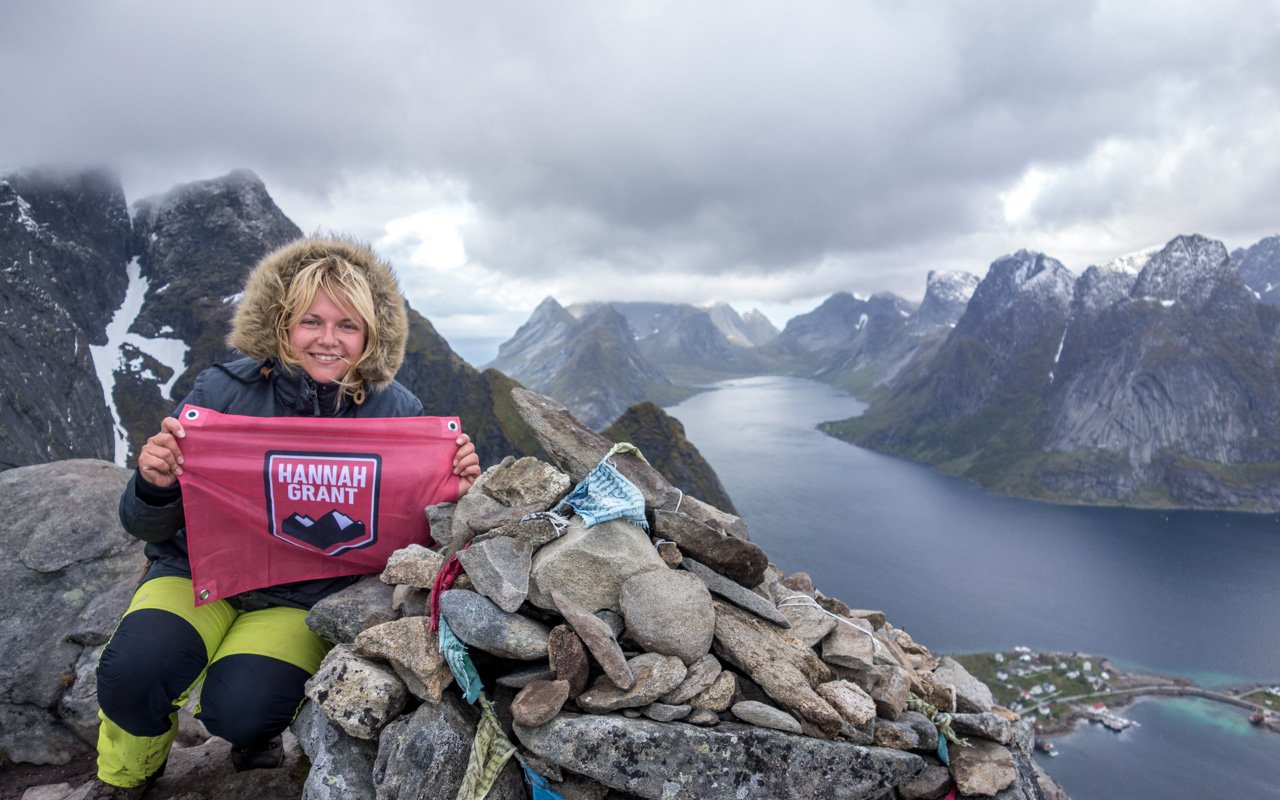
EAGLES ON A TRIP – A TREK IN EAGLES ON THE WAY – SLOVENIA
A three-member team consists of Markéta, Michal and Vítek (in a camper van) who had decided to change their lives and leave a daily stereotype behind. They started to do what they enjoy – to travel, camp, discover new places and get to know new people, simply to live. Together, they travelled over almost the whole Europe in a year.
A co jsme po cestě zažili a co se nám přihodilo:
- projeli jsme Slovensko, Maďarsko, Srbsko, Rumunsko, Bulharsko, Řecko, Albánii, Montenegro, Chorvatsko, Slovinsko, Rakousko, Itálii a Švýcarsko
- v zahraničí jsme najeli dle našich propočtů 18 412 km – nejvíce kiláků jsme najeli v Řecku
- nakrmili jsme několik hladových toulavých psů
- dodržujeme předpokládaný rozpočet na jídlo (150 Kč / den / 2 os.)
- pitnou vodu si čepujeme tam, kde je to možné a neplatíme za ní
- málem jsem šlápla na hada – 2x !
- zdolali jsme několik vrcholů
- koupali jsme se v termálním pramenu, kde se při zkouškách zrelaxovával Herkules
- byli jsme v nejkrásnějším podzemním místě na zemi
- prolezli jsme zasněženou soutěskou a až potom zjistili, že tam byl zákaz vstupu
- koupali jsme se v osmi stupňové tyrkysové Soče, ale jen chvíli
- ve Švýcarsku jsme skoro zdolali ledovec (překazilo nám to počasí)
- matlali jsme na sebe bahno v termálních loužích v Bulharsku
- koupali se na nejhezčích plážích Evropy
- zdolali jsme visutý most ve Švýcarsku
- zvládli jsme spaní na divoko i v Chorvatsku
- pozorovali jsme dechberoucí západy slunce na Lefkádě
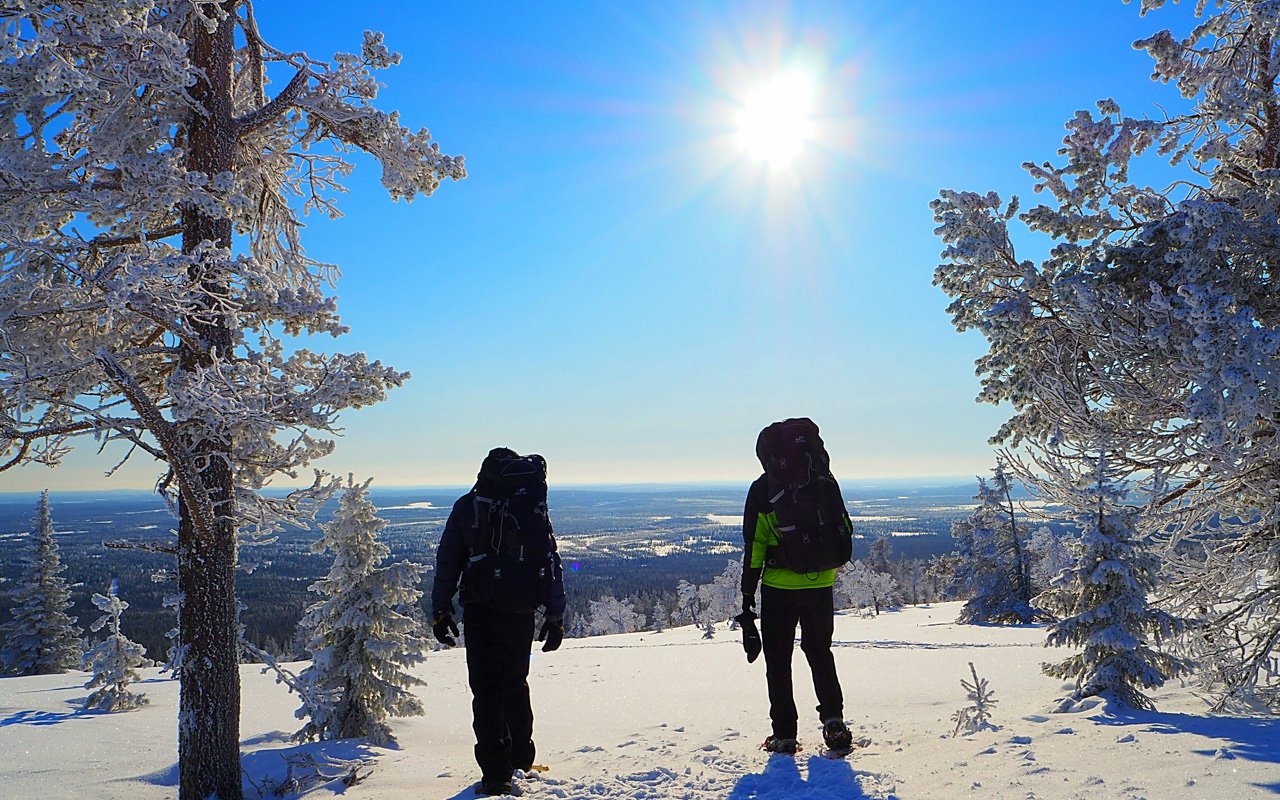
DISCOVER NOW – LAPLAND
At the end of the summer, where we were buying the flight tickets, everything seemed perfect and nothing had suggested we could have got cold feet about leaving for Lapland, a subarctic area in Finlad, in the winter. However, it happened and we suddenly had a feeling we needed sunshine, beaches and palm trees, so we decided to exchange the flight tickets and go to Bali. Luckily, the airlines didn’t look in favour upon this idea of ours. However, today we already know the trip to Lapland was the best decision ever!
And now it’s time to put on snowshoes and visit Lapland with us. It offers especialy the virgin nature, northern lights, thousands of lakes and millions of saunas. But there are also people living in those endless forests, plains and hills – and most of them in Rovaniemi city. It’s a gateway to the polar periphery and gathers everything Lapland has to offer at one place. For example the Santa Claus Hotel with a roof-top sauna offering a view of northern lights.
We visited three national parks – Risintunturi, Pallas-Yllästunturi a Pyhä-Luosto. They are all different but have one thing in common – they are full of adventure. You can take your time and stay there as long as you want yet you won’t find yourself bored. There are thousands of spruces between birch groves and you can clim fromb this subarctic forest up to the tunturit and enjoy views of neverending fairytale wasteland. And the nature isn’t the only thing which reminds you of a fairytale.
You’ll spend nights away from civilization in picturesque snowy cottages where you can perfectly disconnect. In these log cabins, you light with candles and fall asleep staring into a flaming fire. We usually chose our tracks at the place and each of them eventually seemed as the best trail ever to the north of Liberec. The weather was quite mild, there were sunny days and blizzards, but what was the most important – the whole time of our trip we could see the full moon was coming and thanks to its shine, days had an estimated 24 hours. Normally, we wouldn’t have been very excited, standing in the middle of a white plain, lost, in -15 °C. But there we relished any minute of it, delighted by the star sky and northern lights above us. In fact, we were happy we had got lost and didn’t want it to end. But everything has its time and eventually we found the log cabin where we were supposed to stay overnight. Now it’s necessary to say how it is possible that the group of such experienced polar explorers got lost. Yes, you are right, it wasn’t our fault. Somebody had turned the signpost the other way around.

ONDŘEJ ŠPERKA – OUT OF THE COMFORT ZONE
We’ve enjoyed enough east, this year let’s head off for the north. Our beloved north. Our dream Spitzbergen. And what is a journey without sleeping in ditches and forests behind petrol stations.
So we hitchhiked do Oslo. With climbing irons, ice axes and signs with a picture of a polar bear – who would’t not give these two adventurers a lift?
Our backpacks were reaching almost 30 kilograms in weight, with the guns, dry dog food, food for us for two weeks, equipment… Every gram was important and as weight was the main factor to consider when choosing a proper tent, we had decided for Hawk 2. This Hannah’s flagship weighs only 2 kilos!
The north welcomed us with very strong wind right on the first day which gave the tent an opportunity to prove itsef. As it is elongated, we had to pitch it up in the direction opposite to wind. This 3-pole tent passed the first test perfectly and we knew it was one of few certanities we had on our way to Pyramiden.
Marching fourteen hours a day wasn’t an exception and at those moments we truly appreciated how easy and quick it was to pitch it up. You simply attach the inner tent with hooks to the three poles, which stretches it out. I always found this part, when a crumpled thing immediately turned into a precisely tightened inner tent, really amusing. Then just cover it with a flysheet which you clip into the corners and tighten with the pegs. It all takes just two minutes and even one person is perfectly able to do it on their own.
At the beginning, we kind of struggeled with the space there as the tent only has one large living area. It was necessary to figure out a way of placing our fully loaded backpacks and boots as well as keeping a free passage to get in/out comfortably. But in the end it wasn’t a problem at all and everything fit in there pretty well, including the two of us, and I should add we are both tall guys. Unfortunetly, there was no space left for Rudek, but we needed him to drive bears off, anyway.
During the first three month of its life, the tent also made it to Scotland with us. There it endured the biggest test – a huge storm took us by surprise nearby the sea and we could have just prayed not to fall off the cliff. But everything was okay.
HANNAH GRANT 2016

ŠUMAVA CROSSING WITH ROZÁRKA
It’s been a few years since we got the idea to cross Šumava. If you don’t get lost, the trail is about 160 kilometres. It starts near Nýrsko, namely in Hojsova Stráž, and it finishes in Lipno nad Vltavou. But every year something came up at the last moment, frustrating the whole trip – Julča’s illness, getting Róza – a puppy which wouldn’t have managed it given she was 4 months old at that time, floods, and so on and on and on… But this year we’ve finally made it!
At the Pilsen train station, we got on an express train heading to Železná Ruda and we got off in Hamry – Hojsova Stráž. Not surprisingly, we got off the trail before reaching the first kilometre and our travel was at least one hour longer on the first day. On Saturday and Sunday, the weather was boiling hot and we travelled on neverending asphalt roads, but our reward were beautiful sceneries of the Šumava nature – Bílá Strž waterfall, Černé (Black Lake) and Čertovo (Devil’s Lake) lakes and Poledník. We stayed overnight in an emergency campsite nearby Modrava village and on Monday morning we were woken up by lightnings and thunders. It rained pretty heavily but our Hannah tent passed the test. Unfortunately, the wether didn’ get any better during Monday so we saw Černá Hora (Bohemian Forest), Vltava spring and Bučina through fog, hiding in our ponchos.
After a calm sleep in another emergency campsite, Strážné, we were in the middle of the journey. We followed the red touristic sign which led us to Nové Údolí, which we called the Earth’s paradise. Another destination was Třístoličník mountain top which we missed by four kilometres. After checking out the satnav we realized our mistake and returned. Luckily, we found the correct turning and started one of the most amazing climbs – a narrow path, rocks, beautiful views and most importantly, no asphalt! However, reaching the top crowded with “tourists“ brought us quickly back to the reality, so we quickly escaped and headed off for Plechý, where there is no road up the hill. We climbed up in an hour, took a selfie with a Hannah flag and went down, following yellow touristic signs. But it finished after a couple of metres and was replaced by a “at one’s own risk” path leading to Plešné lake and an emergency campsite below it. After diner, we agreed on Monday’s and Tuesday’s walks being the most beautiful parts of the whole trip so far and we didn‘t change our minds about that even after finishing it.
We conquered Smrčina and Hraničník in the last two days and than we arrived to the Czech sea – Lipno. We arrived there on Thursday 1st September at 3:50 p. m. and confirmed walking 160 kilometres.
LUKÁŠ KNYBEL – MATTERHORN
One of the most and popular mountains in Europe, the Matterhorn, became Lukáš’s target. A father of two, husband, working full-time, he found valuable time to train hard for the demanding climb. He made his dream come true and celebrated his 30th birthday accompanied by a mountain guide on the top of the Matterhorn.
A campsite Täsch became our home and we set out from there through Zermatt to an acclimation hike to Breithorn. We went up to Klein Matterhorn by a cabin lift to make the journey easier a little, and from there directly to Breithorn. We continued along its ridge and I rejoiced at the view of its beauty. Then we made a short glacier hike which, surprisingly, terrified me more than being up there.
On Tuesday, we intended to get below the Matterhorn and find a place to spend the night. We rejected the Hörnli hut because it just didn’t feel right without stars above our heads. We took a cabin lift up to Schwarzsee and visited a small sanctuary dedicated to the Virgin Mary there. As the altitude was going up, the number of tourists was going down and we got to a signpost below the Hörnli hut. Than we started descending into an area where we could spend the night legally. We needed to fall asleep quite early.
Briskly through a labyrinth
The Day. The alarm clock rang, we cooked, packed the things and hid our sleeping stuff under rocks. Before 5 a. m. we put on our sit harnesses at the Hörnli hut. We could see the others’ lights above us. The rough beginning took me by surprise, but then the situation calmed down for about an hour in a stone labyrinth of the Matternhorn. It’s wasn’t easy to find the right way. We cought up the first couples before Solvya and since then we weren’t alone all the way to the top. There was more and more snow so we put on our climbing irons. I totally enjoyed the snow field. And another dream come true just before the top. A steep slope, climbing irons on our feet, an ice axe in my hand and random refreshing showers of falling ice – excellent. Then there was probably the most difficult part, luckily with many hemp ropes around. It was a combination of the pace, exposed places and work of my hands (which could have done better). The last few hundreds to the top passed really quickly. I was really enjoying myself, the view was incredible and it was warm, almost hot… And when a statue of St. Bernard emerged in front of Vojta, I couldn’t believe we had made it to the top. I was speechless and cried a tear of joy behind Vojta’s back.
Thousands metres back to reality
It was 10:30 p. m. and I was standing at the top of the Matterhorn, moved. It was starting to be windy but it didn’t matter at all. It had worked out! The descent was quick at the beginning but at one moment everyone stopped because of strange noise. Some rocks fell down just few metres to the left which proved what they write about risks on the Matterhorn. No wonder though, the sun had already warmed up the mountain and there was quite a stream at the place where the rocks had just fallen down. We could see we were getting closer to the Hörnli hut and we fancied a beer. We touched beer cans just before 4 p. m. but soon after we started descending again and three hours later we were 3,500 metres lower, in Zermatt. There was a huge party going on, people holding beer cans, wearing the Matterhorn T-shirts and the two of us looked like a kind of apparition. This comeback to reality was harsh and we tried to get out of the crowd. We were feeling amazing when coming back to the campiste at dawn.
.
ROMANIAN FAIRIES – HITCHHIKING TO ROMANIA
Two girls nicknamed “Romanien fairies” came up with a crazy idea – to hitchhike to Romania and walk Făgăraș Mountains and on the way back also the Slovenian Tatras, with full equipment. And the girls who had barely known each other before their trip have become a great dream team and have had plenty of interesting experiences.
Let’s say me and Terka had met about six times before we set off. We barely knew each other but I had a feeling everything was going to be alright. We started from a petrol station near Plzeň where we discovered the beuty and simplicity of hitchhiking. The first driver took us to Rudná and in a short moment we were speeding to Brno. We stayed in Moravia for a couple of days and then we moved to Tatras, which we had already been incredibely looking forward to. We were really lucky as another driver took us from Slovakian borders all the way to a campsite in the Tatra Mountains where we had planned to go. There we made day trips and enjoyed raspberries, chamois, sunsets, helicopters, winked at hot rescuers and pilots and we even stayed overnight at the Zbojnická hut once because we hadn’t had enough time to get down to our campsite before sunset. But it was totally worth the morning in the mountains!
It was time to move to wilder Făgăraș Mountains, the highest mountain range in Romania. We bought some food supplies, adding 5 extra kilos to those 20 we had already had on our backs, and we were facing a week outdoors, crossing the range ridge, sleeping in tents and cooking with a propane stove.
We spent, wearing all the equipment, nine days in total in the mountains, walked abou 100 kilometres, climbed up tens of hills, met wild horses, donkeys, sheep with sheperds, wild dogs and a bear. You name it. We wanted to go to the Black Sea, to relax and do nothing for a while. We went to a village called Vama Veche which is said to be a kind of hippie place. On our way back we were incredibly lucky when hitchhiking – we stopped a guy who was going to Norway. Although we wanted to get to a city about 100 kilometres far, we quickly checked out his satnav and hinted we could use a ride 1.100 kilometres further. And he took us all the way to Prague! Our Mums were pretty surprised when we appeared at home three days earlier. Long story short, we’ve experienced a super adventurous month, got million experiences and all of this was just incredible.

